Documentation Center of Cambodia
A History of Democratic Kampuchea (1975-1979)
2020
Chapter 2: Who Were the Khmer Rouge? How Did They Gain Power?
1. The Early Communist Movement
2. The Creation of the Khmer People’s Revolutionary Party (Kprp)
3. The Workers’ Party of Kampuchea (Wpk)
4. The Communist Party of Kampuchea (Cpk)
Chapter 3: The Khmer Rouge Come to Power
1. The Khmer Rouge March Into Phnom Penh
2. The Evacuation of the Cities
Chapter 4: The Khmer Rouge Come to Power
2. A Voice From a Civil Party Doctor
3. Witnesses in the Eccc on the Massacre at Tuol Po Chrey
Chapter 5: The Formation of the Democratic Kampuchea Government
2. Prince Sihanouk Returns to Cambodia
4. Prince Sihanouk Resigns as Head of State
5. Organizational Structure of Democratic Kampuchea
6. Changing the Party’s Anniversary
Chapter 6: Administrative Divisions of Democratic Kampuchea
Chapter 7: The Four-Year Plan (1977-1980)
Chapter 8: Daily Life During Democratic Kampuchea
1. The Creation of Cooperatives
Chapter 9: The Security System
Chapter 12: The Fall of Democratic Kampuchea
1. Three Reasons Why Democratic Kampuchea Fell
1. Eccc Legal Principles, Concepts, and Laws as Derived From the Eccc Law and References
The Accused’s Rights of Defence:
Chapter 15: Apologies by Kaing Guek Eav, Alias “Duch”
Chapter 16: Impact of Mass Atrocities, Genocide, and Human Rights Violations on Individual People
Regulations for Guards at S-21
[Front Matter]
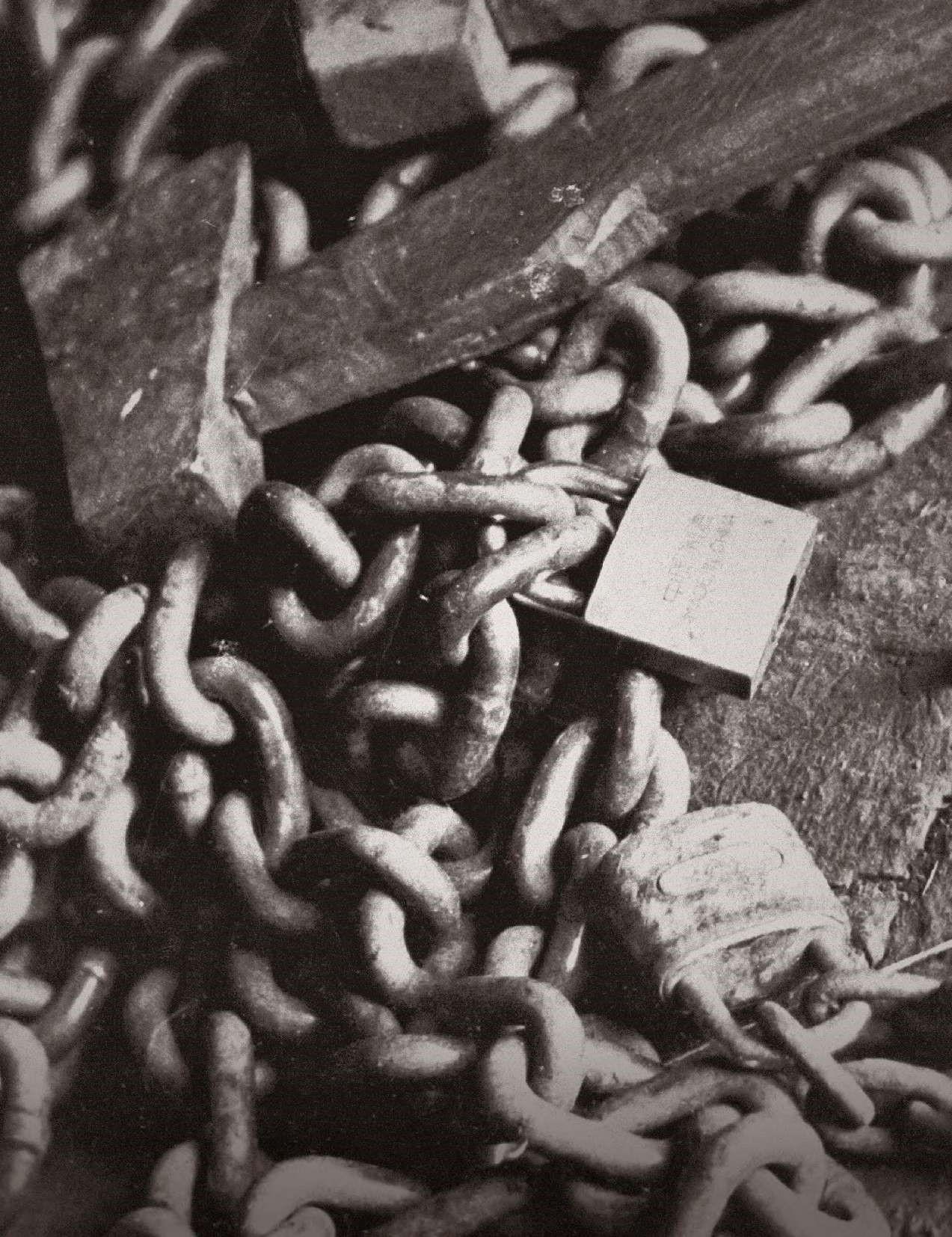
[Title Page]
A HISTORY
OF DEMOCRATIC KAMPUCHEA
(1975-1979)
DOCUMENTATION CENTER OF CAMBODIA 2020
2ND EDITION
[Epigraph]
“Cambodia will never escape her history, but she does not need to be enslaved by it”.
[Publisher Details]
JUSTICE & MEMORY
Documentation Center of Cambodia
Villa No. 66, Preah Sihanouk Blvd.,
Sangkat Tonle Bassac, Khan Chamkar Mon
Phnom Penh 12301
Cambodia
t: +855 (0) 23 211 875
e: dccam@online.com.kh
w: www.dccam.org
A HISTORY OF DEMOCRATIC KAMPUCHEA
1. Cambodia-History-1975-1979
SECOND EDITION, 2020
Pheng, Pong-Rasy
Chandler, David
Dearing, Christopher
Sopheak, Pheana
FIRST EDITION, 2017
Dy, Khamboly
Chandler, David
Cougill, Wynne
Funding for this project was generously provided by Deutsche Gesellschaft fur Internationale Zusammenarbeit (GIZ) GmbH, Civil Peace Service, BMZ and Swedish International Development Agency. Support for DC-Cam’s operations is provided by the United States Agency for International Development.
Disclaimer: The views expressed in this book are those of the authors only.
2020 by the Documentation Center of Cambodia.
Concept and book design: Stacy Marchelos, in conjunction with Double Happiness
Creations, Inc., Ly Sensonyla and Youk Chhang.
Photo captions: Dacil Q. Keo, Youk Chhang, Sopheak Pheana and Try Socheata.
A HISTORY OF DEMOCRATIC KAMPUCHEA (1975-1979)
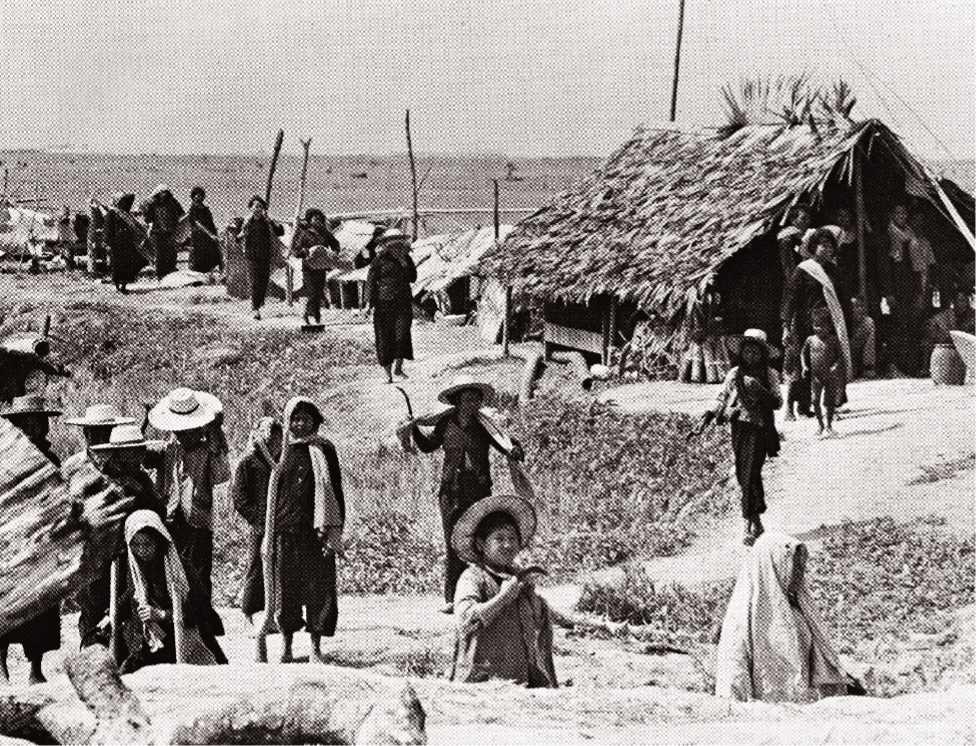
(Documentation Center of Cambodia Archives)
Foreword
Chinese diplomat Chou Ta-Kuan gave the world his account of life at Angkor Wat eight hundred years ago. Since that time, others have been writing our historyfor us. Countless scholars have examined our most prized cultural treasure and more recently, the Cambodian genocide of 1975-1979. But with this book, Cambodians are at last beginning to investigate and record their country’s past. This new volume represents several years of research and marks an updated edition of the original text, which was authored by a Cambodian.
Writing about this bleak period of history for a new generation may run the risk of re-opening old wounds for the survivors of Democratic Kampuchea. Many Cambodians have tried to put their memories of the regime behind them and move on. But we cannot progress—much less reconcile with ourselves and others—until we have confronted the past and understand both what happened and why it happened. Only with this understanding can we truly begin to heal.
This textbook is intended for high school students; however, it can also be helpful for adults. All of us can draw lessons from our history. By facing this dark period of our past, we can learn from it and move toward becoming a nation of people who are invested in preventing future occurrences of genocide, both at home and in the myriad countries that are today facing massive human rights abuses. And by taking responsibility for teaching our children through texts such as this one, Cambodia can move forward and mold future generations who work to ensure that the seeds of genocide never take root in our country again.
Youk Chhang
Director
Documentation Center of Cambodia
Acknowledgements
The Documentation Center of Cambodia (DC-Cam) is proud to announce the publication of the second edition of its history textbook, The History of Democratic Kampuchea. The second edition includes new chapters that discuss post-genocide justice as well as new information and stories that have come out in proceedings and decisions of the Extraordinary Chambers in the Courts of Cambodia (ECCC). The second edition provides readers with not only historical information about the Khmer Rouge regime, but also basic facts and concepts about the establishment, organization, and work of the ECCC.
As the authors (Pheng Pong-Rasy, Sopheak Pheana and Christopher Dearing) state in their book, “[t]he ECCC’s judgments helped the Cambodian people and the world come to a better understanding of what led up to and ultimately occurred during the Khmer Rouge regime.” With this book, it is hoped that some of this information can now be incorporated into new classes and lessons for Cambodian students and the public.
None of this would be possible without the incredible support of a number of important stakeholders. DC-Cam would like to thank the Cambodian Government for initiating and supporting the teaching of the Cambodian Genocide since the early 1980s. The Government’s continued support for the education of the younger generation has been crucial to the country’s future.
DC-Cam would also like to thank the Ministry of Education, who has been a long-time partner with DC-Cam. I hope this book will help countless teachers and students study the country’s dark past.
Thank you to the donors, both those who specifically funded the publication of this book as well as those who provide general support to DC-Cam. Funding for this book was generously provided by Deutsche Gesellschaft fur Internationale Zusammenarbeit (GIZ) GmbH, the Civil Peace Service, the Federal Ministry for Economic Cooperation and Development (BMZ), and the Swedish International Development Agency (Sida). DC-Cam would also like to thank the United States Agency for International Development (USAID), which continues to provide generous support to DC-Cam’s work.
Last, but not least, DC-Cam would like to thank the five million Khmer Rouge survivors. Their ongoing effort to re-tell their stories ensures this history will not be forgotten. This book is dedicated to them.
The history of the Khmer Rouge must belong to each and every person in Cambodia, not only as a matter of right, but also obligation. A vibrant democracy depends on the equal rights of all citizens to fully participate in its affairs; however, citizens bear an equal responsibility to be informed stakeholders. A citizenry that is ignorant, dismissive, or unappreciative of its past only invites the hardships and inhumanity that plagued the generations before. Cambodia’s future depends on education, both as a civil right as well as an individual moral obligation. This book will give students and the public one more tool to realize these benchmarks of individual and collective maturity.
Youk Chhang
Director
Documentation Center of Cambodia
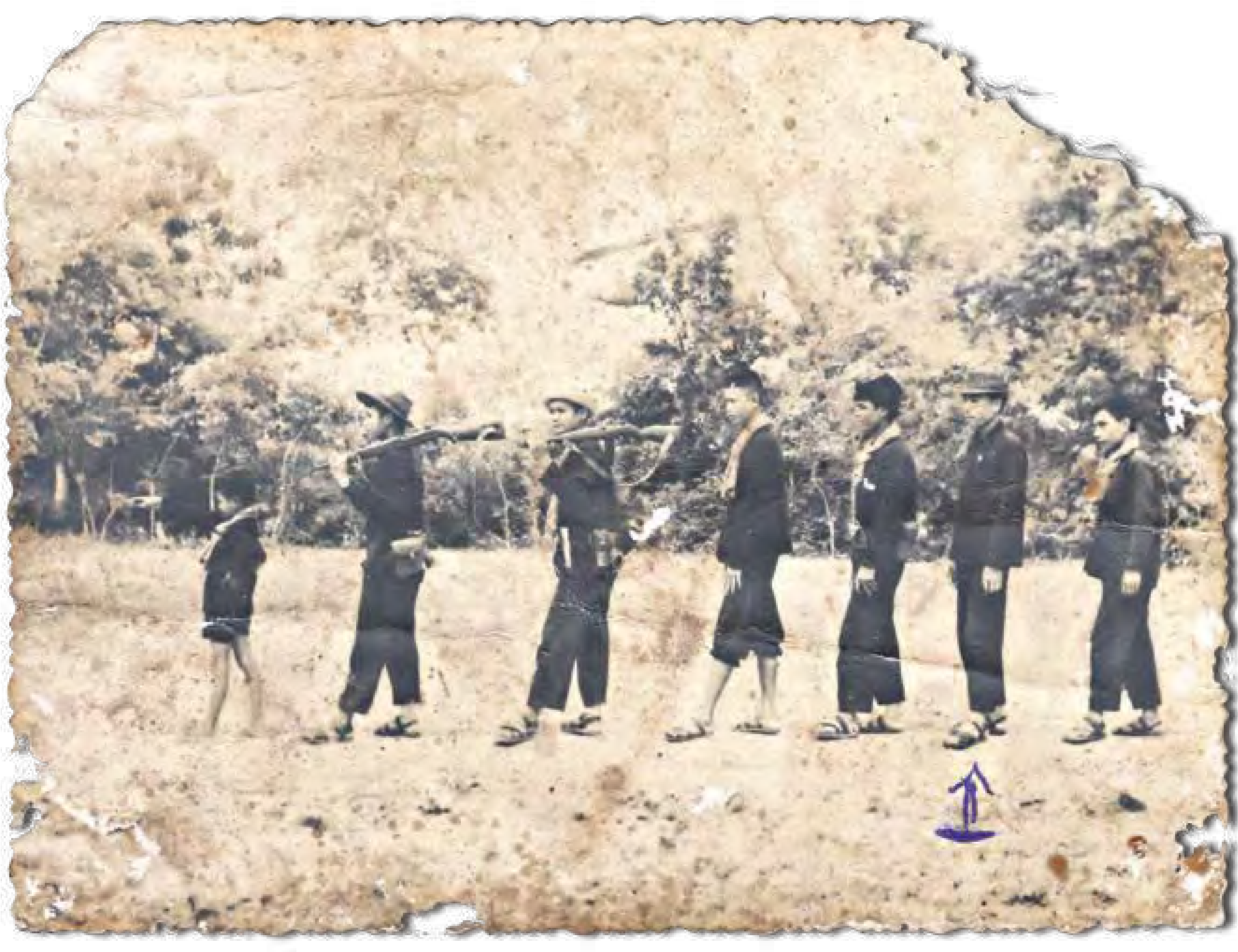
The photo belongs to San Sok who joined the [Khmer Rouge] revolution in 1972.
From left to right: Ol, Im, Pheng, Or, Nhep (Sok), San Sok, Phlouch. They were responsible to evacuate the people for Prey Kabas district, (District 55), Takeo province, 1972.
(San Sok Collection/Documentation Center of Cambodia Archives)
Second Edition
Christopher Dearing, Pheng Pong-Rasy, Sopheak Pheana
This new edition includes a significant reorganization of chapters to explain new historical facts and stories, as well as to address new chapters related to post-genocide justice. The authors re-organized chapters 3 and 4, which discuss the beginning of the Khmer Rouge regime. These chapters incorporate new information about the forced movement of peoples in Cambodia and they include excerpts of eye-witness accounts of this history with a particular focus on the suffering of the Cambodian people. Using information from the Extraordinary Chambers in the Courts of Cambodia (ECCC) Judgment in Case 002, as well as testimony offered by Civil Parties, these chapters will provide a more detailed account on what happened during the early period of the Khmer Rouge regime.
The authors also included new chapters addressing the establishment and operation of the ECCC. Chapter 13 addresses the establishment, organization, and jurisdiction of the ECCC, with a focus on both the circumstances that led up to the ECCC’s establishment as well as the key legal concepts and principles that make up the ECCC’s mandate and normative rules. The chapter also provides a basic overview of the key components, officials and stakeholders in the ECCC’s work. Chapter 14 provides an overview of the four cases of the ECCC, with a summarized description of the alleged crimes, the circumstances of the accused, and any significant judgments and/or sentences rendered up to the date of publication. Chapter 15 provides excerpts of one of the accused’s apologies to victims, the court, and the public, and chapter 16 provides brief excerpts of different testimonies by victims, survivors, and witnesses at the ECCC.
The new chapters addressing the establishment, work, and testimony presented at the ECCC are a critical part of the story of the Cambodian nation’s struggle to confront its past. The work of the ECCC may have principally focused on the criminal prosecution of senior leaders and those most responsible for the crimes committed during the Khmer Rouge regime, but the court’s work has been significant in many other ways that influenced the Cambodian people’s struggle with this history. The ECCC’s judgements helped the Cambodian people and the world come to a better understanding of what led up to and ultimately occurred during the Khmer Rouge regime, and the ECCC’s rules, procedures, and decisions became reference points for improving how the rule of law is practiced and understood in Cambodia.
Finally, the court offered a sense of closure. Closure in this sense, does not mean compensation, reconciliation or reparations (at least on an individual level). Closure is a process that will have a different definition relative to each individual survivor or loved one’s circumstances, and collectively, it can take generations. The ECCC’s work was never expected to achieve national or collective closure, but we should acknowledge its work in supporting the process for closure. This book is dedicated to supporting closure through the memorialization and education of this history for the youth today and the generations to come.
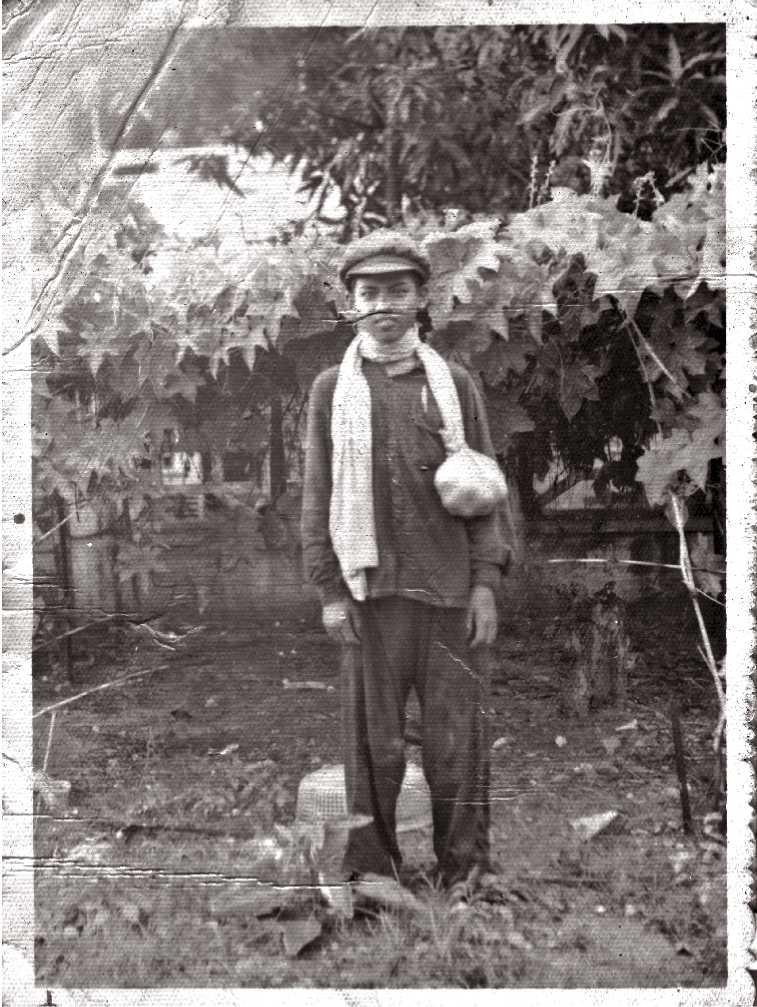
Abbreviations and Terms
| Angkar Padevat | The leaders of the Communist Party of Kampuchea |
| CGDK | Coalition Government of Democratic Kampuchea |
| CIA | U.S. Central Intelligence Agency |
| CPK | Communist Party of Kampuchea |
| DK | Democratic Kampuchea |
| ICP | Indochinese Communist Party |
| KGB | Komitet Gosudarstvennoi Bezopasnosti (Soviet Secret Police) |
| KPNLF | Khmer People’s National Liberation Front |
| KR | Khmer Rouge |
| KPRP | Khmer People’s Revolutionary Party |
| PRK | People’s Republic of Kampuchea |
| RGC | Royal Government of Cambodia |
| UN | United Nations |
| UNTAC | United Nations Transitional Authority in Cambodia |
| WPK | Workers’ Party of Kampuchea |
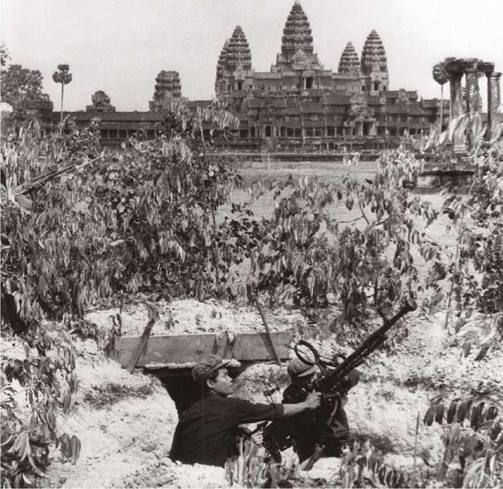
Chapter 1
Summary
“Khmer Rouge” was the name King Norodom Sihanouk gave to his communist opponents in the 1960s.[1] Their official name was the Communist Party of Kampuchea (CPK), which took control of Cambodia on April 17, 1975.
The CPK created the state of Democratic Kampuchea in 1976 and ruled the country until January 1979. The party’s existence was kept secret until 1977, and no one outside the CPK knew who its leaders were (the leaders called themselves “Angkar Padevat”).
A few days after they took power in 1975, the Khmer Rouge forced perhaps two million people in Phnom Penh and other cities into the countryside to undertake agricultural work. Thousands of people died during the evacuations.
The Khmer Rouge also began to implement their radical Maoist and Marxist-Leninist transformation program at this time. They wanted to transform Cambodia into a rural, classless society in which there were no rich people, no poor people, and no exploitation. To accomplish this, they abolished money, free markets, normal schooling, private property, foreign clothing styles, religious practices, and traditional Khmer culture. Public schools, pagodas, mosques, churches, universities, shops and government buildings were shut or turned into (security centers) prisons, stables, reeducation camps and granaries. There was no public or private transportation, no private property, and no non-revolutionary entertainment. Leisure activities were severely restricted. People throughout the country, including the leaders of the CPK, had to wear black costumes, which were their traditional revolutionary clothes.
Under Democratic Kampuchea, everyone was deprived of their basic rights. People were not allowed to go outside their cooperative or assigned area. The regime would not allow anyone to gather and hold discussions. If three people gathered and talked, they could be accused of being enemies, resulting in their arrest and execution.
Family relationships were also heavily criticized. People were forbidden to show even the slightest affection, humor or pity. The Khmer Rouge asked all Cambodians to believe, obey and respect only Angkar Padevat, which was to be everyone’s “mother and father.”
The Khmer Rouge claimed that only pure people were qualified to build the revolution. Soon after seizing power, they arrested and killed thousands of soldiers, military officers and civil servants from the Khmer Republic regime led by Marshal Lon Nol. These groups of people were regarded as “impure.” Over the next three years, they executed hundreds of thousands of intellectuals; city residents; minority people such as the Cham, Vietnamese and Chinese; and many of their own soldiers and party members, who were accused of being traitors.
Secrecy was central to the operations of Democratic Kampuchea. The Khmer Rouge had a slogan: “Secrecy is the key to victory. High secrecy, long survival.”
Under the terms of the CPK’s 1976 four-year plan, Cambodians were expected to produce three tons of rice per hectare (and sometimes even higher yields) throughout the country. This meant that people had to grow and harvest rice all twelve months of the year. In most regions, the Khmer Rouge forced people to work more than twelve hours a day without rest or adequate food.
By the end of 1977, clashes broke out between Cambodia and Vietnam. Tens of thousands of people were sent to fight and thousands of them were killed.
In December 1978, Vietnamese troops and the forces of the United Front for the National Salvation of Kampuchea fought their way into Cambodia. They captured Phnom Penh on January 7, 1979.
The Khmer Rouge leaders then fled to the west and reestablished their forces in Thai territory, aided by China and Thailand. The United Nations (U.N.) voted to give the resistance movement against communists, which included the Khmer Rouge, a seat in its General Assembly. From 1979 to 1990, the U.N. recognized Democratic Kampuchea as the only legitimate representative of Cambodia.
In 1982, the Khmer Rouge formed a coalition with Prince Sihanouk and the non-communist leader, Son Sann, to create the Triparty Coalition Government. In Phnom Penh, on the other hand, Vietnam helped to create a new government—the People’s Republic of Kampuchea (PRK)—led by Heng Samrin.
The Khmer Rouge continued to exist until 1999 when all of its leaders had, by this time, defected to the Royal Government of Cambodia (RGC), or they were arrested or had died. But their legacy remains. Under Democratic Kampuchea, nearly two million Cambodians died from diseases due to a lack of medicines and medical services, starvation, execution, or exhaustion from overwork.[2] Those who lived through the regime were severely traumatized by their experiences.
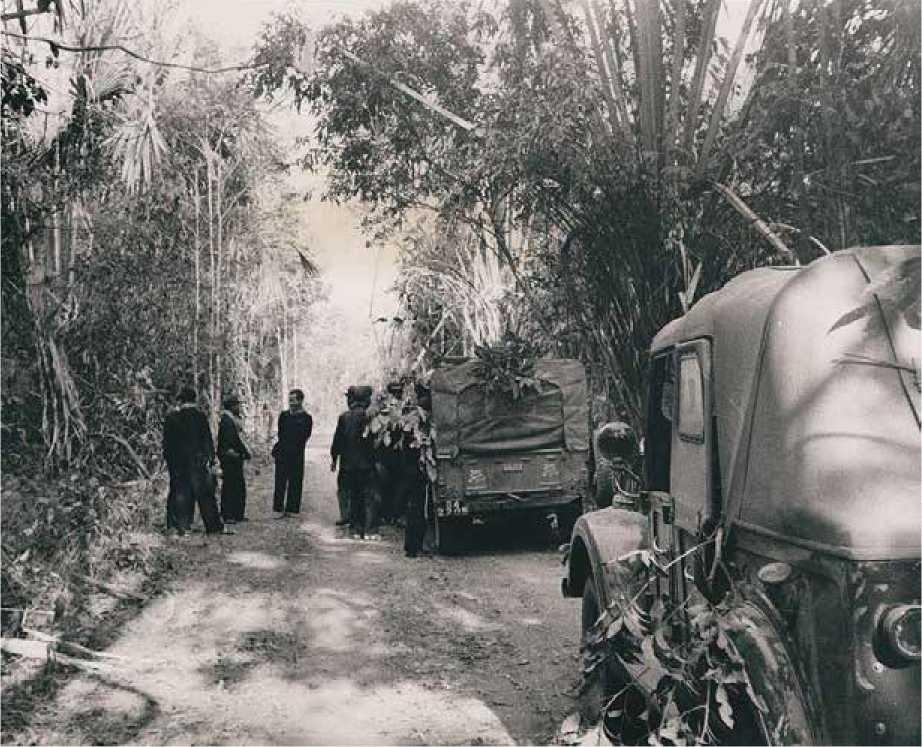
(Documentation Center of Cambodia Archives)

(Documentation Center of Cambodia Archives)
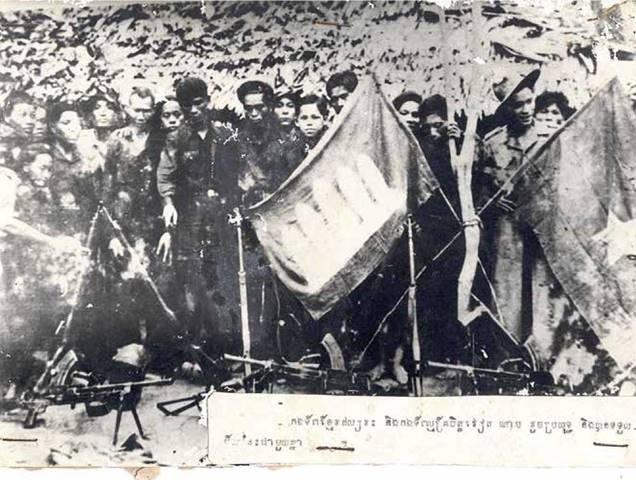
(Documentation Center of Cambodia Arch
Chapter 2: Who Were the Khmer Rouge? How Did They Gain Power?
1. The Early Communist Movement
The Cambodian communist movement emerged from the struggle against French colonization in the 1940s. In April 1950, during the First Indochina War,[3] 200 delegates assembled in Kampot province and formed the communist-led Unified Issarak Front, known as the Khmer Issarak. This group cooperated with Vietnam in struggling against the French.
The Front was led by Son Ngoc Minh (A-char Mien). He was a lay official at Unnalaom Pagoda. Chan Samay was the Front’s deputy and Sieu Heng was its secretary. Almost all of the Front’s members were Cambodians who spoke Vietnamese. Some of them became members of the Indochinese Communist Party (ICP), which was created in Vietnam.[4] Most of the Front’s new members were peasants drawn to the revolutionary cause. Others were nationalist students who became communists while studying abroad.
Some of these students would later become leaders of the Communist Party of Kampuchea (CPK). They included Saloth Sar(Pol Pot), Son Sen, Khieu Samphan and Ieng Sary. These men saw peasants and poor people throughout the world as enslaved and repressed by capitalism and feudalism. They thought a Marxist-Leninist revolution was the only way Cambodia could attain independence and social equality.
2. The Creation of the Khmer People’s Revolutionary Party (Kprp)
In 1951, as fighting against the French intensified in Indochina, the Vietnamese communists guided the formation of the Khmer People’s Revolutionary Party.[5] The members of its secret Central Committee were:
-
Son Ngoc Minh held the top position
-
Sieu Heng was in charge of military affairs
-
Tou Samouth (also known as A-char Sok, a former Buddhist monk from Kampuchea Krom) took charge of ideological training.
-
Chan Samay was in charge of economic matters.
When the first Indochina War ended in 1954, French forces withdrew from Indochina and Viet Minh[6] combatants withdrew from Cambodia. However, some Vietnamese military personnel and advisors remained in Cambodia. Concerned about the revolution’s security when the political system changed, Sieu Heng, Chan Samay and over a thousand KPRP cadres and activists fled to Vietnam, where theyjoined Son Ngoc Minh and others who had gone there earlier.
Sieu Heng soon returned to Cambodia accompanied by Nuon Chea (a member of the ICP who had been trained in Thailand and Vietnam) and other senior cadres. With the party’s leader Son Ngoc Minh in Hanoi, the KPRP was run by a temporary Central Committee. Sieu Heng was secretary and Tou Samouth was his deputy. Nuon Chea ranked number three and So Phim (who became chief of the East Zone during Democratic Kampuchea) was the fourth member. The management of the party was in the hands of a Vietnamese cadre, Pham Van Ba, who lived in Cambodia and claimed that Vietnam should continue to control Cambodian communist movements.
Tou Samouth took charge of the organization’s activities in urban areas, assisted by Nuon Chea and Saloth Sar (otherwise known as “Pol Pot”), who had recently returned from studying in France. The communists in Phnom Penh used Pol Pot as their link to establish a legal party called the People’s Party. This party contested the 1955 national election promised by the Geneva Agreements.[7] It was chaired by Keo Meas, a protege of Tou Samouth.
Pol Pot helped to formulate the party’s statutes and political program. He also made connections with the Democrat Party, which would compete with Prince Sihanouk’s newly established Sangkum Reastr Niyum (the People’s Socialist Communist Party) in the 1955 election. Pol Pot believed that the Democrats, who had anti-feudalist and anti-capitalist tendencies, would win the election and give the communists some political influence.
However, Pol Pot miscalculated badly. The Sangkum Reastr Niyum won all the seats in the National Assembly, while the People’s Party won only 3%. Sieu Heng soon came to believe that the communist cause in Cambodia was hopeless, for nearly everyone strongly supported Prince Sihanouk’s political programs rather than the idea of revolution. Moreover, some Issarak movements gave up their resistance and joined with Prince Sihanouk’s government.
In 1956, Sieu Heng secretly contacted the Prince’s Army Chief of Staff, Lon Nol, who offered him guarantees of safety. In 1959, Sieu Heng defected to the Sihanouk’s government, enabling authorities to pinpoint and arrest many clandestine KPRP cadres. According to Pol Pot, from 1955 to 1959, about 90 percent of the KPRP’s members were arrested and killed. By the beginning of 1960, only about 800 cadres remained active and only 2 rural party branches were still functioning fully:
-
The East Zone with its base in Kampong Cham province (led by So Phim); and
-
The Southwest Zone with its base in Takeo province (chaired by Chhit Choeun alias Ta Mok).
Tou Samouth, Pol Pot and Nuon Chea continued to run the party’s activities in Phnom Penh, with assistance from Ieng Sary and Son Sen, two other intellectuals educated in France.
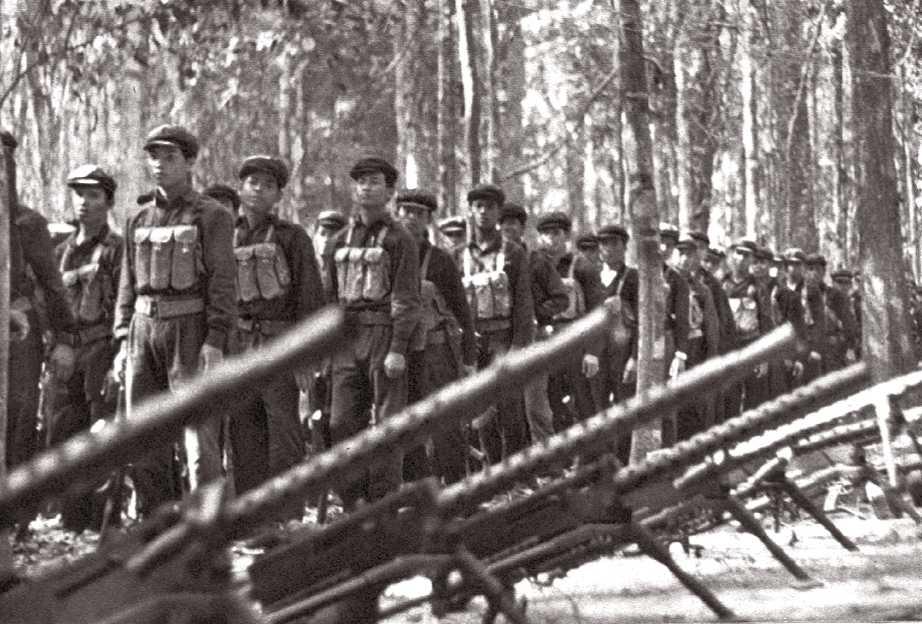
(Documentation Center of Cambodia Archives)
POL POT
(original name Solath Sar)
Pol Pot was born in 1925 (year of the ox) in Kampong Thom province. His father was a prosperous landowner. At the age of six, he went to live with his brother, an official at the Royal Palace. In Phnom Penh, he was educated at a series of French language schools and as a Buddhist novice.
In 1949, he was awarded a scholarship to study in Paris, but failed to obtain a degree. While in Paris, Pol Pot became a member of the French Communist Party and devoted his time to political activity.
Upon returning to Cambodia in 1953, he taught history and geography at a private high school and joined the clandestine communist movement. He married Khieu Ponnary in 1956. In 1960, he ranked number three in the then-Workers’ Party of Kampuchea. He was named its second deputy secretary in 1961 and party secretary in 1963. He later led the Khmer Rouge army in its war against the Lon Nol regime.
Pol Pot became prime minister of Democratic Kampuchea in 1976 and resigned in 1979, but remained an active leader of the Khmer Rouge.
He lived in exile, mainly in Thailand, until his death on April 15, 1998. His body was cremated on April 17, 1998.
NUON CHEA
(original name Runglert Laodi or Lao Kim Lorn, Nickname Khnuoch)
Nuon Chea was born in 1926 in Battambang province. In 1942, he attended high school in Bangkok, where he stayed in Benjamabopit Pagoda. In 1944, he studied law at Thammasat University in Bangkok, where he joined the Communist Party of Thailand.
He returned to Cambodia in 1950 and transferred his membership to the Indochinese Communist Party. He attended a training course in Hanoi in 1954 and returned home in 1955. He was elected deputy secretary of the WPK in 1960.
During Democratic Kampuchea, Nuon Chea was appointed president of the People’s Representative Assembly. He was also deputy secretary of the party’s Central and Standing Committees. He played a key role in security matters and as the second-highest party member, was responsible for enforcing the harsh policies laid down by the Standing Committee.
He went into exile on the Thai- Cambodia border in 1979 and defected with Khieu Samphan to the Royal Government of Cambodia after Pol Pot’s death in 1998. He was arrested in September 2007.
Over a decade later, Nuon Chea was tried by the ECCC, and he was found guilty of crimes against humanity, which was upheld by the Supreme Court Chamber in Case 002/01. He was sentenced to life imprisonment. Nuon Chea was also found guilty by the Trial Chamber for crimes against humanity, grave breaches of the Geneva Conventions of 1949, and genocide of the Vietnamese and Cham people. He appealed to the Supreme Court Chamber, which has not ruled definitively on his appeal given his death on August 4, 2019.
3. The Workers’ Party of Kampuchea (Wpk)
A secret KPRP congress was held on the grounds of the Phnom Penh railroad station on September 28-30, 1960. It was attended by seven members from the organization’s urban branches and fourteen members from its rural branches. The congress reorganized the party, set up a new political line, and changed its name to the Workers’ Party of Kampuchea (WPK). Tou Samouth became its secretary and Nuon Chea its deputy secretary. Pol Pot ranked number three at that time, and in 1961 he became the second deputy secretary.
After Tou Samouth disappeared in 1962, the party held an emergency congress in February 1963.[8] The congress elected Pol Pot as secretary. Nuon Chea, who had a higher position in the party, was not chosen as secretary because he was related by marriage to the defector Sieu Heng. Moreover, Nuon Chea was a loyal communist who wanted the WPK to be strong, so he did not compete with Pol Pot for the position. He remained deputy secretary and a powerful figure in the communist movement for over thirty years.
Soon after being named party secretary, Pol Pot took refuge at a Vietnamese military base in the northeast part of the country called “Office 100.” In 1965, he walked up the Ho Chi Minh Trail to Hanoi for talks with the North Vietnamese. He also visited China and North Korea. Pol Pot was treated more cordially in China than Vietnam and resented the idea that his party had to continue to be subservient to Vietnam.
4. The Communist Party of Kampuchea (Cpk)
In September 1966, after coming home, Pol Pot changed the party’s name to the Communist Party of Kampuchea (CPK) because he wanted to lessen Vietnamese influence and strengthen relations with China. The Central Committee at this time consisted of Pol Pot, Nuon Chea, Ieng Sary, Vorn Vet (a former teacher at Chamroeun Vichea High School in Phnom Penh), and Son Sen.
During the late 1960s, the CPK(whom Prince Sihanouk had dubbed the Khmer Rouge) gained more new members. Many of them lived along the Vietnamese border in remote areas out of the reach of the Prince’s armed forces. The party’s headquarters from 1966 to 1970 was in Ratanak Kiri province.

(Documentation Center of Cambodia Archives)
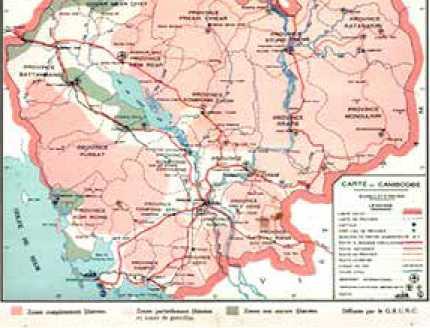
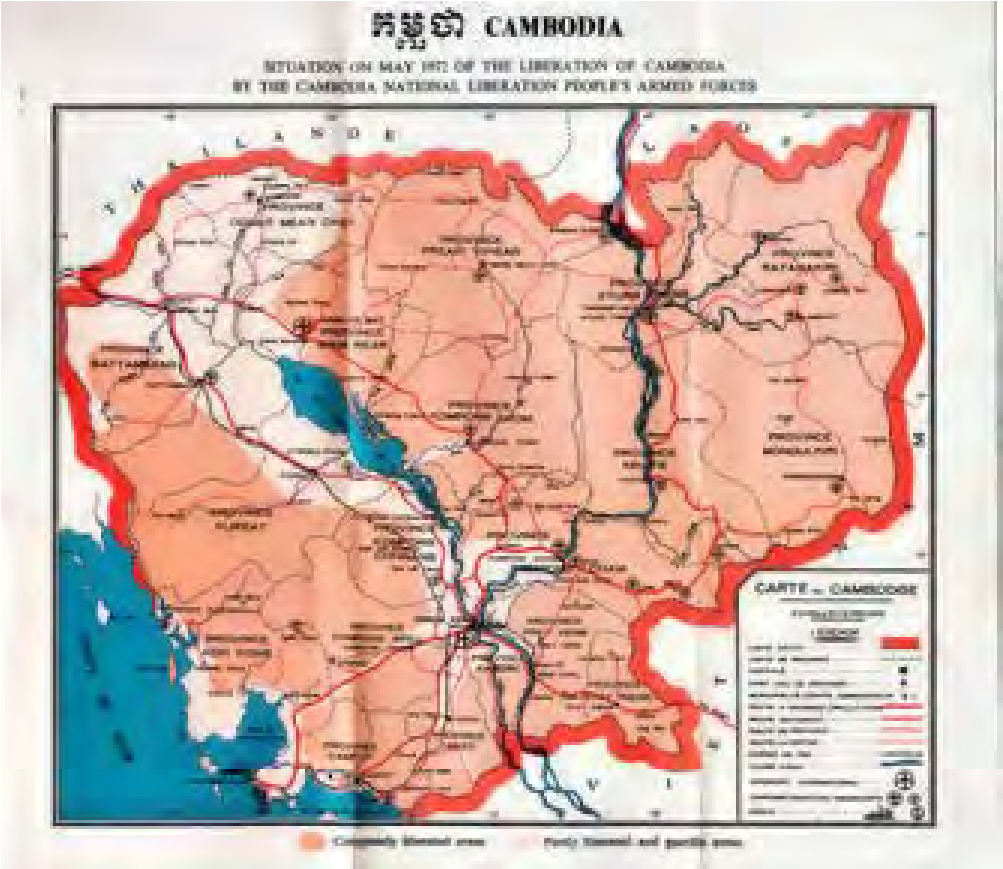
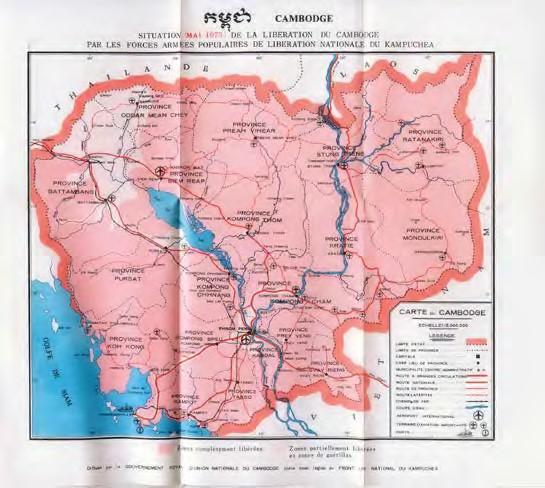
In March 1970, Marshal Lon Nol and his pro-American associates staged a successful coup to depose Prince Sihanouk as head of state. Soon after, the Viet Minh and Khmer Rouge gained control over much of the country. Tens of thousands of people refused to support the American-backed government—Lon Nol’s Khmer Republic—and joined the Khmer Rouge to help restore Prince Sihanouk to power. At this time, Prince Sihanouk went into exile in China. With the encouragement and support of China, North Vietnam and the CPK, he formed a National United Front of Kampuchea and a government in exile called the Royal Government of the National Union of Kampuchea.[9] Members of the CPK were members of this government.
These developments created opportunities for the Khmer Rouge. North Vietnam and China supported them, and Prince Sihanouk appealed to the Cambodian people to run into the marquis (forests) to help overthrow the Lon Nol government. And the heavy bombing of communist supply lines and bases by the Khmer Republic government, with assistance from the U.S., created more support for the Khmer Rouge, whose armed forces were increasing in number.
Vietnamese communist forces moved deep into Cambodia in 1970 and worked with the Khmer Rouge to recruit and train soldiers for the insurgent army, which grew from about 3,000 soldiers in 1970 to over 40,000 soldiers in 1973. Aided by the Vietnamese, the Khmer Rouge began to defeat Lon Nol’s forces on the battlefields. By the end of 1972, the Vietnamese withdrew from Cambodia and turned the major responsibilities for the war over to the CPK, although several thousand Vietnamese remained behind as technical advisors.
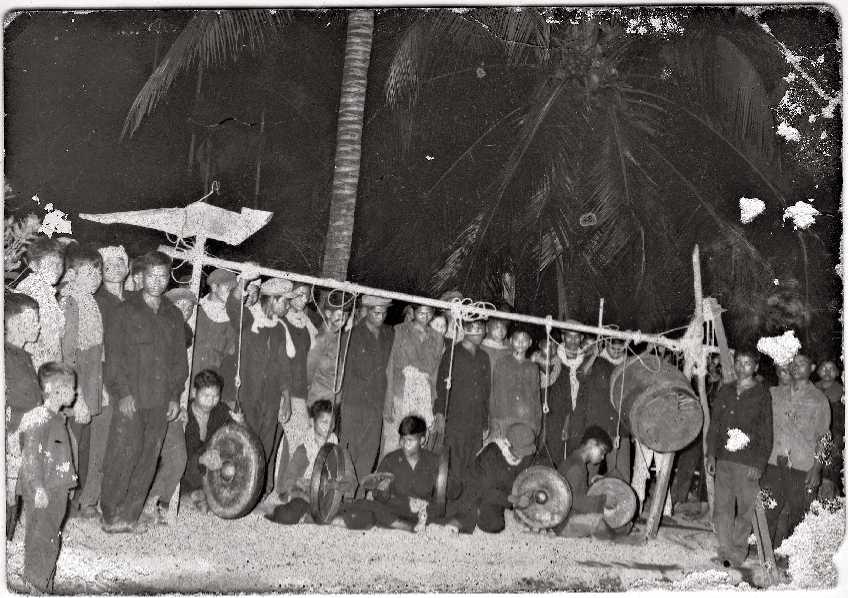
(Documentation Center of Cambodia Archives)
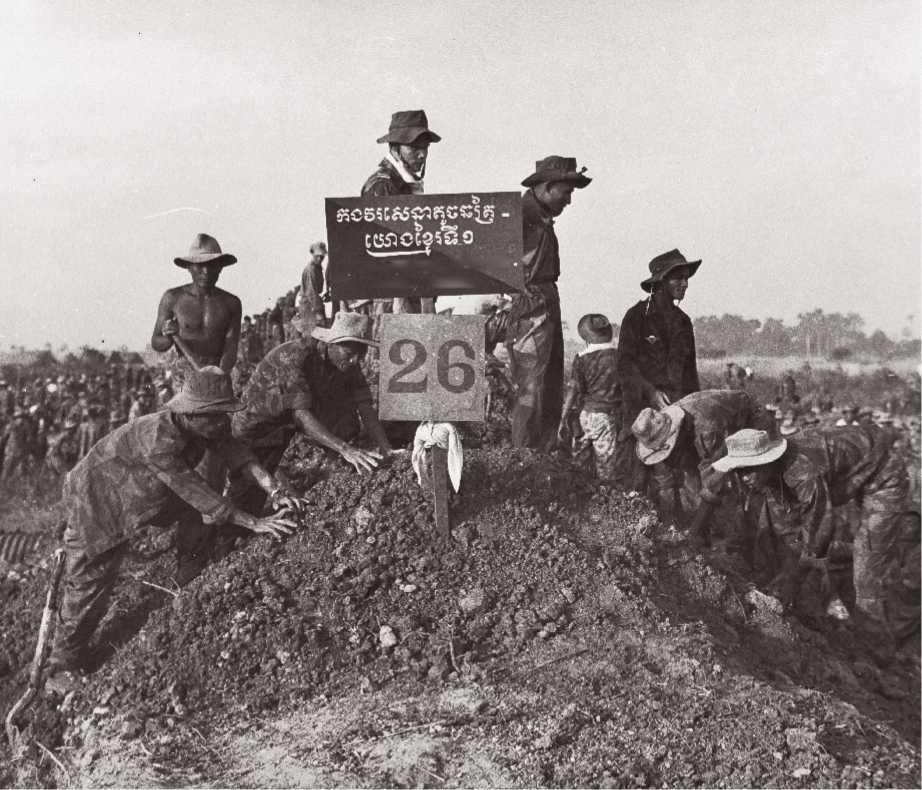
(General Les Kosem Collections/Documentation Center of Cambodia Archives)
From January to August 1973, the Khmer Republic government, with assistance from the U.S., dropped about half a million tons of bombs on Cambodia, which may have killed as many as 300,000 people. The bombing postponed the Khmer Rouge victory, while many who resented the bombings or had lost family members joined their revolution.
Khmer Rouge soldiers were more active and disciplined than those of the Khmer Republic government, and they were able to withstand shortages of food and medicine. Moreover, some “Khmer-Hanois”[10] returned to Cambodia to assist the Khmer Rouge. These men and women were given junior positions throughout the country, but by 1973, after most of the Vietnamese advisors had returned home, they were secretly assassinated under orders from the CPK leadership, who wanted the party to be free of Vietnamese influence.
By early 1973, about 85 percent of Cambodian territory was in the hands of the Khmer Rouge, and the Lon Nol army was almost unable to go on the offensive. However, with U.S. assistance, it was able to continue fighting the Khmer Rouge for two more years.
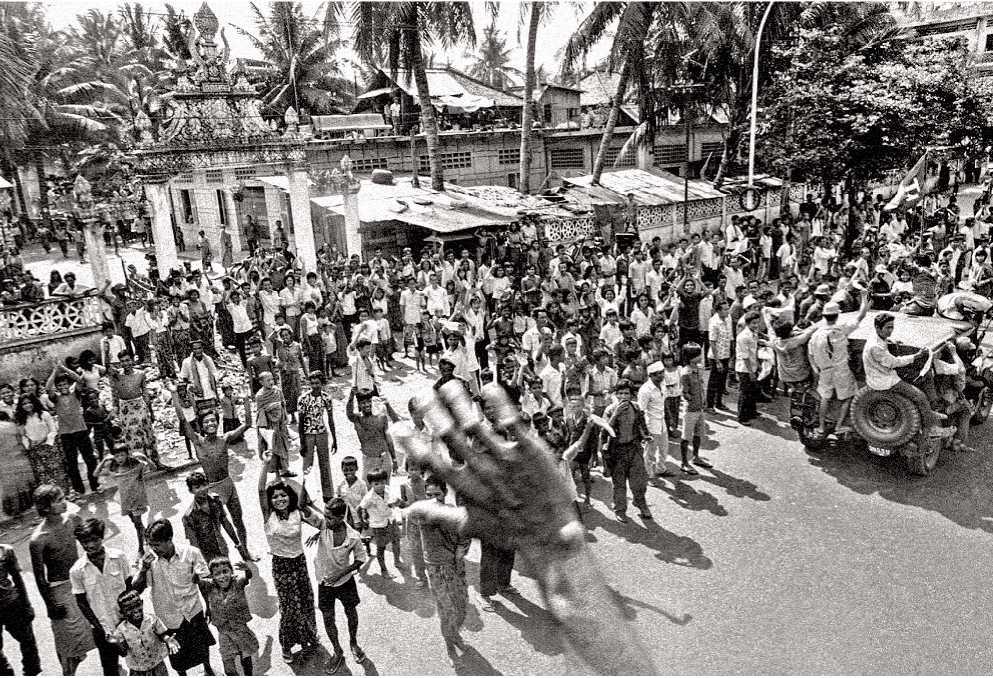
(Roland Neveu/Documentation Center of Cambodia Archives)
Chapter 3: The Khmer Rouge Come to Power
THE EVACUATION OF CITIES, FORCED TRANSFER AND THE MASSACRE AT TUOL PO CHREY
1. The Khmer Rouge March Into Phnom Penh
April 17, 1975, ended five years of foreign interventions, bombardment, and civil war in Cambodia. On this date, Phnom Penh fell to the communist forces.
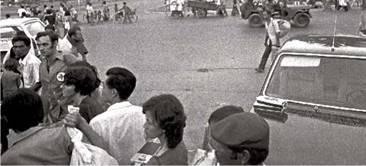
(Roland Neveu/Documentation Center of Cambodia Archives)
Black and green-uniformed rebels entered the capital from every direction. The city’s people crowded on the roads, cheering and waving white cloths. However, many people hid in their houses for fear that they would be arrested or shot, for the Khmer Rouge soon declared over the radio that they did not come to talk to anybody and would execute high-ranking officials and military commanders from the former government.[11]
Hundreds of foreigners and some Cambodians sought refuge in the Hotel Le Phnom (now Hotel Le Royale), which the International Red Cross had declared as a neutral zone. But when the Khmer Rouge invaded the hotel, foreigners, journalists, and perhaps a hundred Cambodians fled to the French Embassy. The Khmer Rouge ordered the Cambodian nationals taking shelter there to go to the countryside to work as peasants. Some 610 foreigners spent two more weeks in the embassy before they were taken to the Thai border by truck.
Soon after liberating Phnom Penh, the Khmer Rouge executed three senior leaders of the Khmer Republic government and hundreds of other officials and military officers. The three leading figures were Prime Minister Long Boret, Prince Sisowath Sirik Matak, and Lon Nol, brother of Lon Nol, who had left the country earlier with U.S. $1,000,000 as a pension. The United States had offered to take these three men to the U.S., but they refused to leave. Prince Sirik Matak wrote a letter to the U.S. Embassy:
I thank you sincerely for your letter and your offer to transport me to freedom. I cannot, alas, leave in such a cowardly fashion. As for you, and in particular your great country, I never believed for a moment that you would have the sentiment of abandoning a people which have chosen liberty. You have refused us protection and we can do nothing about it... I have only committed the mistake of believing in Americans. Please accept, Excellency, my dear friend, my faithful and friendly sentiments.
2. The Evacuation of the Cities
Most of the people in Cambodia’s cities believed they would live in peace under their new rulers, and that everyone would work together to reconcile the country. But a few hours after they captured Phnom Penh, Khmer Rouge soldiers began firing into the air as a signal to leave town. Residents were notified—very often at gunpoint—that they had to leave their homes immediately. Many of those residents with cars attempted to drive out of the city, but with little access to fuel, vehicles were soon abandoned in heavy traffic or confiscated by Khmer Rouge soldiers.
The movement out of Phnom Penh in April 1975 was chaotic, terrifying, and by force. People were told that they had to leave their homes without exception. Scattered fighting between Lon Nol and Khmer Rouge forces
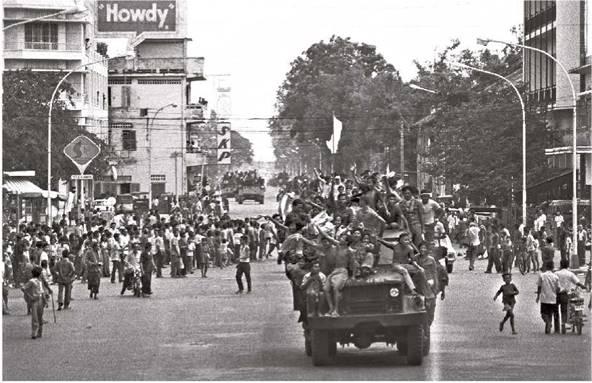
(Roland Neveu/Documentation Center of Cambodia Archives)
continued amidst the mass exodus, cutting off whole sections of the city and preventing family members from leaving the city together. And everywhere one walked one saw dead bodies and abandoned property. Checkpoints were set up intermittently to identify former Lon Nol soldiers and officials. Many people had to hide their identity because they feared arrest.
The Lon Nol army was known to have executed many of its prisoners and the Khmer Rouge responded in kind. Anyone identified with the former regime was promptly arrested and executed. Intellectuals, people with wealth, and many people who appeared suspicious, were also taken aside and killed.
The Khmer Rouge forced about two million Phnom Penh residents, including over a million wartime refugees, into the countryside. Within a week, the people of Phnom Penh and other cities that had been controlled by the Khmer Republic government were moved to rural areas to do agricultural work.
There were no exceptions to the evacuation. Hospitals were emptied of their patients. Thousands of the evacuees, especiallythe veryyoung, old and sick, died while on the road. Many pregnant women died while giving birth with no medicine or medical services. Some children became separated from their parents. Most people had no idea of what was happening.
As one would expect, people asked the questions: “Where should we go?
What should we bring? And, when will we return?”
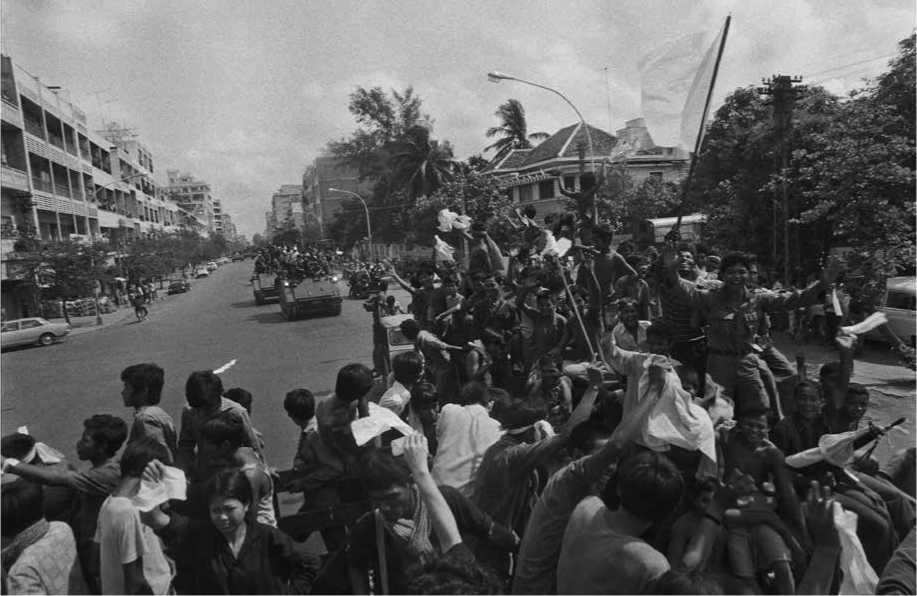
Photo by Roland Neveu. Source: The Fall of Phnom Penh: 17 April 1975
While the Khmer Rouge gave varying answers, the dominant reason provided by most soldiers was the Americans were going to bomb Phnom Penh so inhabitants had to leave. Another reason provided was that the Khmer Rouge had to cleanse the town of enemy forces. Most people were informed to pack lightly because they would return in three days. Many people believed this and they left with little food, water, or medicine.
Many people left their entire lives behind in Phnom Penh, carrying perhaps some jewelry, cash, or other valuables to use in the event that they needed supplies. No one had any idea about how long they were leaving their homes, and those who suspected it would be longerthan three days, certainly did not know it would be the last time they would see Phnom Penh (or their city or hometown) for the next three years.
The majority of residents who left the city were sent to villages outside the city, where they stayed and worked for several months. In many cases, they went to places where they had relatives or some other connections. After several months, the Khmer Rouge, again, forcibly moved people, often bytrucks and trains, to cooperatives that were being set up across the country.
The Democratic Kampuchea’s vice premier in charge of foreign affairs, Ieng Sary, laterjustified the evacuation in terms of the lack of facilities and transportation to bring food to the cities. Pol Pot, visiting China in October 1977, said that the evacuation was to break up an “enemy spy organization.”
After the evacuation, Phnom Penh became a “ghost city,” with only about 40,000 inhabitants. Those who remained were administrative officers, soldiers, and factory workers. The only shop in the city (Central Market) was a store that catered to diplomats. The Khmer Rouge isolated the country from the outside world. They did not allow any foreigners into the country and no Cambodians were allowed to leave.
A few days later, after Pol Pot and other CPK officials entered Phnom Penh, the Khmer Rouge held a ceremony to pay homage to those who had died during the war. In Beijing, more than 100,000 people and many Chinese leaders celebrated the victory of the communist forces over the U.S.-backed government.
However, Prince Norodom Sihanouk, the figurehead leader of the insurgents, did not attend. He was at the bedside of his mother, Queen Sisowath Kossomak Neary Roth Serey Vattana, who was dying in Beijing. Prince Sihanouk had been in exile in Beijing since 1970, where the Chinese government had given him both political and emotional support, as well as a comfortable villa. The Prince later made a statement praising the Khmer Rouge victory.
3. Forced Transfer

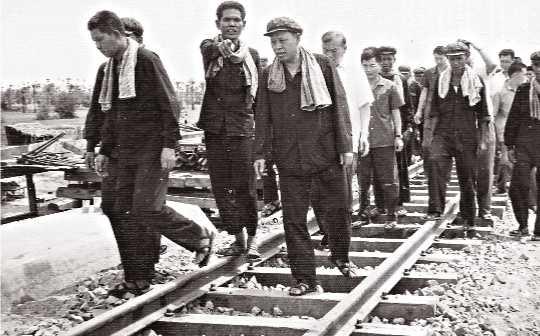
(Documentation Center of Cambodia Archives)
The common purpose of the CPK was to implement rapid socialist revolution in Cambodia through a “great leap forward” and defend the Party against “internal and external enemies.” One major way of achieving this goal was the repeated movement of the population from towns and cities to rural areas, as well as from one rural area to another.
This policy of forcibly moving people from one location to another (i.e., forced transfer) without giving them advance warning, compensation, or any legal means to object, caused incredible suffering and strain on people and communities.
Over a period of forty-five months, the Khmer Rouge regime engaged in many forced transfers of people between regions. Families were broken up, husbands were separated from their wives, children were taken from their parents, and countless loved ones disappeared without a trace. Many members of the Lon Nol regime and many people who were suspected of having sympathy or association with the ‘enemy’ were arrested and executed.
The CPK policy of forced transfers sought to break apart the human relationships and institutions that had governed most of Cambodian life before the revolution. In addition to the Lon Nol government, these included the traditional family unit, religious organizations, ethnic minority communities, and networks of intellectuals and business merchants. Without these relationships and institutions, it would be more difficult for opponents of the regime to mount an organized resistance. It would also be easier to convince Cambodians—especially children—to pledge loyalty to Angkar if forced transfers prevented them from being loyal to parents, ethnic kin, religious figures, or other traditional community leaders.
Overall, the regime orchestrated three general phases of population movement:
-
The movement of people out of cities, such as Phnom Penh, Battambang, Siem Reap, and a few other towns starting on April 17, 1975 (including six months later by train);
-
The movement of people within the countryside in the Central, Southwest, West, and East zones from late 1975 to other parts of Cambodia; and
-
The movement of people out of the East zone in 1977.
The forced transfer of so many people can be termed a tragedy for many, and the beginning of a new totalitarian era for all Cambodian people. As a consequence of their rural upbringing and their connections to the countryside, many people were able to obtain shelter with relatives and friends, which helped them avoid the worst aspects of the forcible transfer. To many other Cambodians, particularly those with an urban or middle/ upper-class background, the forcible transfer caused great suffering and thousands of deaths.
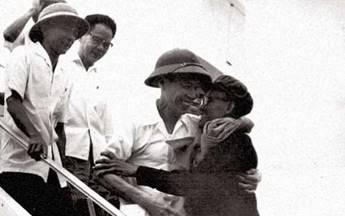
(Documentation Center of Cambodia Archives)
Throughout history, repressive governments have used forced transfers to expel unwanted populations or to weaken, punish, or control certain groups living in their territories. Forced transfers are prohibited by modern international law, however, because they violate people’s basic human rights, including the right to live in one’s home in safety and dignity. Governments may only transfer people from their homes when the people agree to move without undue pressure or, in some cases, when the government gives them fair financial compensation and a chance to challenge their transfer in a sound legal process. The mass program of forced transfer in Democratic Kampuchea offered victims no compensation and no opportunity forjustice. There is no doubt among legal experts that it was illegal.
4. Tuol Po Chrey
In 1975, Tuol Po Chrey was a big, open field close to the Tonle Sap river and next to a swampy forest. In April 1975, however, it became known as an infamous killing site for thousands of Lon Nol soldiers and civilians. It was the site of one of the worst massacres during the period of the first major forced transfers in Democratic Kampuchea, when the Khmer Rouge emptied the cities and “screened out” former Lon Nol officers and sympathizers.
On April 17, 1975, the Lon Nol army in Pursat had received an instruction overthe national radio from Phnom Penh to disarm. By April 19, the Khmer Rouge took control of Pursat province. Shortly thereafter, the Khmer Rouge brought Lon Nol soldiers by truck to the provincial town office to meet with Khmer Rouge leaders. The meeting lasted three or four hours, and as many as five hundred soldiers and civil servants attended.
At the meeting, the Lon Nol soldiers were given political indoctrination training in preparation of meeting Angkar the next day. The Khmer Rouge also urged residents in the provincial town of Pursat to leave. The Lon Nol soldiers were informed that they would be sent to training sessions and to meet Prince Sihanouk. They were also told that they would resume their former ranks after the training. Meeting attendees included Lon Nol military officers with the ranks of second lieutenant, captain, and up to general. After the meeting, the Lon Nol soldiers seemed happy, chatting with relatives while waiting, telling them they were going to study and meet with the King.
According to testimony by Mr. Sat Lim, following the Khmer Rouge meeting, Lon Nol soldiers were returned to the trucks that brought them to the meeting, and were driven in the direction of TPC. According to another person, Mr. Ung Chhat, it appeared that Lon Nol soldiers boarded the trucks voluntarily. At the Po village fort, the Khmer Rouge had set up checkpoints to prevent people from traveling to the area. The Khmer Rouge only allowed one car at a time to enter the fort.
Vehicles full of Lon Nol soldiers left the Po village fort, one by one, about every 20 minutes. Some reports claimed that the trucks contained Lon Nol soldiers and civil servants. The Khmer Rouge would not allow the next vehicle to leave for TPC until they saw the previous one return. Villagers noted that the Lon Nol soldiers seemed relaxed on the trucks on the way to the site, as they had been told they would be meeting Angkar and the King. The vehicles, however, returned empty. Villagers reported hearing gunfire and artillery shells near the village. Lon Nol soldiers sent to TPC had been executed. It is unclear how many Lon Nol soldiers were killed at TPC, and estimates range from as low as 2,000 soldiers to as high as 8,000.
The Tuol Po Chrey execution site was operational intermittently from late 1975 until about 1977, during which time large-scale killings of the ex-military and civilian population were carried out.
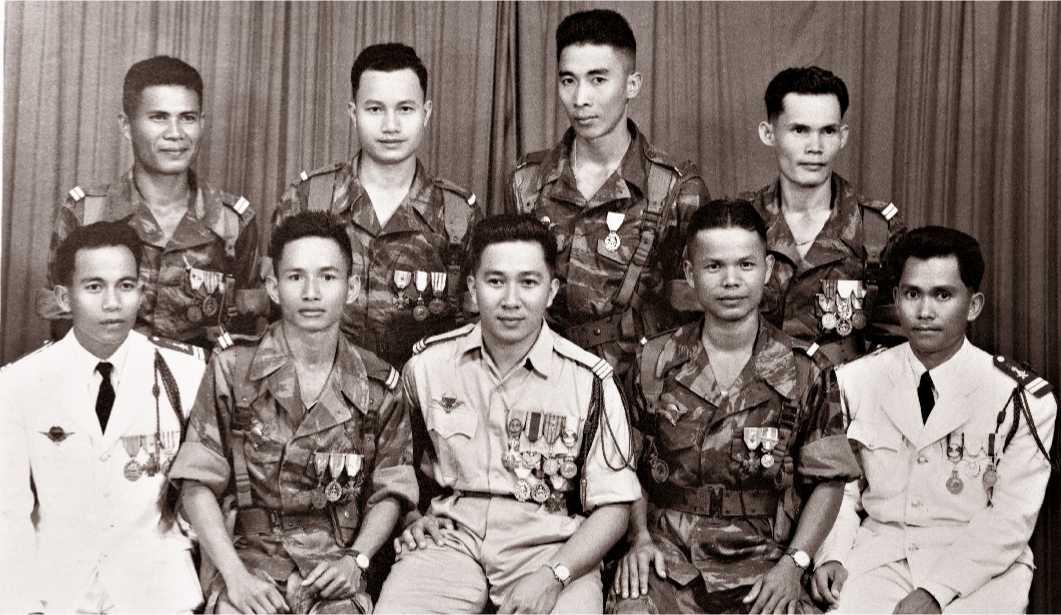
(Documentation Center of Cambodia Archives)
Chapter 4: The Khmer Rouge Come to Power
VOICES FROM CIVIL PARTIES AND SURVIVOR ACCOUNTS
1. Voices From Civil Parties to the Eccc and Other Survivor Accounts on the Forced Transfer of Populations
Ms. Yim Sovann, a civil party to the ECCC proceedings in Case 002, described the forced transfer of people out of Phnom Penh:
It was at about 3 p.m., and her father initially refused to leave. “They came with rifles and some dry rice, and they told my father: ‘You must leave, or the Americans will drop bombs on Phnom Penh.’ My father rushed to pack our bags and collect some rice before moving out of our place. It was very miserable to leave.”
Ms. Sovann also recalled, “They were all armed - men and women. They wore black uniforms with red scarves. They told her family that the ‘upper Angkar’ had asked them to leave and they must go to their home village for three days or else the Americans might drop bombs and kill them. The soldiers only gave us fifteen minutes to leave and if we refused, measures would be taken.”
She described witnessing soldiers shoot a lock off a house door in O’Russey market and then the soldiers shot the people as they ran out of the house. She also saw wounded Lon Nol soldiers at a military hospital in Borei Keila, which belonged to the Lon Nol army.
The Khmer Rouge soldiers pushed them off their beds. Some of the wounded were taken by their relatives, but others were left behind to die.
Nobody who died during the evacuation was given a funeral. The bodies were merely put into a ditch or left on the road.
Mr. Chhum Sokha, a civil party to the ECCC in Case 002 testified on his family’s journey out of Phnom Penh:
Sokha described seeing dead bodies along the roadside illuminated by the headlights of vehicles and smoke-damaged houses and burned bodies around Pochentong Airport and in front of the transport department.
Mr. Sokha explained that he, his mother, sister, uncle, and grandparents went ahead on foot and his father and uncle caught up with them after about two kilometers. His father told him he was to be detained but noticed people tied up in a line, so he fled, telling the family to hurry, Mr. Sokha testified. He described how the family rested at Ang Krouch pagoda for several days because his younger sister had swollen legs and could not walk, and they were later told by Angkar that they were permitted to return to their native village, which was Tbong Kdey village in Prey Veng province.
The civil party explained that his sister still had problems with her legs, so his mother exchanged jewelry and good clothes to allow his sister to travel on a cart. The family then reached a village near a lake in Bati, where they stayed overnight before proceeding to Boeung Khchak village.
After about a month of travelling from Phnom Penh, Mr. Sokha testified, the family reached Tbong Kdey village in Prey Veng province—the family’s hometown.
Sim Soth, aka Koy, a survivor of the Khmer Rouge regime, was a cyclo driver in Phnom Penh during its evacuation. Koy recalled what he saw during the evacuation:
On April 17, 1975, I went out to earn a living as usual. A few hours later, I witnessed Khmer Rouge soldiers entering Phnom Penh. People came out, waving white cloths and white shirts, welcoming the Khmer Rouge. Suddenly, they fired into the air, ordering people to leave the town, alleging there would be American bombing. Like other people, I hastily departed at 10 o’clock with my brother, my colleagues from the pagoda and the monks. On the crowded road, I heard the voices of people asking for their parents and relatives, and the voices of hungry children asking for food. The Khmer Rouge confiscated people’s belongings. Those people who refused would be killed or taken away. While I was walking, a female Khmer Rouge soldier grabbed my collar and asked if I was a soldier. She pushed me backward when I told her I was a student. I continued my journey to Takhmau. On the way, I saw a lot of recently swollen dead bodies. After three days of walking, I reached Takeo province.
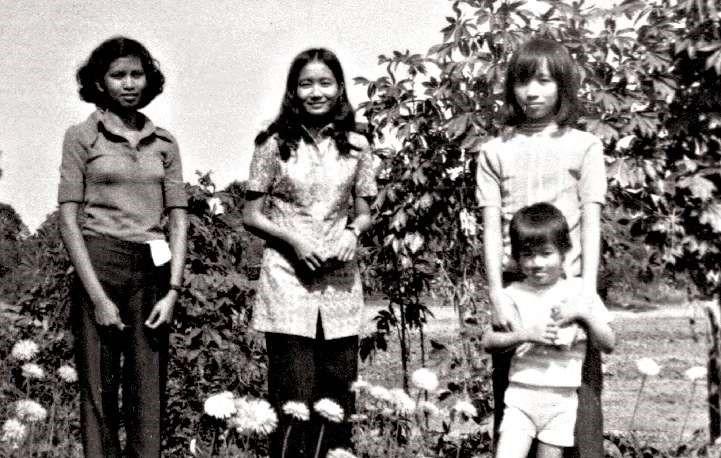
(Mok Sin Heang Collection/ Documentation Center of Cambodia Archives)
So Ry of Takeo province also recalled the evacuation of Phnom Penh. Her husband was a Lon Nol soldier whose thigh was injured while fighting the Khmer Rouge. He was sent to a hospital in Phnom Penh.
The Khmer Rouge soldiers asked us to leave town. I said, “I cannot go because I am pregnant and my husband is seriously injured.” They forcibly insisted that we had to go. We were crying a lot because my husband could not walk. Then we found a horse cart, so I carried my husband on to the cart. I tied the cart with my scarf, put the scarf around my neck and towed it. We wanted to go to Takeo, but the soldiers forced us to go forward on National Road 5. We passed Prek Kdam and stopped in order to cook rice. After eating, they told us to go forward. I towed the cart until my groin became inflamed. On the way, my husband was taken and killed.
I cried a lot, but I could do nothing. Finally, I arrived at Chamkar Leu district, Kampong Cham province. One month later, I gave birth to my daughter.
Mr. Lay Buny, a civil party to the ECCC in Case 002 also testified about the forced transfer out of Phnom Penh:
Khmer Rouge soldiers told people to leave by whatever means they had, Ms. Buny testified; they did not tell them what belongings to bring. Her family did not bring rice, she said; they only brought money, which they thought could be used along the way. She added that the Khmer Rouge soldiers did not tell her that money would be useless, and she “became hopeless” when she learned this en-route.
People who could not travel independently, like hospital patients, “would be pushed by a wheeled hospital bed or carried in stretchers or hammocks. Somebody who was seriously ill could also be carried on someone’s back while walking,” Ms. Buny explained. People gave birth along the wayside, and evacuees could hear their cries, she recalled, adding that the evacuees eventually found midwives to assist them.
Ms. Buny was forcibly transferred with her five-year-old daughter. As to the fate of the civil party’s five-year-old daughter, Ms. Buny recounted:
When we reached Ksach Kandal, my daughter had been ill for a few days already. She had severe diarrhea I was asked to pick some leaves for her to treat her illness. Every family member
got ill with fever ... When [my visiting aunt] saw this, she wanted to take my daughter to live with her so that she could be treated I agreed to let her go ... I believed that my daughter would be properly treated or taken care of, only to learn that she died.
Ms. Buny was also forced to move again from Ksach Kandal district to Pursat where she described the food as being bad. The evacuees “ate on the road [and the food] was not good for us, it was bad for our stomachs.”
2. A Voice From a Civil Party Doctor
Mr. Meas Saran was a doctor working in Phnom Penh in the days before the Khmer Rouge military victory over Lon Nol’s forces. He explains the situation shortly before the evacuation.
At Borey Keila at that time, I [Mr. Meas Saran] was working at a surgical center. There were five surgical sections that were meant to receive wounded people. This was the first place that the wound- ed people would be admitted to.
On April 16, there were bombs dropped at Duymex market. People got injured and were sent there. I cannot remember the number of patients, but each center kept receiving the wounded and the beds could not accommodate all the wounded, so we had to use the floor for further incoming wounded people
Some people were not seriously injured and they could move about. Some were injured at their legs, and indeed they could not walk and had to remain in bed. I could recall a seven-year-old child who was seriously injured. She told me that she got injured by a bomb. That child was lying on the ground. I couldn’t save that person when I was evacuated from the hospital.
On the morning of April 17, when we were told that we had to leave, the people who were in the hospital were told to walk out.” Some of the patients in beds had to be pushed.
Mr. Saran elaborated on how he felt about these events as a medical professional:
My mother told me to become a doctor, not a soldier. I dedicated my life to helping the patients, including the wounded Khmer Rouge soldiers. Two of them were treated by me. I, at the moment when I was asked to leave the city, had a difficult feeling, because at that time, I thought that the sick, the wounded, would be well-assisted during the evacuation, but at the same time, I was not clear in my mind as to whether these people would be properly treated. I could recall a girl who had been seriously injured begging me, asking me to help her out. I was helpless. I was obliged to help her as a doctor, but I couldn’t help her beyond what I could at that time.
Mr. Saran continued:
At that time, no Khmer Rouge medical staff or soldiers were there to take charge of the hospital. I didn’t know what happened after this, but during that time, it was sure that no one was there to assist the medical staff during the evacuation.
Mr. Saran went on to describe how he felt when he was forced to leave his patients.
In my capacity as a medical staff, it was my obligation. Frankly speaking, I felt uncomfortable to leave the patients behind. In my mind, if I left them behind, one, they would die, and two, if the Khmer Rouge would come to help them, they would survive. But the thing was, how could I assist them in my capacity? I couldn’t help them much. When I left, I left with an uneasy feeling ... and I was still thinking about my wife. I felt uneasy when I left, because I left the patients behind, in particular the young girl, and I am still haunted by her image.
Initially, we were instead to leave Phnom Penh for three days, and during these three days, it was so difficult while we were en-route. Then we crossed the Monivong Bridge. After the three days passed, there were still a large number of people on the other side of the bridge. I was still waiting for my wife, and I still had hope that I would be allowed to return after the three-day period. I was very worried about my wife as she was pregnant and she did not know Phnom Penh that well. After the three days passed, I was looking for my wife among the crowd of people who was still crossing the bridge. In the end, I became hopeless and I had to find any means to find my wife in her native village. After the three days passed, there was an announcement on the loudspeaker from Phnom Penh
appealing for officials to return to work in Phnom Penh. I saw some people returning to Phnom Penh. But those people went by themselves without members of their families and I did not see them return. With that, I thought something wrong happened in Phnom Penh, and I was concerned about that issue.
The doctor goes on to explain how he passed numerous checkpoints along the road to his wife’s village. He was questioned at each checkpoint, and he learned quickly to lie to the Khmer Rouge because he did not trust them.
Frankly speaking, I did not trust them. I did not trust them because I saw that people who were called to Phnom Penh never returned. I did not trust them because they talked about the imminent bombardment and that we had to be evacuated for three days only, but they lied. That did not happen. Of course, if people had been allowed to return, they would have survived. But that did not happen So ... I decided I had to lie to them.
Moving to events that occurred after he arrived at his wife’s hometown, Mr. Saran said:
When I arrived at that village, my mother-in-law cried because she did not see my wife. I myself was also disappointed as I did not see my wife.
3. Witnesses in the Eccc on the Massacre at Tuol Po Chrey
Mr. Sat Lim, a former Khmer Rouge soldier and witness in the ECCC in Case 002 testified about what he saw and heard when he was in the Tuol Po Chrey area in April 1975.
Mr. Sat testified that some 3,000 Lon Nol soldiers had been killed during the final Khmer Rouge attack on TPC of April 17, 1975. Mr. Sat noted that the Lon Nol soldiers surrendered by raising white flags at the TPC fortress. He believed there were about 100 soldiers wearing military clothing, and several commandoes in civilian dress. After they surrendered, they had their weapons taken away and were gathered into groups. Lon Nol soldiers were eventually transferred from the provincial town hall to TPC where they were killed.
Ms. Yim Sovann, a civil party in the ECCC in Case 002 testified about what she saw and heard when she was in the Tuol Po Chrey area in late 1976. Ms. Yim frequently passed by TPC commune in late 1976 and early 1977 to collect thatch. Villagers in Pursat told her that Lon Nol soldiers had been executed at TPC. Ms. Yim heard from the Khmer Rouge soldiers that Lon Nol soldiers, following instructions from Khmer Rouge soldiers, were loaded into a truck and were sent to TPC for execution in April of 1975. The villagers told Ms. Sovann that the killing took about “half a month”. She also saw a hill of mounded earth at TPC that she assumed to be a “cover up” and met people from Kbal Chhae Puk cooperative whose relatives had been killed there. She described the area as a big, open field close to the Tonle Sap river and next to the swamp forest. Ms. Yim noted that she did not know exact figures of how many Lon Nol soldiers had died at TPC, but that villagers had told her they saw a truckload of people sent to TPC. She noted that the villagers said it was not only Lon Nol soldiers; civil servants from the former regime were also gathered and sent to TPC for execution.
car at a time to get in there. I saw hundreds of the Khmer Rouge troops surrounding those Lon Nol soldiers. They also set checkpoints onsite to ban people from travelling through that area. I was stopped and searched by them, but since I had a permission slip, they let me through. While I was there, I saw them letting a vehicle leave that place one by one in about every 20 minutes. The Khmer Rouge would not allow the next vehicle to leave for Tuol Po Chrey unless they saw the previous one, which had transported Lon Nol soldiers to Tuol Po Chrey earlier, returned. Later I saw the vehicle, which had transported Lon Nol soldiers there earlier return empty.”
Later, Mr. Ung went with two villagers to see the corpses inside the Tuol Po Chrey fort.
He reported that all of the soldiers’ bodies were on the ground with their heads pointing north, wearing civilian clothes rather than military uniforms. The corpses were bound together by rope in groups of 15-20, with their arms tied behind their backs.
Mr. Sum Alatt, a former Lon Nol soldier and witness in the ECCC for Case 002 testified about what he saw and heard when he was in the Tuol Po Chrey area during April 1975. “In the meeting in the provincial town office, they educated us about the policy of reconciliation and about country building, and lastly, they spoke about placing our trust in going for the reception [to meet Angkar]. That was their approach so that we would trust them. In general, we did not know what was going to happen in the future but we all agreed to go for the reception.

(Documentation Center of Cambodia Archives)
Tuol Po Chrey was about 20 kilometers away. When we were gathered to go to Tuol Po Chrey—that is in the reception of Angkar—I personally agreed to go through but then the car that I traveled on was stopped half- way. So, in fact, I wanted to go on that car but because it was fully loaded, I was told to go in a later vehicle. So I, myself, did not reach Tuol Po Chrey. However, three days later, I heard that those people had been killed.
To recollect the event in terms of Angkar, we never heard of Angkar when we heard of the administrative side, so we were told that we would go and greet Angkar. And we wanted to meet Angkar because we hoped that after we reconciled with one another, then we would gather our strength to build the country but I never knew who Angkar was.
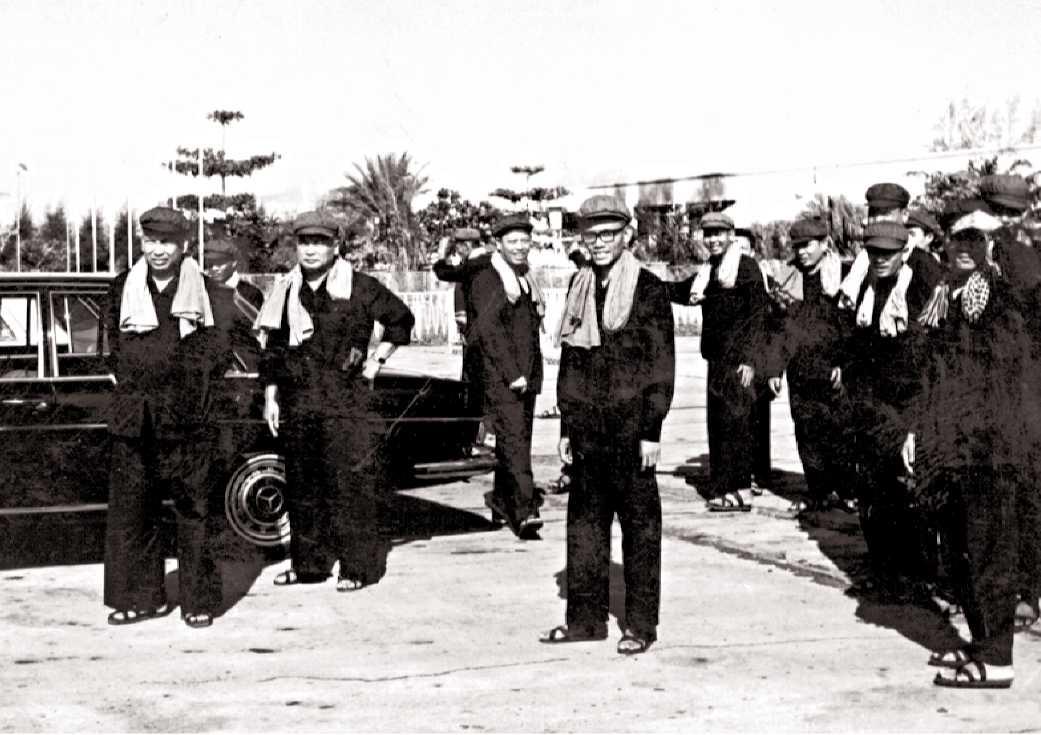
(Documentation Center of Cambodia Archives)
Chapter 5: The Formation of the Democratic Kampuchea Government
1. The Angkar [12]
Although the Khmer Rouge had fought against Lon Nol’s Khmer Republic for five years, very little was known about the movement or its leaders. The CPK maintained this secrecy for most of the time that it ruled Cambodia.
Angkar Padevat, “the revolutionary organization,” was made up of men and women who were members of the Communist Party of Kampuchea. They were led from the shadows by Pol Pot.
In September 1975, the CPK’s Central Committee comprised Pol Pot, Nuon Chea, So Phim, Ieng Sary, Son Sen, Ta Mok and Vorn Vet. In 1977, three other members (Nhim Ros, Khieu Samphan and Ke Pauk)were added to this committee. Pol Pot, Ieng Sary, Son Sen and Khieu Samphan were educated in France, while Nuon Chea was educated in Thailand and Vietnam. The other members of the Central Committee, although literate, had less education.
MEMBERS OF THE CENTRAL COMMITTEE IN 1976-1978*
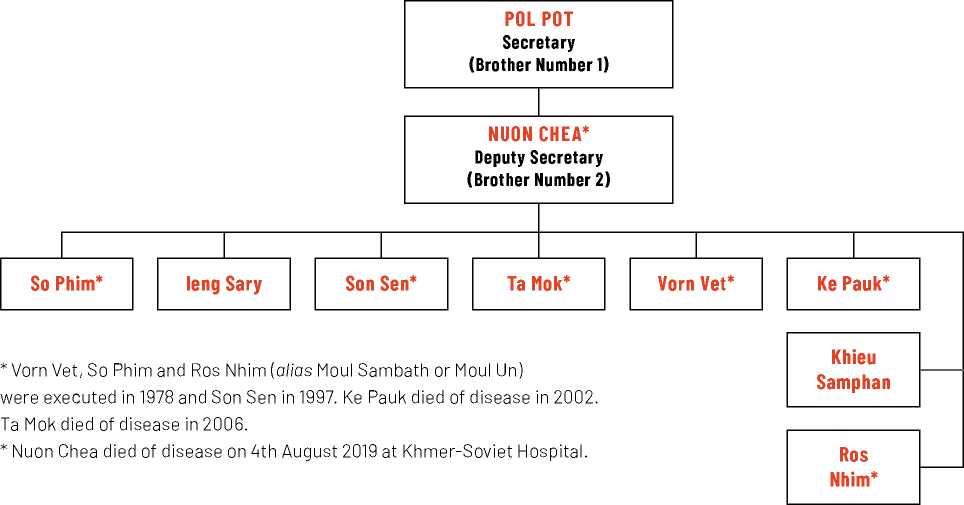
2. Prince Sihanouk Returns to Cambodia
Until the end of 1975 the Khmer Rouge called itself the Royal Government of the National Union of Kampuchea (this was the organization that had been founded in Beijing in 1970 with Prince Sihanouk as head of state). By 1972, they controlled almost all the resistance, but for the sake of international recognition and internal support, they continued to operate behind the facade of Prince Sihanouk and his government in exile.
In July 1975, the Khmer Rouge invited the Prince, who was then living in exile in Pyongyang, North Korea, to come home. Before returning to Cambodia, he flew to Beijing to meet Chinese President Mao Zedong and Chinese Premier Zhou Enlai, who was in the hospital. He later said, “My decision to return to Cambodia did not express the fact that I agree with the Red Khmers, but I have to sacrifice myself for the honor of China and his Excellency, Zhou Enlai, who helped Cambodia and myself so much.[13] He returned with his wife in early September, accompanied by Pen Nuth (premier of the Royal Government of the National Union of Cambodia), Khieu Samphan, Ieng Thirith and some members of the royal family.
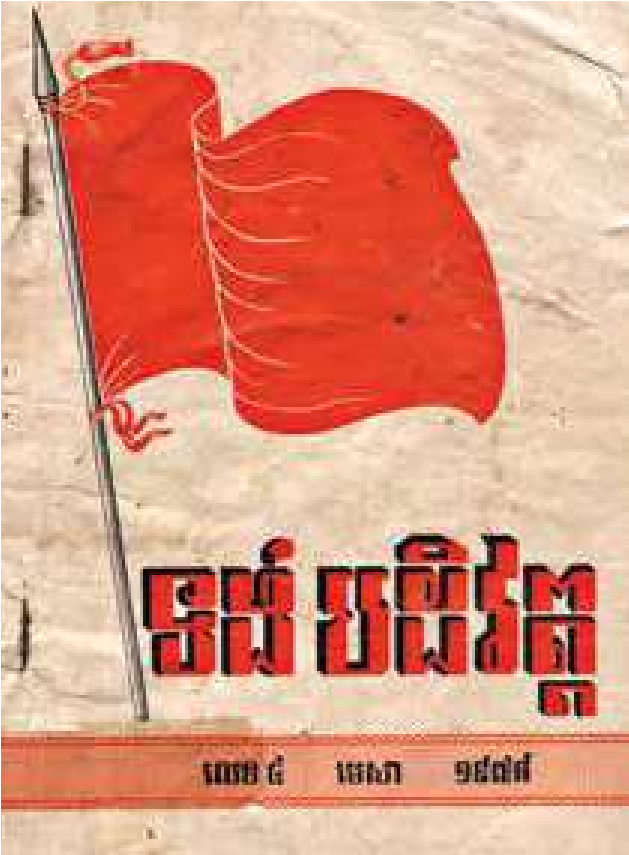
(Tuol Sleng Genocide Museum Archives)
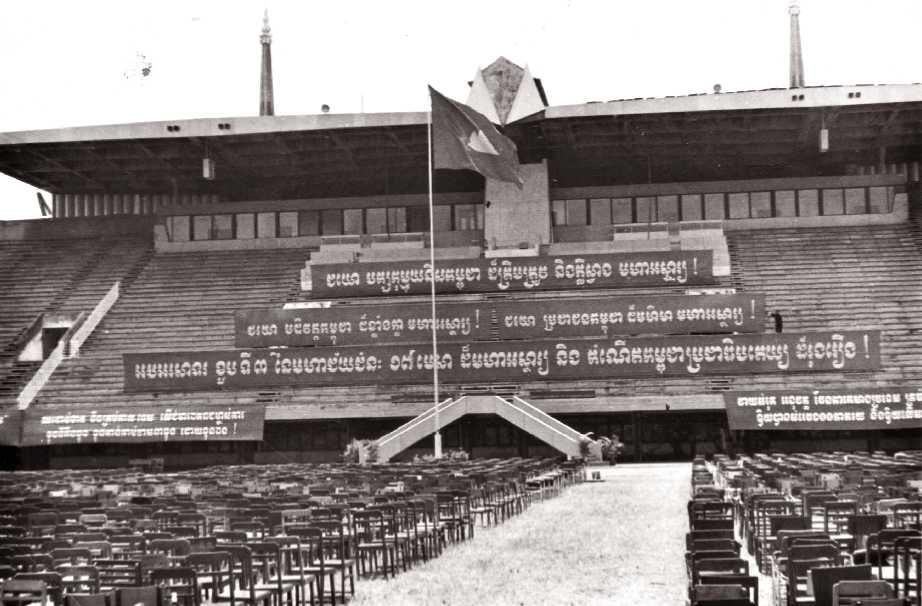
(Documentation Center of Cambodia Archives)
The Prince soon presided over a cabinet meeting, but was not allowed to speak. The communist rulers had given him the title of chief of state, which carried no power. Three weeks after his return, the Prince was sent to the United Nations to claim Cambodia’s seat at the General Assembly, inside the country, many of his supporters had vanished without a trace. About twenty members of Prince Sihanouk’s family died during Democratic Kampuchea, and at least seven other members of the royal family were executed at Tuol Sleng.
3. The Constitution
From December 15-19, 1975, the text of a constitution was approved by a 1,000-member National Congress in Phnom Penh and was promulgated on January 5, 1976. The country was officially renamed Democratic Kampuchea. The constitution established a 250-seat House of Representatives, with 150 members representing peasants, 50 members representing laborers and other working people, and 50 people representing the revolutionary army. The constitution said nothing about the CPK. The Assembly met only once in April 1976.
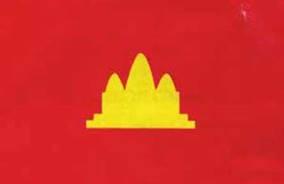
Article 16 of the DK Constitution describes the design and meaning of the national flag: The background is red, with a yellow, three-towered temple in the middle. The red background symbolizes the revolutionary movement, the resolute and valiant struggle of the Kampuchean people for the liberation, defense, and construction of their country.
The yellow temple symbolizes the national traditions of the Kampuchean people, who are defending and building the country to make it ever more prosperous. (Documentation Center of Cambodia Archives)
DEMOCRATIC KAMPUCHEA’S NATIONAL ANTHEM
17 APRIL, THE GREAT VICTORY
Glittering red blood which blankets the towns and countryside of the Kampuchean motherland! Blood of our splendid workers and peasants!
Blood of our revolutionary youth! Blood that was transmuted into fury, anger and vigorous struggle! On 17 April, under the revolutionary flag! Blood that liberated us from slavery!
Long life 17 April, the great victory! More wonderful and much more meaningful than the Angkar era! We unite together to build up Kampuchea and a glorious society, democratic, egalitarian, and just; independentmaster; absolutely determined to defend the country, our glorious land; Long life! Long life! Long life new Kampuchea, democratic and gloriously prosperous; Determine to raise up the revolutionary red flag to be higher; build up our country to achieve the glorious Great Leap Forward!
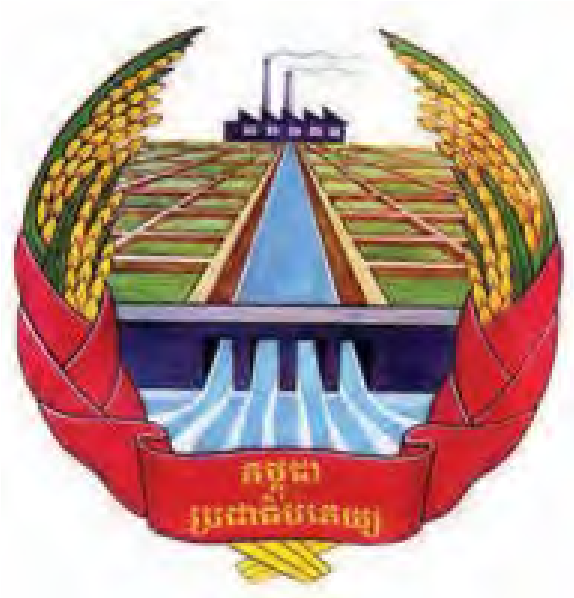
(Documentation Center of Cambodia Archives)
The new national anthem was called “17 April, the Great Victory.” Its words were written by Pol Pot. The new national flag was red with a yellow three-towered image of Angkor Wat in the middle.
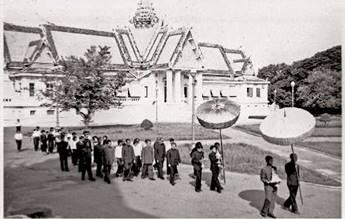
(Julio Jeldres Collections/Documentation Center of Cambodia Archives)
4. Prince Sihanouk Resigns as Head of State
On March 11, 1976, the CPK’s Standing Committee met to discuss the resignation of Prince Norodom Sihanouk. They agreed that they would accept his resignation, but they would not allow him to leave the country, to speak out, or to meet foreign diplomats. Cambodia’s monarchy, which had existed for nearly two thousand years, had ended.
In April 1976, the Kampuchean People’s Representative Assembly held its first and only session. The Assembly unanimously agreed to Prince Sihanouk’s retirement request, giving him an annual $8,000 pension that was never paid. He and his family were put under house arrest in a small villa in the Royal Palace compound.
Structure of the State of Democratic Kampuchea
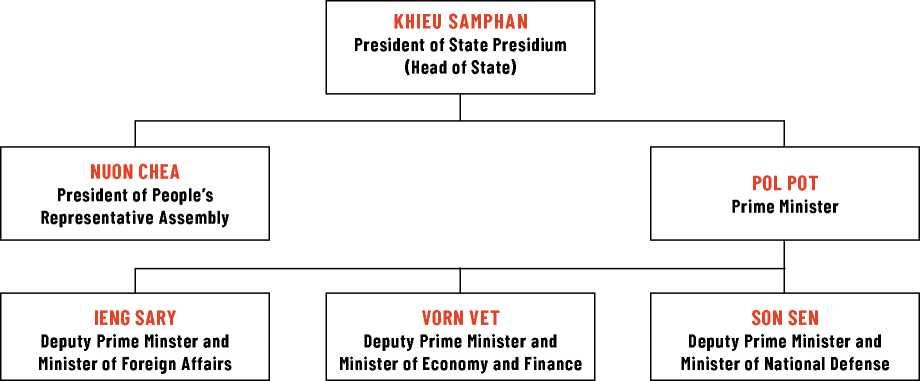
The Prince remained there until January 1979, just before the collapse of Democratic Kampuchea.[14]
KHIEU SAMPHAN (aka comrade Hem)
Khieu Samphan was born in 1931 in Kampong Cham. After being awarded a scholarship to study in France, he finished his doctorate in economic science and returned home in 1959. The Prince Sihanouk appointed him Secretary of State for Commerce. In 1964, he resigned from his post, but remained in the National Assembly for four more years.
In 1967, accused of being a communist agent, Khieu Samphan went into hiding in the jungle. In 1976, after the resignation of Prince Sihanouk, he was appointed President of Democratic Kampuchea’s State Presidium. He joined Pol Pot in exile from 1979 to 1998, when he defected to the Royal Government of Cambodia. In November 2007, he was arrested.
Over a decade later, Khieu Samphan was tried by the ECCC, and he was found guilty of crimes against humanity, which was upheld by the Supreme Court Chamber in Case 002/01. He was sentenced to life imprisonment. He was also found guilty by the Trial Chamber for crimes against humanity, grave breaches of the Geneva Conventions of 1949, and genocide of the Vietnamese people. He appealed to the Supreme Court Chamber, which has not issued a judgment as of the date of this publication.
5. Organizational Structure of Democratic Kampuchea
The only active organization in Democratic Kampuchea was the concealed Communist Party of Kampuchea. The ministries with high volumes of work established in Phnom Penh included the Ministry of Foreign Affairs headed by Ieng Sary, the Minister of Defense under Son Sen, the Ministry of Industry led by Cheng An, and the Ministry of Economy chaired by Vorn Vet. The only committee that had the authority to make decisions and government policies and statutes was the CPK’s Standing Committee, with Pol Pot as the secretary and Nuon Chea his deputy. The CPK leaders never paid attention to the constitution or regulations that they themselves had adopted. Members of the Standing Committee and Central Committee also had ministerial responsibilities.[15]
6. Changing the Party’s Anniversary
In March 1976, the Central Committee decided to set the date of the CPK’s birth to 1960 rather than 1951. The leaders decided that anyone who joined the party before 1960 would no longer be considered as a party member. They did not want to admit the importance of Vietnamese guidance before 1960. They wanted to deny Vietnam’s influence on the party and to break any links with Vietnam.
The CPK continued to lead the country secretly under the name of Angkar. In September 1977, however, just before visiting China, Pol Pot publicly admitted the existence of the Communist Party of Kampuchea and his own position as the prime minister of Democratic Kampuchea.
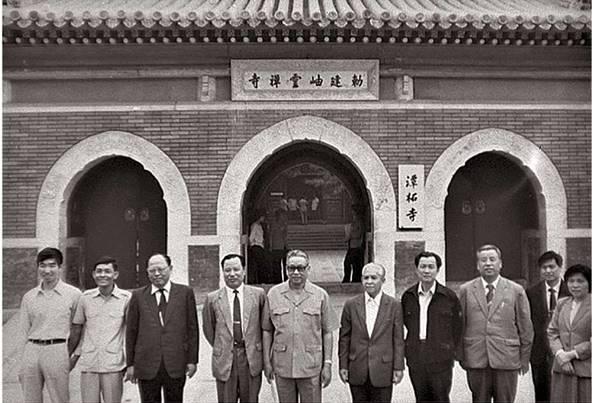
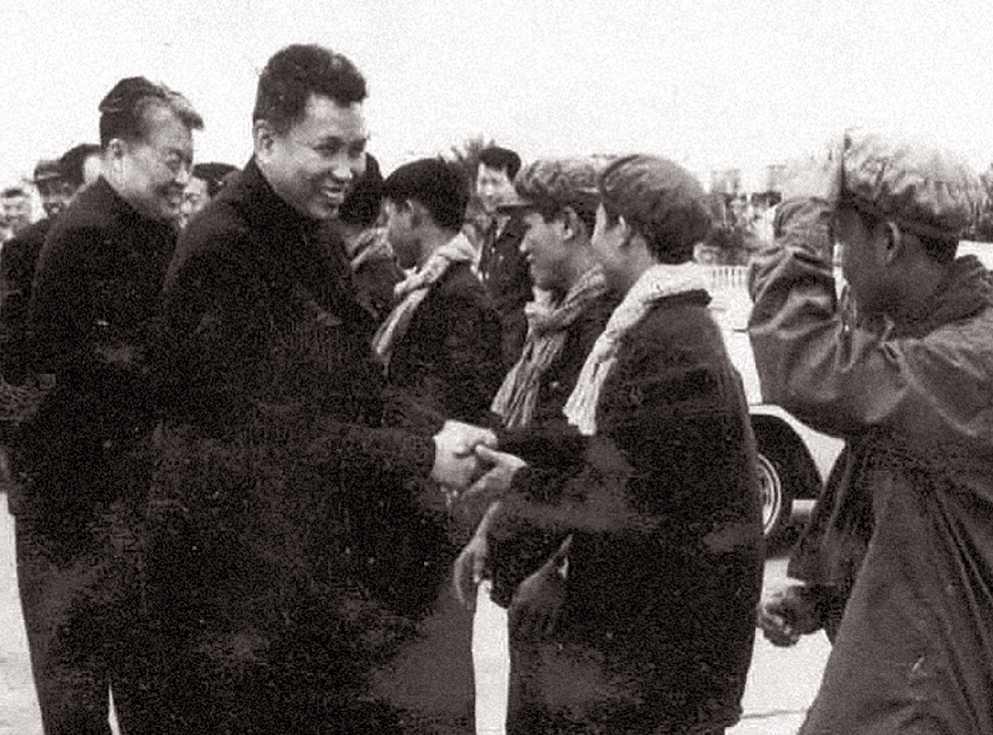
Chapter 6: Administrative Divisions of Democratic Kampuchea
In 1976, the CPK divided Democratic Kampuchea into six geographical zones. The zones incorporated two or more provinces or parts of old provinces. The CPK then divided the zones into 32 regions and gave all the zones and regions numbers. Below the regions were districts, sub-districts, and cooperatives.
East Zone (Zone 203). So Phim was the secretary of this zone; he committed suicide in May 1978. The East Zone consisted of Prey Veng and Svay Rieng provinces, part of Kampong Cham east of the Mekong River, one district from Kratie province (Chhlong) and some parts of Kandal province (Khsach Kandal, Lvea Em, and Muk Kampoul). The zone was divided into five regions: Regions 20, 21, 22, 23, and 24.
North Zone (Zone 303). Koy Thuon, alias Thuch, was the zone’s secretary from 1970 to early 1976. After he was arrested and executed at Tuol Sleng in 1976, Ke Pau became the secretary until 1977, when he was assigned to the newly established Central Zone. At that time, Kang Chap became the North Zone secretary. This zone consisted of Kampong Thom province, part of Kampong Cham (west of the Mekong River), and one district of
Kratie (Prek Prasap). Its regions were 41, 42, and 43.
Northwest Zone (Zone 560). Ros Nhim was this zone’s secretary. The zone comprised Pursat and Battambang provinces, and had seven regions: 1, 2, 3, 4, 5, 6, and 7.
West Zone (Zone 401). Chuo Chet was its secretary. It consisted of Koh Kong and Kampong Chhnang provinces, and parts of Kampong Speu province. Its five regions were 31, 32, 37, 15, and 11.
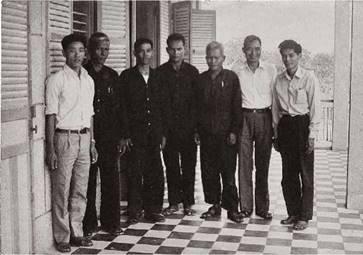
(Documentation Center of Cambodia Archives)
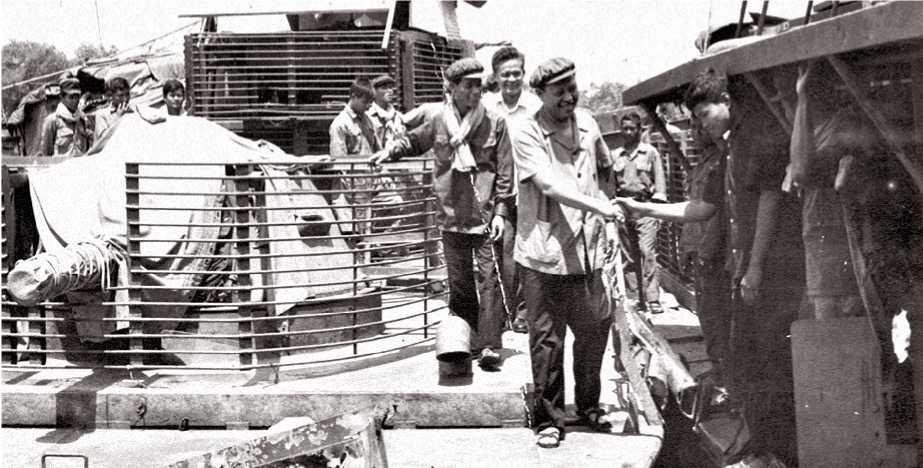
Northeast Zone (Zone 108). This zone secretary, Ney Sarann, aka Ya, was purged in 1976. It comprised Rattanak Kiri and Mondul Kiri provinces, parts of Stung Treng west of the Mekong River, and part of Kratie province. Its six regions were 101, 102, 104, 105, 107, and 505.
In 1976, Democratic Kampuchea also created two autonomous regions, which reported directly to the Central Committee, not through a zone: Siem Reap-Oddar Meanchey Region (Region 106) and Preah Vihear Region (Region 103). Kampong Soam (now Preah Sihanoukville) was organized separately from the zones.
The Central Zone was established in 1977. It occupied the former North Zone, while the new North Zone was moved to the Siem Reap-Oddar Meanchey and Preah Vihear regions. Kratie Region (Region 505) and Mondul Kiri Region (Region 105)were taken from the Northeast Zone and made autonomous regions.
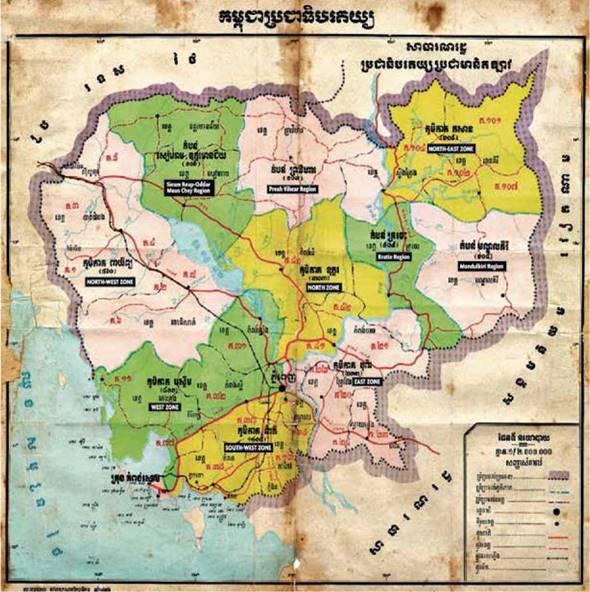
(Documentation Center of Cambodia Archives)
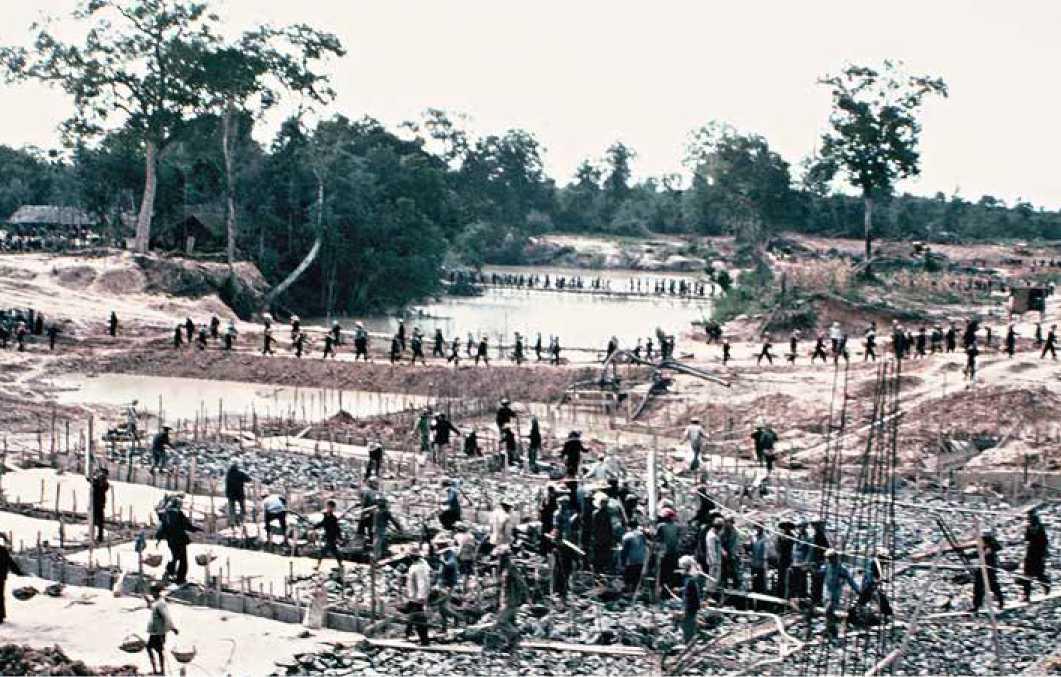
Chapter 7: The Four-Year Plan (1977-1980)
The Khmer Rouge emptied the cities in order to abolish urban living and to build a new Cambodia based on the expanded production of rice. In early 1976, the CPK hastily wrote the first four-year plan (1977-1980), which called for the collectivization of all private property and placed high national priority on the cultivation of rice. After national defense, collectivization was the most important policy of Democratic Kampuchea.
People in Cambodia had never been collectivized in the past. But in 1976, everyone was required to bring their private possessions (including kitchen utensils) to be used collectively. As part of the process, Cambodian families were split up and people were assigned to work groups. Husbands and wives were separated, and children were separated from their parents.
The four-year plan aimed at achieving an average national yield of three tons of rice per hectare. This was an impossible task because Cambodians had never been forced to produce that much rice on a national scale before. Moreover, the country had been devastated by war and lacked tools, farm animals and a healthy work force.
The four-year plan also included arrangements to plant vegetables, and hoped to generate income from timber, fishing, animal husbandry, tree farms, etc. The leaders of Democratic Kampuchea hoped to make Cambodia completely independent in both the economic and political spheres and turn Cambodia from an undeveloped agricultural country to a modern agricultural country.
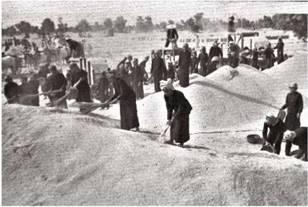
(Documentation Center of Cambodia Archives)
However, the leaders ignored the difficulties of implementing this plan and the miseries that flowed inevitably from overwork, poor living conditions, and malnutrition, lack of freedom and basic rights, and untreated diseases. Throughout the period of Democratic Kampuchea, the living conditions of people were very poor. In addition, the regime robbed nearly all Cambodians of their happiness and dignity. Most people know that a country needs educated people to develop. However, the Khmer Rouge killed many intellectuals and technicians, and closed all universities, schools and other educational institutes throughout the country. They then brought poor peasants from the countryside with no technical experience to work in Phnom Penh’s few factories.
The leaders of Democratic Kampuchea divided the country’s rice fields into number-one rice fields and simple rice fields. For the simple rice fields, the required yield was 3 tons per hectare, while farmers in the number-one rice fields were required to achieve 6 to 7 tons per hectare. In addition, the yields were to increase every year.
In theory, the crop was divided into four portions. Some of it was intended to feed people; everyone was entitled to receive 312 kilograms of rice a year or 0.85 kg a day. Some of the remaining crop was to be retained as seed rice and some was to be kept as a reserve. The last and biggest portion of the crop was to be sold abroad to earn foreign exchange, which could then be used purchase farm machinery, goods and ammunition.
Unfortunately, because production almost never reached the required levels, almost no rice was saved for the people or for seed. Instead, most of the harvest was used to feed the army and factory workers or was exported to China and several other socialist countries.
In Democratic Kampuchea, almost no one ever had enough to eat; in most cases, they only had rice porridge mixed with corn, slices of banana trees, or papaya tree trunks. Most people received less than half a milk can of rice a day. Only the Khmer Rouge cadres and soldiers received cooked rice. All survivors of the regime agree that what they remember the most, aside from hard labor and executions, was the extreme shortage of food.
father caught tadpoles for food. He thought that they were small fish. One day, a Khmer Rouge cadre killed a poisonous snake and placed it on the fence. Though he knew that it was poisonous, he still ate the snake, which killed him. My sister and her children died of starvation. My own family was in the same condition. We had done a lot of farming, but never had enough rice to eat. Being too hungry, I picked wild arum as food. After eating, all of us became very itchy. My children cried a lot. One day, I went to fish. The unit chief said, “You behave with very low character. Be careful!
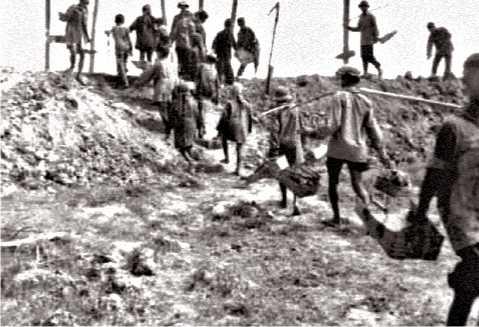
Angkar will take you for execution.” Because of inadequate food, one of my children became seriously sick, so I exchanged my last necklace for rice and cooked it for her. She ate a lot but became sicker. She died as a result. The other two children and my husband also became sick because of malnutrition. However, we miserably managed to survive.
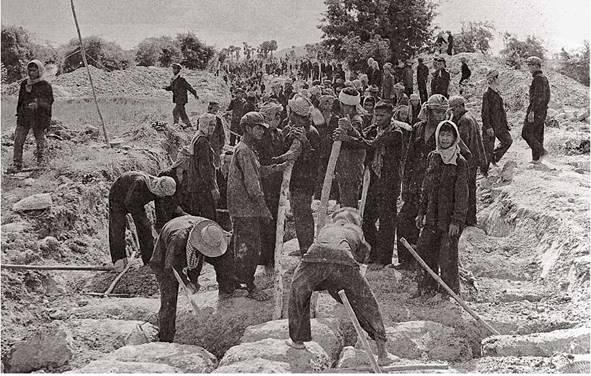
(Documentation Center of Cambodia Archives)
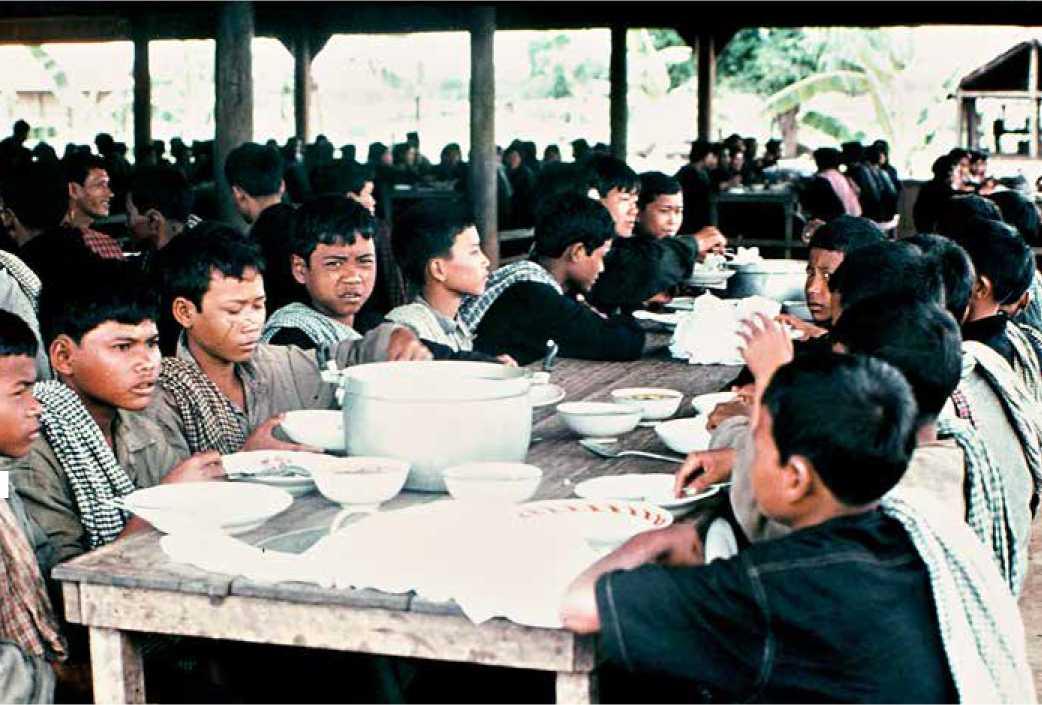
(Gunnar Bergstrom/Documentation Center of Cambodia Archives)
Chapter 8: Daily Life During Democratic Kampuchea
1. The Creation of Cooperatives
During the 1970-1975 civil war, most of the people living in the areas liberated by the Khmer Rouge were organized into “mutual aid teams” of 10 to 30 families. However, starting in 1973 and especially after the 1975 victory, mutual aid teams were organized into “low-level cooperatives,” which consisted of several hundred people or an entire village. By 1977, low-level cooperatives were reorganized into “high-level cooperatives,” which consisted of about 1,000 families each or an entire sub-district.
The CPK’s leaders established cooperatives as part of their move to abolish private ownership and capitalism, and to strengthen the status of workers and peasants. To the Khmer Rouge, a cooperative meant that people were supposed to live together, work together, eat together, and share each other’s leisure activities. This resulted in severe restrictions on family life. Cambodian families had eaten together for thousands of years, so eating in cooperatives, especially when food was scarce, was unpleasant and cruel. In addition, everyone in a cooperative had to give all of their property, which was their important means of production, to be used collectively. Such property included tools, cattle, plows, rakes, seed rice, and land.
The cooperatives were designed to be as self-sufficient as possible. The Khmer Rouge leaders described cooperatives as “great forces” for building up the country and as “strong walls” for protecting Democratic Kampuchea against its enemies.
2. Two New Classes
Although the Khmer Rouge claimed they were building a nation of equals and tearing down class barriers, they in fact created two new classes in Cambodia. They named these “the base people” and “the new people.”
The base people, or old people, were those who had lived in rural areas controlled by the CPK prior to April 17, 1975.
The Khmer Rouge classified them as full-rights people or candidates. Full-rights people were those who had no relatives who had worked for the Khmer Republic. They were members of the poor or lower-middle classes (farmers and laborers). They were allowed to vote and to run for elections, although only one election was held during
Democratic Kampuchea, on March 20, 1976, (this election was not in accordance with international standards, and those voted in as members of the National Assembly were not announced publicly). Full-rights people could also become chiefs of cooperatives and other units. Candidates were people who had relatives associated with the Khmer Republic; they were tolerated as long as they worked hard.
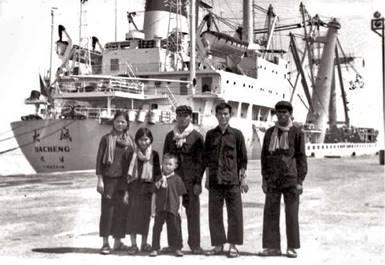
(Documentation Center of Cambodia Archives)
The new people, or 17 April people, were those evacuated from the cities and towns in April 1975. However, many of them were from the countryside and had gone to the cities to escape the war. They were considered unreliable and were viewed by Angkar with hatred and suspicion. They were classified as “parasites” and had no rights as the Khmer Rouge slogans asserted: “17 April people are parasitic plants. They are the losers of the war and prisoners of war.” Another slogan, recalled by many survivors, was: “To keep you is no gain; to lose you is no loss.” New people were treated much more harshly than base people. But the degree of harshness differed from one region to another. For example, people in Svay Rieng and Prey Veng provinces in the East Zone were treated somewhat better than those evacuated to Pursat and Battambang in the Northwest Zone.
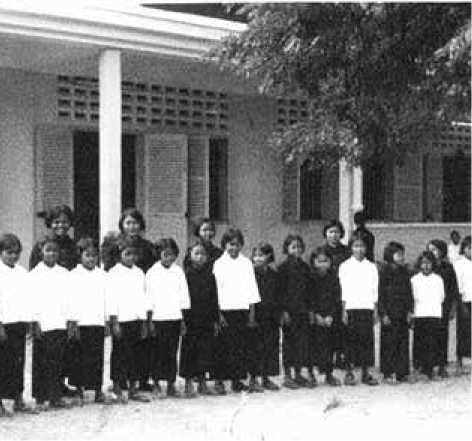
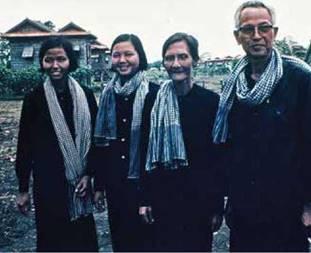
(Gunnar Bergstrom/Documentation Center of Cambodia Archives)
Chap Sitha, a 65-year-old woman living in Phnom Penh, described her life as one of the 17 April people:
During the evacuation in 1975, my family consisting of 14 members fled to Koh Thom district, Kandal province. There, Angkar assigned me to plant vegetables and do farming. One day, at nine o’clock at night, Angkar requested my husband to go to study. I had been waiting for him, but he never returned. A woman in the village told one of my children: “You don’t have to wait for your father and be careful with your words. Your entire family could be taken away. Your father had a big working history.” I knew that my husband must have been killed since he was a governor of Kandal province. Two months later, Angkar told me to move to Phnom Penh. In fact, they took us to Battambang. Angkar gave us a small decayed cottage. We were separated to live in different units. Only my six-year-old child stayed with me. Life in Battambang was an unforgettable experience for me. Within ten days,
by Angkar and disappeared.
3. Marriage
Democratic Kampuchean weddings were completely different from traditional ones. Couples were married in mass ceremonies in which there were as few as 3 to 10 couples and as many as 30 to 50, or even more than 100, at each ceremony. Most men and women were not allowed to choose their partner; instead, each couple was designated by Angkar, which claimed to be everyone’s parents. Some couples did not know the name of their future spouses or what they looked like until the ceremony. Their family members, in most cases, were not allowed to attend the wedding or be involved in any decision. Traditional clothes, dancing, singing, and religious ceremonies were prohibited.
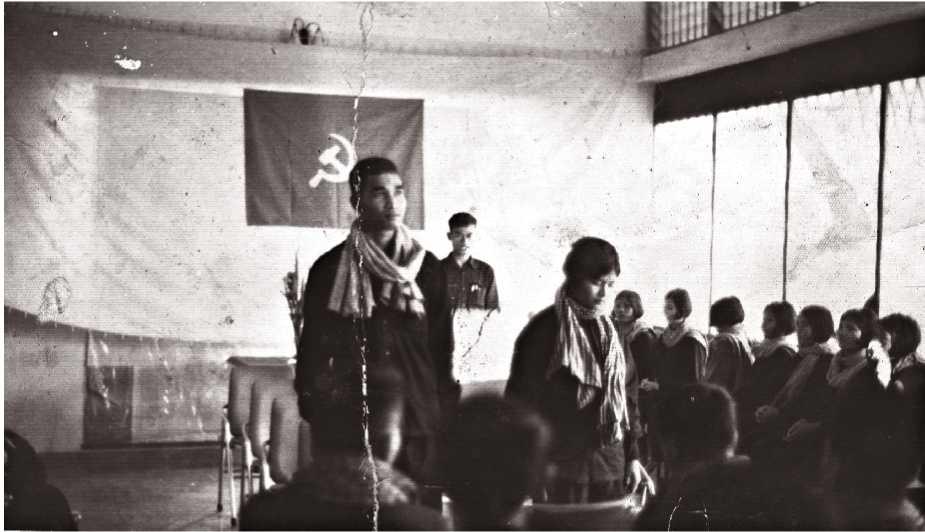
Women were sometimes forced to marry soldiers who had been injured during the war and lost a hand or leg. Those who refused to accept the disabled men might be imprisoned, severely tortured, or forced to do hard labor far from their homes. Some women facing forced marriage committed suicide.
Mousa Sokha of Kratie province was president of a women’s sub-district association during Democratic Kampuchea. She recalled her marriage:
In 1974, at the age of fifteen, I got married to an ammunition-delivery worker, Noh Loas. We were lucky that we got married one month before a new rule was passed banning people from decorating their bodies with imperialist jewelry. Everything used for bodily decoration was considered imperialist, even fake jewelry. By that time, five to ten couples had already been forced to marry. If a couple rejected each other, they would be summoned for reeducation. Newly married couples were separated. In my wedding, I was accompanied by bridesmaids and wore jewelry, but I dressed in black clothes and tire sandals. Only three days after our marriage, my husband was summoned to go to the battlefields because Angkar needed more forces to overthrow Phnom Penh. I begged the village chief to let my husband stay, but he refused. In 1976, I gave birth to myfirst son, but he died of diseasejust a week later.
Forced marriage increased after the Khmer Rouge victory in 1975. More couples were forced to marry at one time. Pheng Hang from Kampong Cham described his marriage:
In 1978, just a month before the regime collapsed, they pointed to my name on a list and forced me to get married. The next day, I sat on a chair at the ceremony, determined to do what they said. Along with 160 couples, my wife and I promised to live together and have a child within a year. The Khmer Rouge gave us new black clothes and a cotton scarf, and they had food to eat at the ceremony. After the revolution, we came home and now have five children.
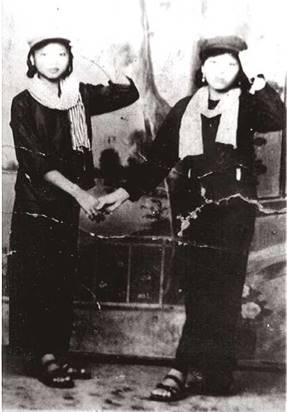
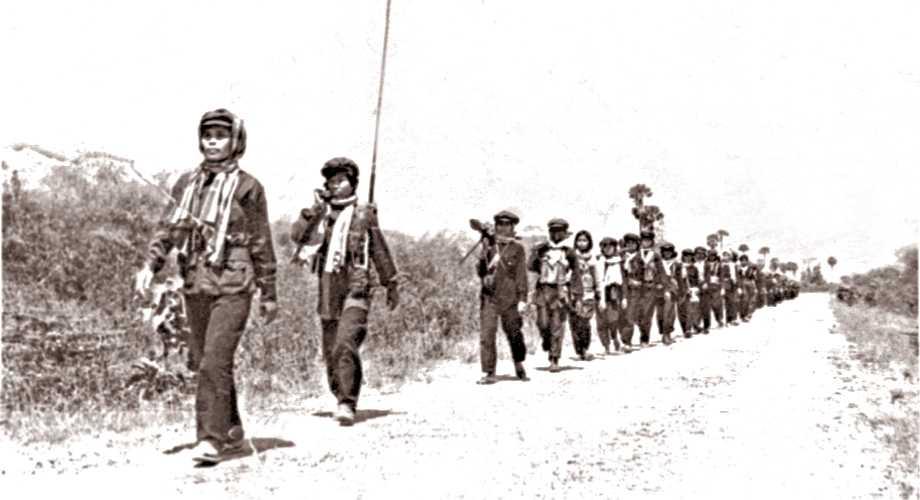
(Documentation Center of Cambodia Archives)
On the wedding day, men and women were asked to stand in two rows. Then the village chief would ask couples to hold each other’s hands and to vow to live together for the rest of their lives; that signified they were married. The brief celebration ended when some food was served.
Once married, the couple was allowed to stay together for a few days and then went back to their work groups. They would be allowed to come back home to see each other once every seven to ten days.
The Khmer Rouge saw the traditional Khmer wedding as they saw all religious practices and education at schools or universities: it was a waste of time and no help in producing rice. Mass weddings were established because they took so little time; the time saved would be devoted to cooperative work and to what the Khmer Rouge called the “Super Great Leap Forward Revolution,” a slogan derived from communist China. The leaders of Democratic Kampuchea wanted to make sure that children were born who could continue the revolution. The main purpose of weddings, for the Khmer Rouge, was not to form family units, but to produce children who could serve the revolution.
4. Forced Child Labor
In Democratic Kampuchea, there were no formal schools. Instead, children were sent to study under trees or people’s houses. Their teachers were often poor peasants who could only read and write a little. Although some regions of Democratic Kampuchea saw a little improvement in education in 1978 (children were given two or three hours a day of primary education), there was never any fully functioning school. The Khmer Rouge would say, “There are no more diplomas, only diplomas one can visualize. If you wish to get a baccalaureate, you have to get it at dams or canals.” Another phrase used by the Khmer Rouge was: “Study is not important. What’s important is work and revolution.”
While children were taught simple concepts like the alphabet, most of their education was devoted to political instruction. Young children were routinely taken from their homes and made to attend indoctrination sessions so they could serve as soldiers, bodyguards, or messengers.
Children were also set to work during Democratic Kampuchea. They collected manure, cut small plants, collected human waste to make fertilizer, and carried weapons to the battlefield where they were sometimes killed or injured. In addition, children were usually separated from their parents and never enjoyed the pleasures of family life.
Phin Ratha, from Phnom Penh, recalled her experiences as a ten-year-old in 1975.
We were evacuated to Kiri Vong district, Takeo province. Angkar gave each family a small house. We first lived by finding crabs and shells as food. After a political meeting with the village chief, everyone had to eat collectively, and I could no longer catch crabs as food. Because of too much hunger, I usually stole vegetables we had planted around the house. I was asked to work in a children’s unit far from my home. Angkar allowed me to visit home within three or four months. My task was to work in the rice fields. I did not want to do this because I was very afraid of leeches. The unit chief always beat me, so I ran home many times, asking for help from my parents, but they could not help.
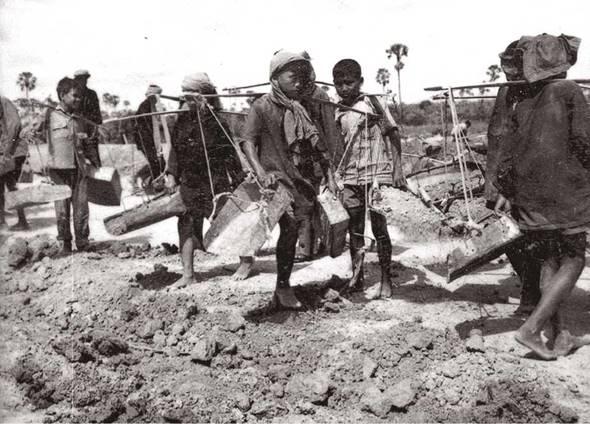
(Documentation Center of Cambodia Archives)
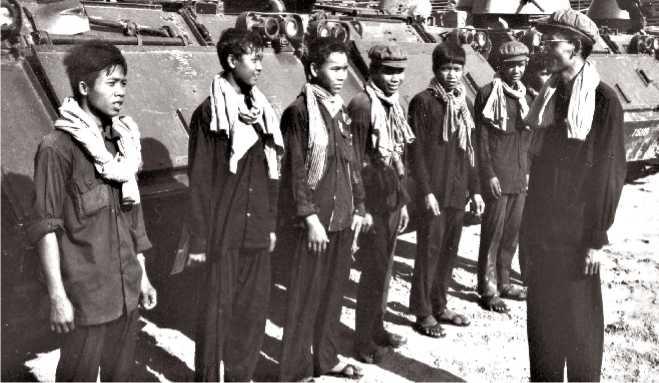
(Documentation Center of Cambodia Archives)
So, I hid in the forest for a while. I survived by eating wild leaves and fruit and stealing villagers’ food. Unable to bear such hard living conditions, I came back home. For fear of Angkar, my parents sent me back to the children’s unit. There, the unit chief tortured me and warned me not run away again. I was assigned to dig up water vegetables and then to collect pig dung. One day, I was so tired that I fell down and spilled the dung, so the unit chief whipped me with a lash, which flew into my eyes. From day to day, my eyes hurt, and I became blind as a result.
The Khmer Rouge had slogans about education:
“Angkar makes the shadows under the trees into schools and meeting places.”
“You should learn while working. The more you work, the more you learn.”
Ros Sampeou, a Phnom Penh resident, lost all of his family under the Khmer Rouge regime. He recalled:
The five members of my family were moved to Tra Loak Mountain in Preh Net Preh district, Battambang province. I and other children were assigned to dig earth and build dikes, to look after animals and to cut small plants. We had to complete our assignment; otherwise, our food ration would be cut, and we would be tortured. My father died of malaria and my older sister died of a disease that made her belly swell. One day after work, we gathered and told each other about our backgrounds and families. A moment later, a man came in and told me that my mother had been killed by Angkar. Hearing this, I unconsciously cried. I was thinking that I had nothing left; I even did not know how much longer I could survive. The only other member of my family, my older brother, disappeared without a trace.
Young children were taught that, “Angkar is the parent of all children as well as male and female youths. If parents beat their children, it means they look down on Angkar, so Angkar will have no pity on them.” Cadres asked children to spy on their families. These children even dared to kill their own parents if they were told to do so by Angkar. As time passed, tens of thousands of children came to believe only what Angkar had told them and learned to obey Angkar’s commands.
In the war against Vietnam in 1977-1978, many soldiers were killed or seriously injured. The Khmer rouge then recruited children to go to the front lines, where thousands of them were wounded or killed.
5. Forced Labor
Everyone in Democratic Kampuchea was assigned to work. Young children performed light tasks, while elderly people looked after small children or animals and made baskets. Adults (those over the age of 14) were given the most difficult tasks. They had to dig canals and reservoirs, build dikes, cut logs, clearland for cul tivation, and plant and harvest rice. A few thousand men and women who were trusted by the party were sent to work in factories in Phnom Penh.
Nearly everyone worked more than 12 hours a day, 7 days a week without rest or adequate food. They sometimes worked from sunrise until midnight if the moon was bright enough. Without moonlight, fires would be set to illuminate the rice fields. If they tried to question the assignment their cooperative chiefs gave them, they would be called enemies of the revolution and would be sent to be “reeducated.” Repeated or serious mistakes at work could lead to execution. This act was contrary to Article 12 of the Constitution of Democratic Kampuchea, which stated:
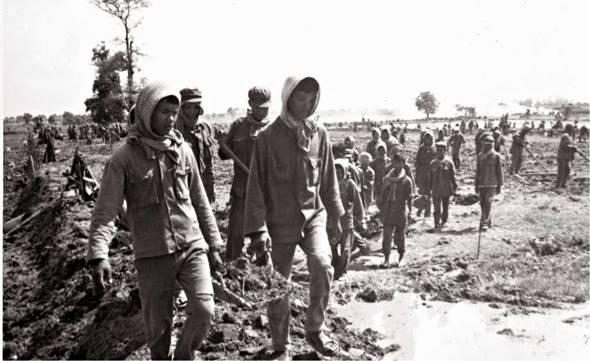
(Documentation Center of Cambodia Archives)
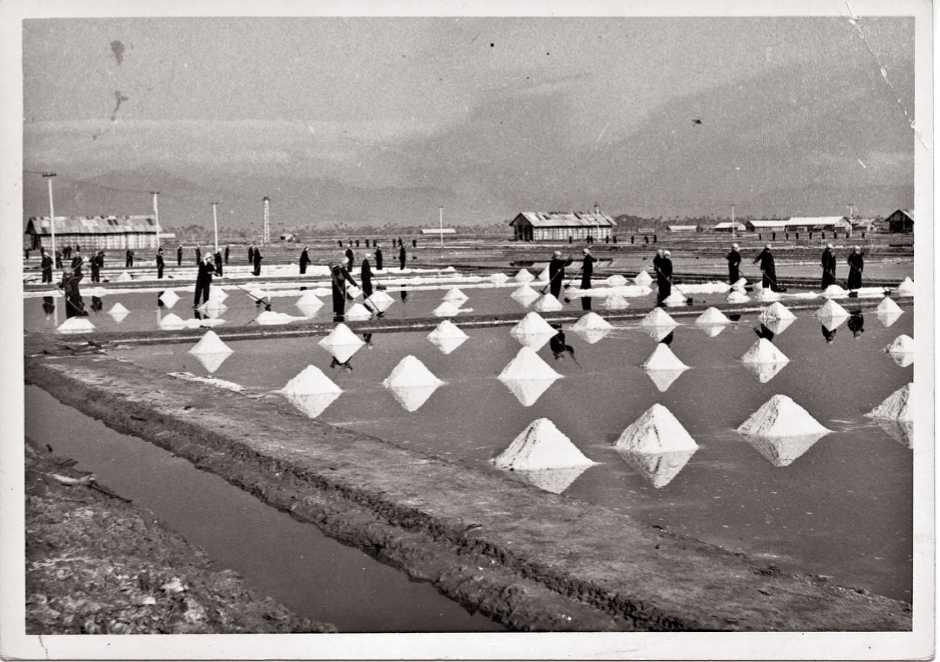
(Documentation Center of Cambodia Archives)
-
Every citizen of Kampuchea enjoys full rights to a constantly improving material, spiritual, and cultural life. Every citizen of Democratic Kampuchea is guaranteed a living.
-
All workers are the masters of their factories.
-
All peasants are the masters of the rice paddies and fields.
-
All other laborers have the right to work.
-
There is absolutely no unemployment in Democratic Kampuchea.
6. Purges and Massacres
The Khmer Rouge were always searching for enemies and believed that their enemies were everywhere. Suspects were falsely accused of serving the U.S. Central Intelligence Agency (CIA), KGB (Soviet secret police), or the Vietnamese.
Fighting with Vietnam in 1977 and 1978 led to extensive purges. In late 1977, after Pol Pot returned from China, Vietnamese troops entered eastern Cambodia. They withdrew after several months, taking hundreds of Cambodian civilians with them. The Khmer Rouge then accused people and cadres in the East Zone of cooperating with the Vietnamese, which led to many people being arrested and executed, including longtime Khmer Rouge loyalists and political ideologues like So Phim.
The worst purges in the zone occurred in 1978 after some units rebelled against the Democratic Kampuchea government. From June to September, while warfare continued with Vietnam, much of the East Zone became a battlefield between the Democratic Kampuchea government and these rebellious troops, and as many as 100,000 people in the East Zone died in battle or were executed. The government sent troops from the Southwest Zone to fight the rebels. Thousands of people fled to the Vietnamese border to escape the killings that followed the arrival of these troops.
A purge also occurred in the North Zone in 1977. This one concentrated on educated people and people connected with Koy Thuon, who had served as the zone’s secretary until early 1976. During the purge, Angkar arrested the Minister of Information, Hu Nim, Koy Thuon’s mentor Tiv Ol, and many of his colleagues, including Phok Chhay and Doeun. There were several attempted coups and rebellions (especially by Cham Muslims) during Democratic Kampuchea,[16] but because they were unsuccessful, they were only served to intensify the search for internal enemies, which in turn led to purges throughout the country.
San Teimnah, a woman living in Kampong Cham province, recalled how the Khmer Rouge massacred the Cham minority, especially her own family, during the rebellion:
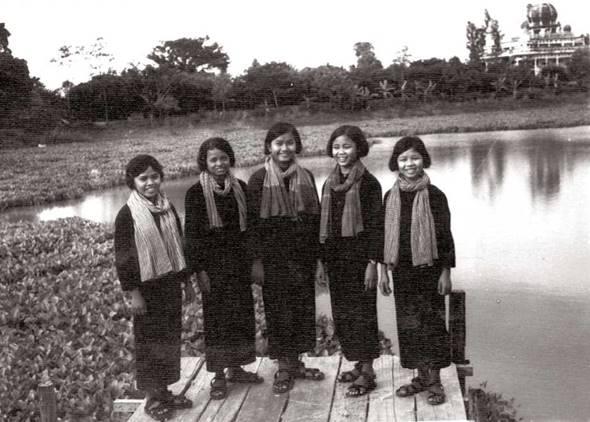
(Documentation Center of Cambodia Archives)
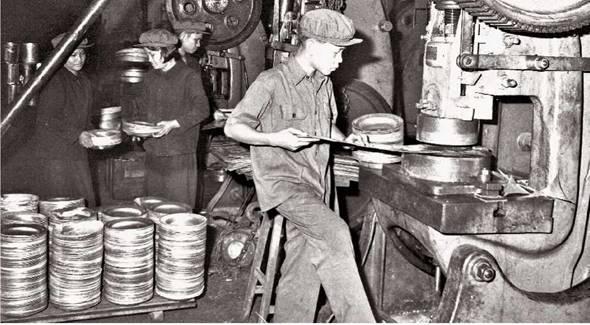
(Documentation Center of Cambodia Archives)
In the Sangkum Reastr Niyum regime, my village had been home to thousands of Cham families. The Khmer Rouge killed almost all of them. People in my village and Koh Phal suffered more than the rest because they rebelled against the Khmer Rouge. As for my family, they killed my parents, two of my children, two grandchildren and all of my siblings. My son, Musa, was taken from us after the rebellion and disappeared; I heard rumors that he was killed in 1978 while he was searching for me. My daughter, Rofiah, and her husband and two children were killed for unknown reasons.
Afterwards, the Khmer Rouge moved my family to Sre Veal village in Stoeung Trang district. At first, they assigned me to fell tall trees with the evacuees from Phnom Penh. Many people were killed because they performed their tasks poorly or because the trees fell on top of them. Then, I was made to raise pigs. I objected, claiming that I was afraid of these animals. But, they forced me to do this, threatening that Angkar would send me off for study if I did not do it. The Khmer Rouge even forced me to eat pork, but I refused, saying that I had never eaten meat since childhood. After that, they refused to give me any food. I asked for salt, but they said the salt ration was in the pork soup. My body became swollen. Luckily, I survived the regime. I returned to my home village in 1979.
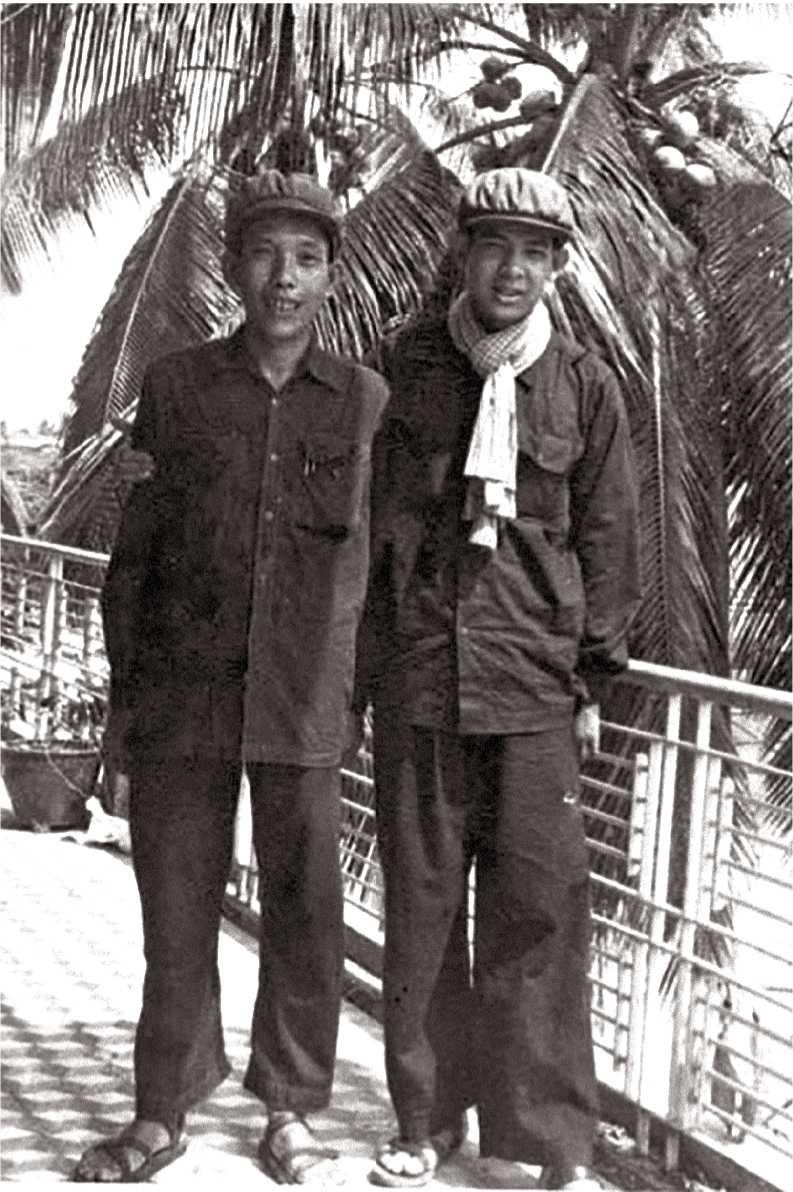
(Documentation Center of Cambodia Archives)
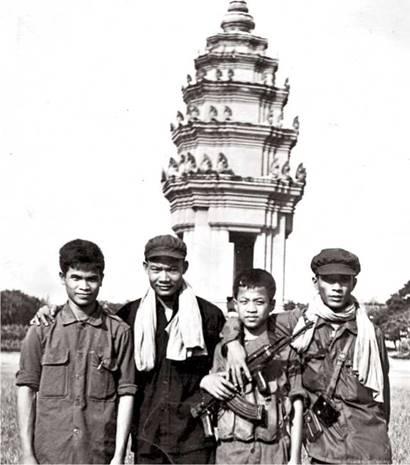
(Documentation Center of Cambodia Archives)
Chapter 9: The Security System
1. Security Centers
Although the East Zone purges of 1978 were the most severe in Democratic Kampuchea, hundreds of thousands of people were arrested in other parts of the country and in many cases were killed. The Khmer Rouge security system, with its nearly 200 prisons, was set up virtually everywhere. The Khmer Rouge called these prisons “security offices” or “security centers” rather than “prisons.”
Security centers in Democratic Kampuchea were organized into five levels. These prisons were used for detention, interrogation, and execution. Most of the prisoners in the lowest levels (regional, district, and sub-district) were former soldiers or civil servants of the Lon Nol government; the remainder were people accused of stealing, desertion, or speaking ill of Angkar. At the zone level, security centers held a thousand or more prisoners. These
centers were generally used to hold Khmer Rouge soldiers and their families, and those accused of committing offenses in the zone. The highest level was the central security center in Phnom Penh with the code name of S-21. Almost all of its prisoners were Khmer Rouge cadres and soldiers accused of betraying the revolution.
At the lower levels, punishments were not severe, for prisoners were usually transferred from security centers to labor camps. There, they were made to build houses, plant vegetables, or cook. Many of the prisoners held at these security centers were released before 1976. But after that, almost none of the prisoners at the district and region levels were released. Very few prisoners survived S-21.
2. The Enemies of Angkar
The Khmer Rouge wanted their revolution and all the people of Cambodia to be pure. People had to be clean in terms of their mentality and background. Poor peasants were thought to be the purest revolutionaries. The Khmer Rouge distrusted everyone else. People who committed very minor infractions, such as complaining about the hard labor or stealing food, were labeled as enemies of the state and were often marked for execution. Khmer rouge leaders divided their enemies into “internal enemies” and “external enemies.”
Internal enemies were the “new” or“17 April” people and people from the previous regimes whose social status was classified as capitalist or feudalist. This category also included people who were not ethnically Khmer. These internal enemies concerned the Party Center[17] much more than anything else. The target groups considered as internal enemies included:
Officials of the Khmer Republic government: In 1975, the Khmer Rouge carried out thousands of summary executions. They extended down from the Khmer Republic leaders to soldiers. Anyone who had served Lon Nol was targeted to die. Often their families and relatives were killed as well. Luckily, however, thousands of former soldiers and civil servants managed to conceal their identities and survived for a time or even until the collapse of Democratic Kampuchea.
Minority groups: To carry out their revolution, the Khmer Rouge favored ethnic Khmers who had no links to the former government. All minority peoples, who were not considered trustworthy and were suspected by Angkar, were persecuted.
Indigenous Highlanders. Many of the CPK’s leaders had lived among the hill people in the Northeast Zone before they came to power. The Khmer Rouge leaders trusted them highly because they were so faithful. Some of them became Pol Pot bodyguards. But even though the regime claimed to revere and trust them, it began relocating many people from other parts of Mondul Kiri to Koh Nhek district as early as 1972, where many people died. Those who refused to go were executed.
Phsos Prai, a Pnong living in Mondul Kiri province, described the experiences of his family after they were relocated during the Khmer Rouge years.
My 15-year-old niece was shot dead because she cried, saying she did not want to live somewhere else. I was separated from my family and sent to farm in many places. At Koh Nhek, people worked day and night with little food and became exhausted. My daughter,
Cham Muslims. The Khmer Rouge forced Cham people to flee their villages and live dispersed among Khmers. They were forbidden to speak their language or to practice Islam. The Khmer Rouge killed many of their leaders (hakims) and anyone else suspected of resisting government policies.
Moreover, the Chams were forced to eat pork which was forbidden by their religion. Tens of thousands of Chams were killed or died of disease, starvation, and overwork under Democratic Kampuchea.[18]
Vietnamese. The Vietnamese were expelled from Cambodia en masse in 1975. Only a small number who had married Cambodians stayed behind. In 1977 and 1978, the regime began to kill these people systematically and very few of them survived. They were singled out simply because they were Vietnamese.
Ethnic Chinese. The members of this community, who were often entrepreneurs, also joined the forced march to the countryside to take up agricultural work. They were treated harshly when they failed to work hard, but they were not singled out to be killed.
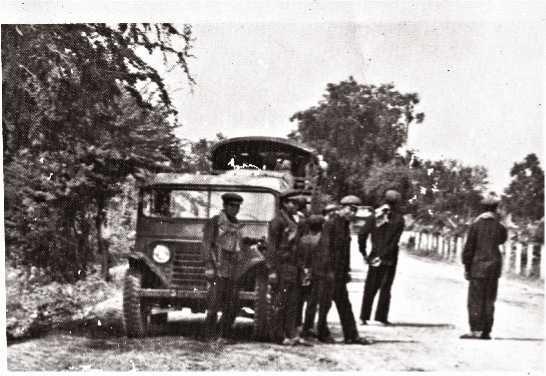
(Documentation Center of Cambodia Archives)
Intellectuals: The Khmer Rouge leaders, some of whom were well educated, saw other educated people as potential enemies of the state and as members of the corrupt class that the Democratic Kampuchea leaders believed had made Cambodia a puppet of foreign countries. Many of them were targets for execution; those who were liable to be labeled as “educated” had to pretend to be illiterate. They could survive only by hiding their knowledge and professions. Thousands of school teachers and university-educated people were killed under Democratic Kampuchea.
Engineer Pin Yathay tells of his experiences during the Khmer Rouge period in his book Stay Alive, My Son. During the evacuation in 1975, eighteen members of his family were relocated many times, ending up in Pursat. The sole survivor in his family, Pin Yathay managed to escape to Thailand in early 1977. One of the reasons he was able to survive was that he hid his profession.
One day, in Veal Vong forest in Pursat province, the village chief held another boring political meeting. He made propaganda that, “Prince Sihanouk has returned to the country and is preparing a new government, so Angkar requests specialists, well-educated people, and former government military commanders, doctors, engineers and students to be registered in a special list.” About forty people raised their hands, including former soldiers who had hidden their identity for a long time. I was undecided, but I managed to control myself and not raise my hand. After that we never had any information from those people. The villagers whispered from one to another, “Those former high-ranking officials and other specialists were all killed by the Khmer Rouge.”[19]
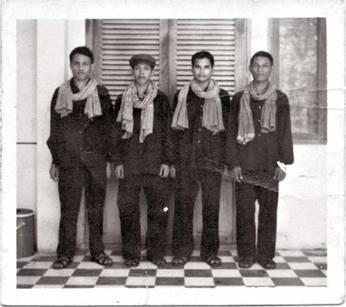
(Documentation Center of Cambodia Archives)
Alleged Traitors. Many Khmer Rouge cadres were accused of betraying the revolution and joining the Vietnamese. Simple citizens who made small mistakes were also often accused of being traitors to the revolution. The common crimes to which these people confessed included visiting home without informing the chief of their group, breaking kitchen utensils, stealing food, talking critically about Angkar, not going to work on time, not working hard enough, complaining about living conditions, wearingjewelry, engaging in sexual relations, grieving overthe loss of relatives or friends, or expressing religious sentiments. Some people who became ill because of hard work or malnutrition were accused of pretending to be sick and were labeled as lazy or malingering. They often disappeared without a trace. During Democratic Kampuchea, doing more or less than required could mean death. The Khmer Rouge slogan said: “Do whatever Angkar orders you to do! You must completely fulfill the orders made by Angkar. Comrade, do not bargain!”
External enemies. External enemies referred to the U.S. and its allies such as Thailand, as well as some socialist countries, especially Vietnam and the Soviet Union. The Khmer Rouge felt that these countries attempted to invade Cambodia and make it their colony. They also accused many people - including their own soldiers and cadres - of serving the ideologies of these countries. The Khmer rouge marked them as “hidden e nemies burrowing from within.” These included people from or allied with countries opposed to socialism, led by the United States, and revisionist or hegemonic states like the Soviet Union, Vietnam and their allies. Most of the people considered external enemies were falsely accused of working for the U.S. CIA, the Russian KGB, or the Vietnamese. The Khmer Rouge also considered Cambodians who could speak a foreign language to be spies for foreign countries. This accusation became a convenient excuse to execute people who local authorities did not like.
3. Arrests and Imprisonment
In late 1976 and early 1977, the search for hidden traitors became the Khmer Rouge’s main activity. Villagers were made to spy on one another, encouraged by the slogan: “You must know how to trace one another. Report everything to Angkar!” Other means of discovering enemies included surveillance, informers’ reports, the frequent writing of personal biographies, and confessions.
Once enemies were discovered, their names were reported to the sub-district or district committees, and then arrests were made. Angkar rarely arrested anyone in public. Instead, if a member of a cooperative was suspected, the officials would tell them, “Angkar invites you to go for further education.” Under such a guises, many victims were taken off for imprisonment and often execution without a serious examination of whether or not they had actually committed a crime. The Khmer Rouge said: “It is betterto arrest ten people by mistake than to let one guilty person go free.”
4. Interrogation and Torture
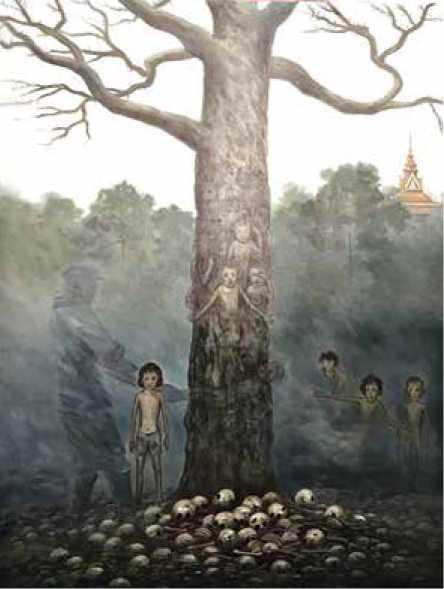
(Documentation Center of Cambodia Archives)
People charged with lesser offenses and imprisoned at a lower level usually suffered from malnutrition, untreated illness and rough treatment. Although many died under these conditions, some were neither tortured nor killed. But at the higher-level Khmer Rouge security centers like S-21, interrogation and torture were common.
Chou Sophea lived in Kampong Cham during Democratic Kampuchea. He was arrested in May 1977 without being given a reason. He described how he was caught and the conditions at a prison in Tbaung Khmum district:
One day, four soldiers arrived at my unit and politely asked me to help them connect electricity. When I came out, they pointed guns at me and tied me up. They put me in prison. After being in prison for 40 days, I was sent to an interrogation center that was harsher than the previous one. The prison guards used electric shocks to generate a confession from me. Sometimes they hit me hard. I was unconscious many times. No matter how bad the torture, I still rejected their accusations. Then I was transferred to a new interrogation center, where I stayed for 12 days. From that time on, they did not interrogate or torture me. I was skinny. Three days later, they released me, saying that Angkar had been confused. I had to promise not to tell anyone about the situation in the prison. If someone asked me, my answer had to be “do not know, do not hear, and do not see.” [20]
5. Execution
Under Democratic Kampuchea, perhaps as many as 500,000 people were executed for crimes against the revolution and the state. Thousands of “new people” who had no farming experience or skills simply disappeared. Having been evacuated to faraway forests or fields, they were killed after they made mistakes or angered their superiors. Some victims were buried alive and died of suffocation.
Nearly everyone who was known to be well educated was put to death. No one dared to wear glasses or speak foreign languages; it was a sign that they were educated. Many urban Cambodians, in particular, had to conceal their past and their talents, and pretend to be illiterate.
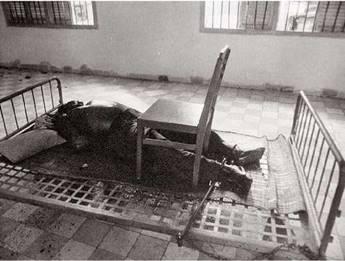
(Ho Van Tai/Documentation Center of Cambodia Archives)
Executions were carried out in a number of ways. Some who were accused of being revolutionary traitors or enemies were sent to an interrogation center. After staying there for a few months, they would be taken to the killing fields where they were forced to kneel down at the edge of mass graves. They would then be killed by a blow to the back of the head with a shovel, hoe or stick. Sometimes, people were shot to death together and buried in a grave containing up to 100 bodies. Others were suffocated with plastic bags. In the countryside, where there were many wells in the forest, prisoners were delivered by trucks to the wells and were then hit or pushed into them.
Occasionally, an entire family was summarily executed because of a mistake made by one of its members. They searched out the family members to be executed according to the Khmer Rouge adage: “To dig up the grass, one has to remove even the roots.”
Mam Phai Boun of Koh Kong province recalled how his four family members were killed:
My 7-year old sister was killed by Angkar because she stole one ear of corn to eat. She was hit with a hoe and buried near the corn farm. One afternoon, while I was walking the cows across the forest, I smelled a rotting corpse. I searched for it to see if I knew the dead. There I found the body of my father, with his neck nearly cut off from his shoulders. There were two other bodies lying dead of the same cause. Two months later, my 70-year old grandmother died; she was accused of stealing rice porridge from children and was clubbed to death. Her body was wrapped in a sack and buried. Several days later, my mother died of overwork and malnutrition. I hugged her with a heartbreaking cry.[21]
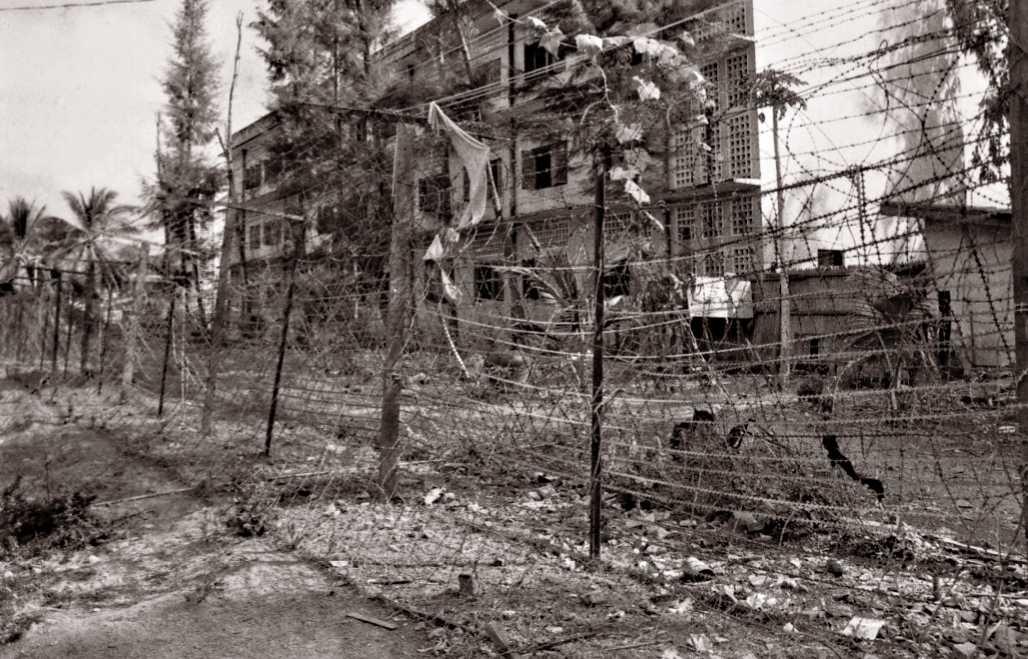
Chapter 10: Office S-21
The most important prison in Democratic Kampuchea was known as S-21 (Security Office 21). The letter “S” stood for“security” and the number“21”was a code designating its location in the southern part of Phnom Penh (Sangkat Tuol Svay Prey).
S-21 was a secret facility for the detention, interrogation, torture and extermination of its prisoners. After the middle of 1976, no one was ever released. Among the perhaps 14,000 prisoners held at S-21, only about 12 survived after Democratic Kampuchea fell. While they were incarcerated, they were spared because they had skills that were useful to S-21; they were painters, watch repairers and sculptors.
1. The Buildings
The prison had once been the Chao Ponhea Yat High School. Built in 1962, it was situated on a 600 meter by 400 meter parcel of land. Behind the school fence were two wooden buildings with thatched roofs, one of which had been the Tuol Svay Prey Primary School. Together, these buildings formed the S-21 prison.
During Democratic Kampuchea, Tuol Sleng was surrounded by corrugated iron sheets and electrified wire. There were four main buildings. The classrooms on the ground floor were divided into small cells, measuring 0.8 x 2 meters each; they were designed for single prisoners. The 8 x 6 meter rooms on the first floor were used as mass prison cells. The second floor included even larger rooms that held up to 40 or 50 prisoners. One room served as the office of S-21’s chief, Duch, and another as an office for documentation and general administration. Nearby houses were used for interrogation and torture.
2. The Prisoners
Most of the prisoners at S-21 were accused of betraying the party or revolution, or of working for traitorous cadres who had already been arrested. With the passage of time, the CPK leaders became increasingly suspicious and distrusted their own cadres and soldiers. In October 1976, for example, Pol Pot had several high-ranking CPK members arrested and imprisoned in S-21 in a move to tighten national security. The Khmer Rouge leadership saw enemies in every corner of the country and arrested hundreds of fellow communists each month. The prison population also included approximately 400 members of many other nationalities, mostly Vietnamese.
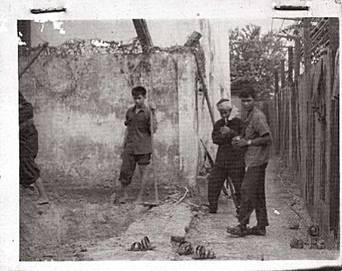
(Documentation Center of Cambodia Archives)
Some of the people who worked in S-21 also became prisoners. They confessed to being lazy in preparing documents, damaging machines and other equipment, or beating prisoners to death without permission when assisting with interrogations. Most of the confessions extracted at S-21 were probably untrue because the prisoners were innocent and confessed because of severe torture.
Khiev Cheh, alias Peou, from Kampong Chhnang province, was an S-21 guard. He recounted his story:
In 1977, two of my friends, Hong and Meoun, committed mistakes, so they were taken away and killed. After that, Angkar arrested me because I was their friend and sent me to Prey Sar. They interrogated me if I had something to do with the two, but I said, “no.” The interrogator was named Sem Phal, and he knew very well that I worked hard and faithfully. So, I was released after one and a half months and was sent to Division 502 to drive a truck that loaded weapons for Tay Ninh to fight the Vietnamese.
Life in S-21 was terrible. We dared not converse with each other. We could not trust anyone, even our close friends. Everyone had to work very hard. Besides guarding, we planted vegetables and raised pigs. We had to be very careful on duty. A small mistake, for example, like falling asleep or leaning against a wall, could lead to death.
3. Regulations
Ten regulations were posted on pieces of blackboard all around the prison compound.
SANTEBAL (SECURITY POLICE) REGULATIONS AT S-21
-
You must answer according to my questions. Do not turn them away.
-
do not try to hide the facts by making pretexts of this and that. You are strictly prohibited to contest me.
-
Do not be a fool for you are someone who dares to thwart the revolution.
-
You must immediately answer my questions without wasting time to reflect.
-
Do not tell me either about your immoralities or the revolution.
-
While getting lashes or electric shocks, you must not cry out at all.
-
Do nothing. Sit still and wait for my orders. If there are no orders, keep quiet. When I ask you to do something, you must do it right away without protesting.
-
Do not make pretexts about Kampuchea Krom so as to hide your true existence as a traitor.
-
If you do not follow all the above rules, you shall get many lashes or electric shocks.
-
If you disobey any point of my regulations, you shall get either ten lashes or five electric shocks.
Another regulation for prisoners was posted in buildings “B-C-D.”
CAUTION IN BUILDING “B-C-D”
11. You must absolutely not make contact with one another whether or not you know each other.
12. If you want to do anything, you must get permission from the guards.
13. You must not make sounds in your respective places.
14. When guards or other people arrive, you must sleep.
15. During inspection, put your hands behind your back. Don’t try to be free.
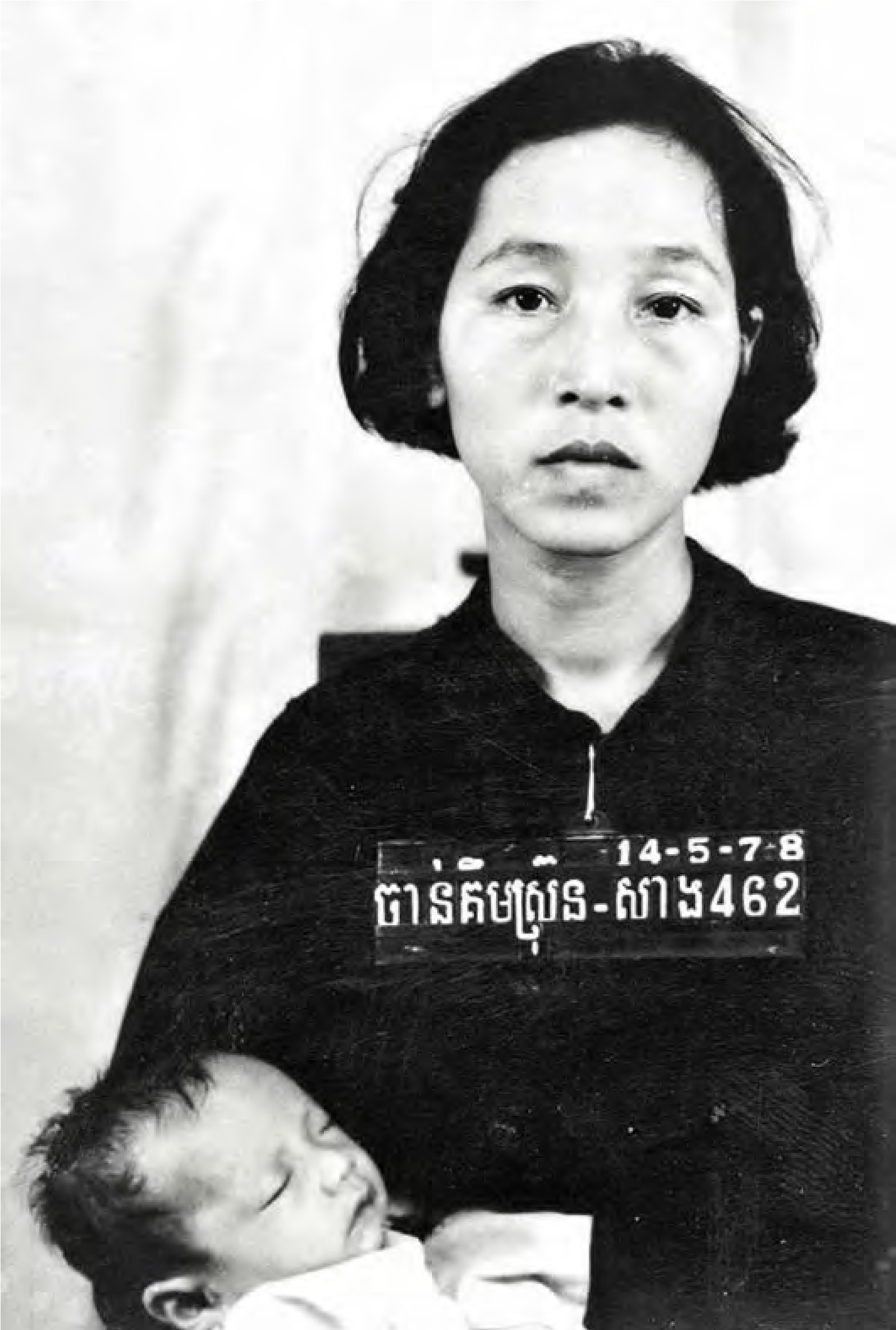
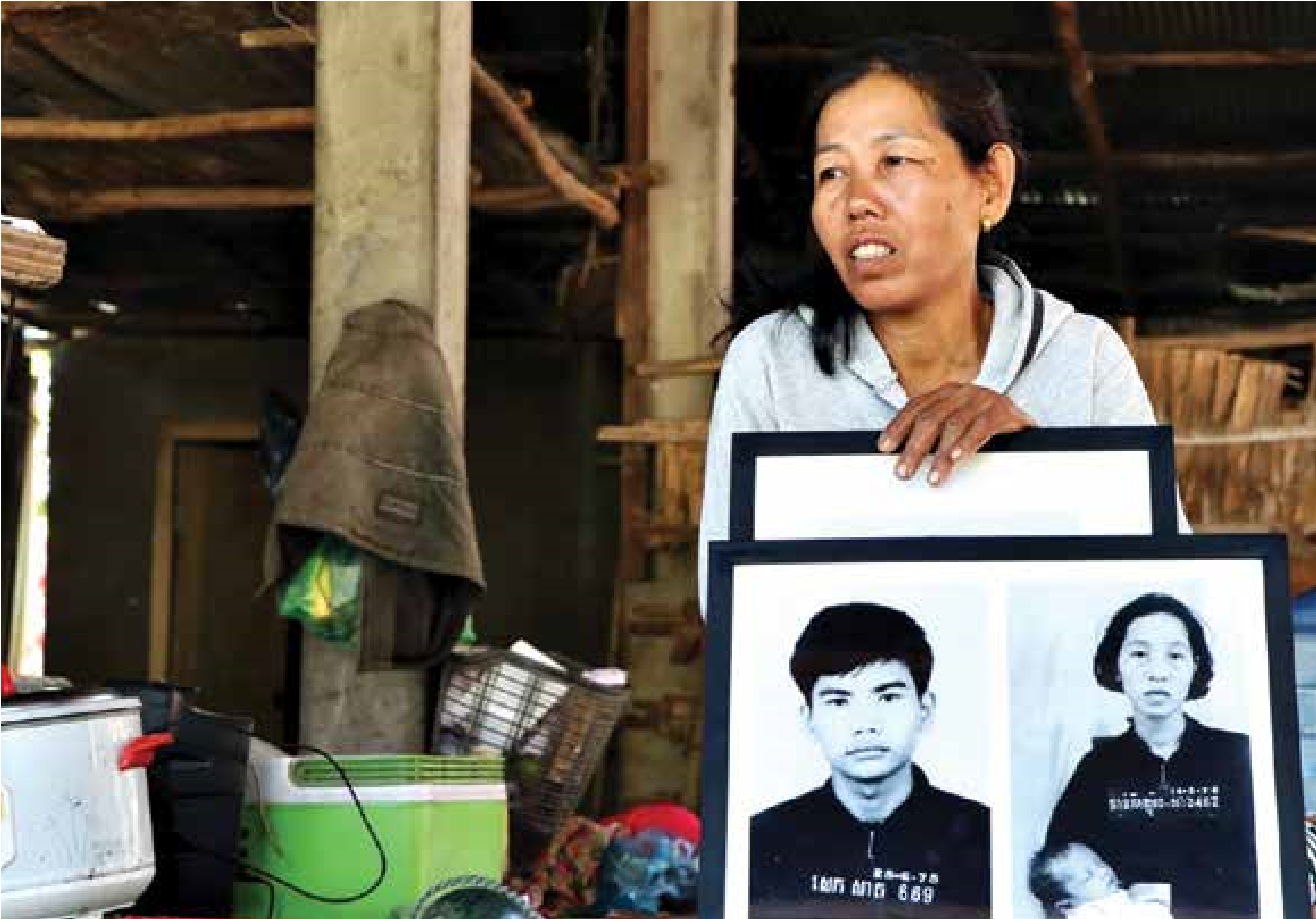
(Sopheak Pheana/Documentation Center of Cambodia Archives)
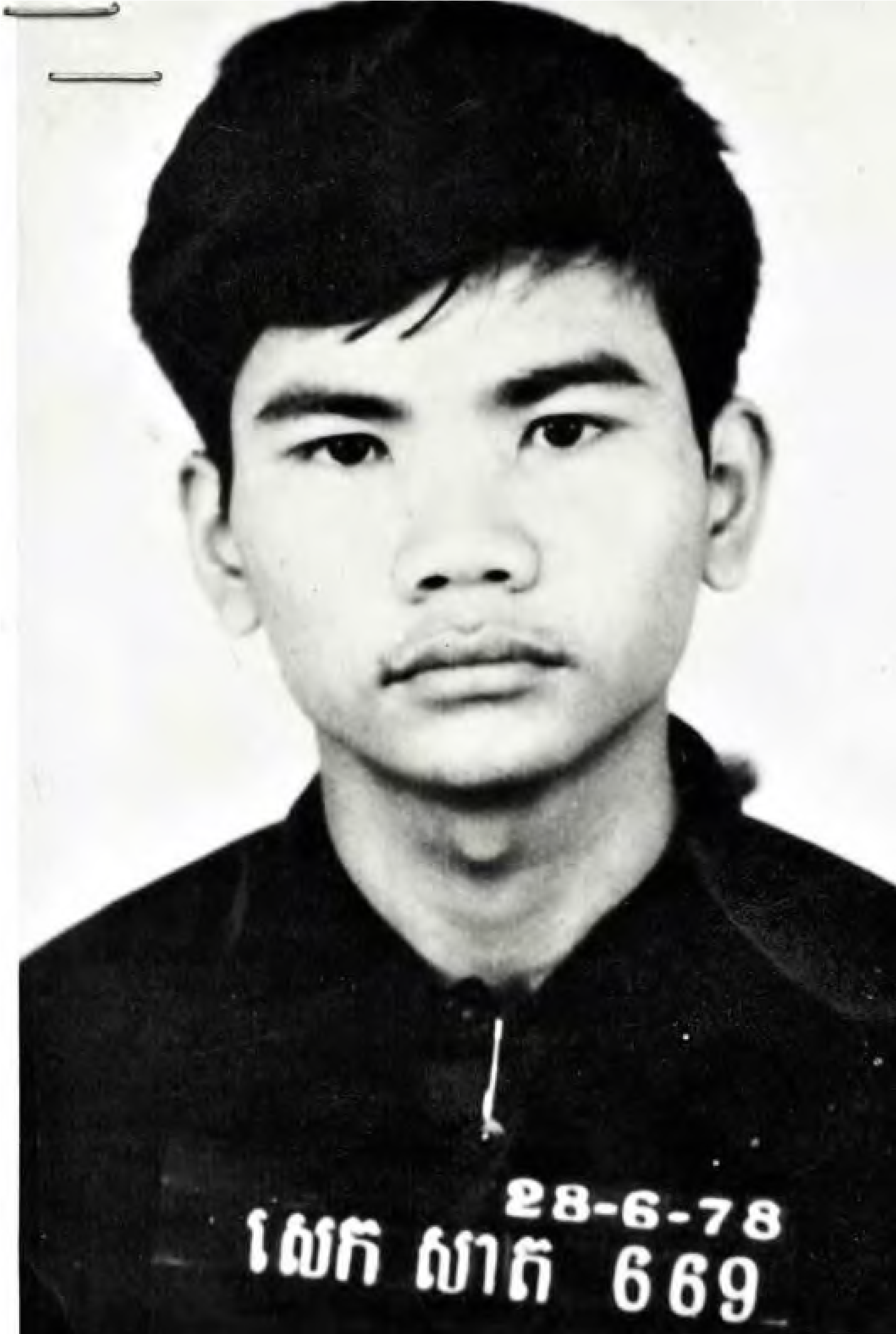
(Tuol Sleng Genocide Museum)
4. Prison Conditions
When they arrived at S-21, prisoners were photographed and required to give detailed biographies, beginning with their childhood and ending with their date of arrest. They had to strip to their underwear and their possessions were confiscated. They were then taken to cells where they were shackled with chains fixed to wall or the concrete floor, while those kept in the large cells had their legs shackled to pieces of iron bar. The shackles were fixed to alternating bars; the prisoners slept with their heads in opposite directions. They slept on the floor without mats, mosquito nets, or blankets. They were forbidden to talk to each other.
Vann Nath, one of the few S-21 survivors, describe his life in S-21:
In S-21, I was shackled to a long metal bar with more than 30 other prisoners. They gave us food twice a day. Every prisoner got four small spoonfuls of rice porridge and some watery soup of leaves. Talking to each other was completely forbidden. If anyone wanted to sit up or to drink water, they had to ask permission from the guard. Doing something without the guard’s permission would result in a serious beating. They gave us a bath every four days. They brought hoses up from downstairs and sprayed everyone from the doorway. If you were on the far side of the room, you did not get very wet. Every day, prisoners were brought out to be interrogated and some never returned, but new prisoners were brought in instead.[22]
At 4:30 a.m., prisoners were asked to strip for inspection. The guards would then check to see whether the shackles were loose or if prisoners had hidden any objects they could use to commit suicide. Over the years, several prisoners managed to kill themselves, so the guards were very careful in checking the shackles and cells.
Because of the filthy living conditions at S-21, most prisoners suffered from ringworm, rashes or lice. There were no medicines for treatment. S-21’s medical staff were untrained and offered treatment only to sustain prisoners’ lives after they had been injured during interrogation.
When prisoners were taken from one place to another for interrogation, their faces were covered. Guards and prisoners were not allowed to converse. Moreover, within the prison, people who were in different groups were not allowed to have contact with one another.
5. Interrogation
Harsh tactics were used to extract confessions at S-21. Prisoners were beaten with hands, sticks, or tree branches. Sometimes they were lashed with wires or given electric shocks. Other methods of torture used at S-21 included pressing a burning cigarette into prisoners’ flesh, forcing them to eat human waste or drink urine, piercing them with needles, and hanging prisoners by their legs or hands for the whole day. Some prisoners were cut with knives or suffocated with plastic bags. Other methods for generating confessions included pulling out fingernails while pouring alcohol on the wounds or holding prisoners’ heads under water. Some prisoners died under torture.
Female prisoners were tortured by cutting off their breasts or by forcing them to take off their clothes. Females were sometimes raped by the interrogators, even though sexual abuse was against Democratic Kampuchea policy. The perpetrators who were found out were executed.
In their confessions, the prisoners were asked to describe their personal background. If they were party members, they had to say when they joined the revolution and describe their work assignments in Democratic Kampuchea. Then the prisoners would relate their supposed treasonous activities in chronological order. The third section of the confession text described prisoners’ thwarted conspiracies or supposed treasonous conversation. At the end, the confessions would list a string of traitors who were the prisoners’ friends, colleagues, or acquaintances. Some lists contained over a hundred names. People whose names were in the confession list were often called in for interrogation.
Because the torture at S-21 was so harsh, prisoners often confessed to whatever they could think of, even if it was false. Um Samnang, a worker in the Train Section, confessed to a treasonous conversation he had with Ton, a train construction worker:
Ton was a senior worker. He was not satisfied with the revolution, just like his colleagues.
Every day, he spread propaganda as follows:
-
Because I taught them almost all of the techniques, they want to chase me out of this place.
-
If you continue to act like this, one day you will be dissolved like salt in water.
-
Today, senior workers are like rubbish under their feet; they can step on them whenever they wish.
-
They are only good at boasting and theory, but not in practice.
-
I work only for rice; I do not care what is damaged.[23]
-
Moreover, he is prepared to fight the revolution whenever there are soldiers fighting from outside.
Chea Hoeung, a professor and who was evacuated to Baray, Kampong Thom, confessed to the treasonous activities of Tang Long, an official in the Ministry of Post and later a first lieutenant:
When he was evacuated to his home village, he gathered his colleagues to resist the revolution. He gradually sabotaged us as follows:
He instructed his cliques to set cows free to eat rice.
He instructed his cliques to destroy plates and dishes, one by one.
He instructed his cliques to kill one or two ducts at a time and report that they had died.
He made his house a place for producing leaflets and scattered the leaflets at work sites.[24]
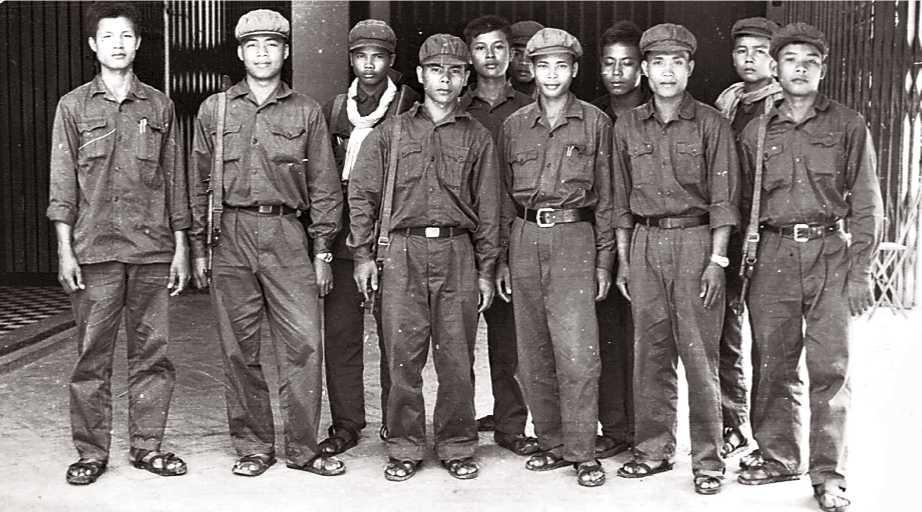
6. Organizational Structure
Over a thousand people worked in and for S-21. Several hundred of them were general workers, including people who grew food for the prison. The rest were the internal workforce, including office personnel, who worked in one of the prison’s three units.
S-21 consisted of a documentation unit, a defense unit, and an interrogation unit. The documentation unit was responsible for transcribing tape-recorded confessions, typing the handwritten notes from prisoners’ confessions, preparing summaries of confessions, and maintaining files. In the photography sub-unit, workers took mug shots of prisoners when they arrived, pictures of prisoners who had died while in detention, and pictures of important prisoners after they were executed. Thousands of photographs have survived, but thousands are still missing.
The defense unit was the largest unit in S-21. The guards in this unit were mostly teenagers. Many guards found the unit’s strict rules hard to obey. Guards were not allowed to talk to prisoners, to learn their names, or to beat them. They were also forbidden to observe or eavesdrop on interrogations, and they were expected to obey 30 regulations, which barred them from such things as taking naps, sitting down or leaning against a wall while on duty. They had to walk, guard, and examine everything carefully. Guards who made serious mistakes were arrested, interrogated, jailed and put to death. Most of the people employed at S-21 were terrified of making mistakes and feared being tortured and killed.
Within the interrogation unit, there were the hot sub-unit, cold sub-unit, and the chewing sub-unit. The hot unit (sometimes called the cruel unit) was allowed to use torture. In contrast, the cold unit (sometimes called the gentle unit) was prohibited from using torture to obtain confessions. If they could not make prisoners confess, they would transfer them to the hot unit. The chewing unit dealt with tough and important cases.
The hours of interrogation were very long. Sometimes, the process extended far into the night. Those who worked as interrogators were literate and usually in their twenties.
DUCH
(original name, Kaing Guek Eav) Duch was born in 1945 in Kampong Thom. He studied at Sisowath High School and won second place in nation-wide mathematics contest. He worked as a math teacher in Kampong Thom. In 1964, he was appointed an official of the Teacher Training School after Son Sen fled the city. He joined the Communist Party of Kampuchea in 1970. He was eventually made the Chairman of the notorious Khmer Rouge security center known as S-21 (or Tuol Sleng).
Duch defected from the Khmer Rouge in the 1980s and became a Christian. He was arrested in May 1999. In February 2005, he was charged with war crimes and harming foreign nationals during Democratic Kampuchea. He was tried by the ECCC and, in 2012, the Supreme Court Chamber sentenced him to life imprisonment for crimes against humanity and grave breaches of the Geneva Conventions of 1949 in Case 001.
7. Leaders
S-21 was controlled by the Ministry of Defense, chaired by Son Sen (aka, comrade Khiev). Before joining the CPK, he had studied in France and was a teacher.
The leading figures of S-21 were Duch (chief of S-21), Khim Vat, aka Hor (deputy chief of S-21), Peng (chief of guards), Chan (chief of the Interrogation Unit), and Pon (interrogator). Pon was the person who interrogated important people such as Keo Meas, Nay Sarann, Ho Nim, Tiv Ol, and Phok Chhay. All of them were former school teachers.
8. Executions
Most prisoners at S-21 were held for two to three months. However, several high-ranking Khmer Rouge cadres were held for several months and their confessions were sometimes several hundred pages long. Within two or three days after they were brought to S-21, all prisoners were taken for interrogation with little
uuiie ,,111 ravnni, southern Vietnam. His wife was Yun Yat (aka, comrade Att), who was minister of education and culture under Democratic Kampuchea. He studied in France between 1950 and 1956 and joined the French Communist Party. In 1963, he fled to the jungle, escaping from the police. He became chief of staff of the Cambodian People’s National Liberation Armed Forces in 1971.
During Democratic Kampuchea, Son Sen was third deputy prime minister in charge of national defense and he was directly responsible for S-21. Son Sen and his family were killed in Anlong Veng district under orders from Pol Pot on June 10, 1997.
or no regard for the truth. They had to admit that they were revolutionary traitors or had committed the crimes
that were dictated to them. After the interrogations were complete, prisoners were “smashed” or “discarded,” the euphemisms used in Democratic Kampuchea for “execution.”
For the first year of S-21’s existence, corpses were buried near the prison. However, by the end of 1976, cadres ran out of burial spaces, so the prisoners were taken by trucks at night to Choeung Ek (located 13 kilometers southwest of Phnom Penh), where they were beaten to death with hoes, axes, or sticks, or were shot. Usually, after prisoners were executed, the soldiers who had accompanied them from S-21 buried them in graves that held as few as 6 and as many as 100 bodies.
S-21 prison was made into a genocide museum and Choeung Ek was recognized as a memorial by the government of the People’s Republic of Kampuchea with assistance from Vietnam in 1979.
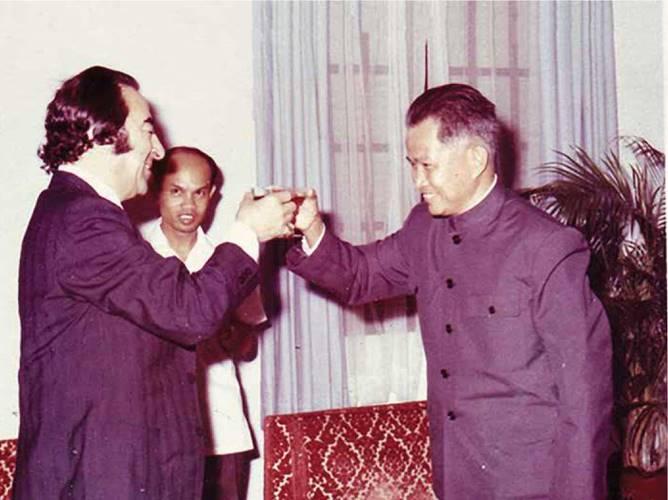
Chapter 11: Foreign Relations
Democratic Kampuchea had diplomatic relations with China, North Korea, Vietnam, Laos, Cuba, Romania, Yugoslavia, Albania, and Egypt. All of these countries had embassies in Phnom Penh. During Democratic Kampuchea, their diplomats, except the Chinese, were confined to their embassies.
Democratic Kampuchea had embassies only in China, North Korea, Vietnam (until December 1977), and Laos. Of these, China and North Korea were friendly, and Laos was relatively friendly. But relations with Vietnam grew increasingly poor as a result of border clashes and ideological differences. Most of the CPK’s leaders were anti-Vietnamese and any of them who had ever lived in Vietnam or had relations with the Vietnamese were purged (except Son Sen and Ieng Sary). The people who were purged were accused of having “Cambodian bodies with Vietnamese minds.” The two countries also disagreed on who owned the under-sea petroleum deposits along the coast of Democratic Kampuchea. The CPK wanted to take Kampuchea Krom[25] back from Vietnam. They also disliked Vietnam’s idea of “Indochina.”
Clashes between Vietnam and Democratic Kampuchea began in late 1975. Soon afterward, serious fighting erupted on Tral Island (Phu Quoc in Vietnamese). In mid-1976, Democratic Kampuchea established closerties with China and the Democratic Kampuchea-Vietnamese conflict became part of the Sino-Soviet rivalry, with Moscow backing Vietnam and Beijing backing Democratic Kampuchea. By the end of 1976, Democratic Kampuchea had obtained massive military aid from China. In 1977, Democratic Kampuchea forces attacked Vietnamese villages that bordered Cambodia and killed hundreds of civilians. Diplomatic relations between the two countries were broken in December 1977.
Democratic Kampuchea expanded its diplomatic efforts in 1978, and its foreign trade reached its peak at that time. The countries known to have had trade relations with Democratic Kampuchea were China, North Korea, Thailand, Japan, Hong Kong, Madagascar, Bangladesh, and Singapore. The main exports of Democratic Kampuchea were rice, rubber, timber, and exotic animal parts (skins, tusks, shells), while its main imports included weapons, tanks, artillery, farm machinery, chemical products and cloth.
Most of Cambodia’s exports—which were far smaller than they had been before 1970—went to China, which was the only country that had a major influence on Democratic Kampuchea. From 1977 to late 1978, China provided Democratic Kampuchea with hundreds of tanks, cars and heavy weapons, tens of thousands of shells and bullets, and sixjet fighters. The Chinese also offered to repair the railroad from Phnom Penh to Kampong Saom and build a new militaryairport in Kampong Chhnang. In addition to trade relations, military assistance and financial support, China sent several thousand of experts to work as technicians and advisors in Democratic Kampuchea. These people helped train Khmer rouge cadres on warfare, medical services, and factory operations. Democratic Kampuchea requested Chinese troops to help fight against Vietnam, but China rejected the request and suggested cease-fire negotiations, which Democratic Kampuchea declined.
IENG SARY
(aka comrade Vann)
leng Sary was born in 1930 in Vinh Binh, South Vietnam. He married Khieu Thirith. In 1950, he won a scholarship to study in France and became a member of the French Communist Party. He returned home in 1957 and joined the People’s Revolutionary Party of Kampuchea. Ieng Sary taught at Kampuchaboth High School until 1963, when he fled to the jungle. He later became the military commander of the Northeast Zone.
In 1976, Ieng Sary was appointed first deputy prime minister in charge of foreign affairs. He was also a member of the Central Committee and Standing Committee. He defected to the Royal Government of Cambodia in 1996.
In 2007 he was arrested on an arrest warrant from the ECCC for grave breaches against the Geneva Conventions and crimes against humanity, along with his wife, Ieng Thirith, who was also arrested for crimes against humanity. Ieng Thirith was declared mentally unfit to stand trial due to a severe case of Alzheimer’s disease. As a result of her mental incompetence, she was released from prison and she died on August 22, 2015. Ieng Sary also died of natural causes on March 19, 2013. Neither were found guilty by a court of law for the crimes they were charged.
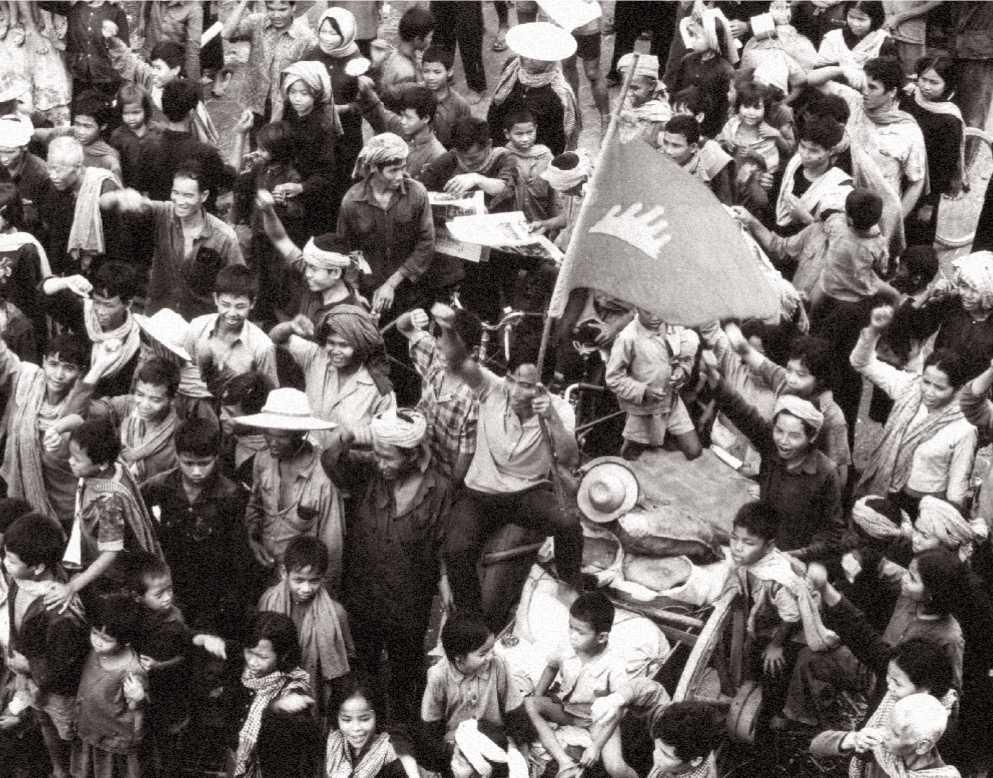
(Documentation Center of Cambodia Archives
Chapter 12: The Fall of Democratic Kampuchea
1. Three Reasons Why Democratic Kampuchea Fell
A weakened populace. Democratic Kampuchea’s four-year plan specified that the country would produce a yield of three tons of rice per hectare. This figure was double the pre-revolutionary yield. When production quotas could not be met, cadres throughout the country falsified their production reports. They then sent as much rice as possible to the party center, forcing people to go hungry.
Because the entire country depended on secrecy, the plan to harvest three tons per hectare became impossible to implement. Regions were not allowed to share information or to see what was going on. Rarely did anyone from the party center come to see how people lived or to plan the work of the cadres under their supervision. The senior leaders seemed to believe what their subordinates reported to them, while the cadres were terrified to report any bad news. CPK officials believed that the party never made mistakes and could never be wrong. All bad things were the fault of foreigners or traitors. As living conditions grew worse during the regime, hundreds of thousands died from overwork and malnutrition.
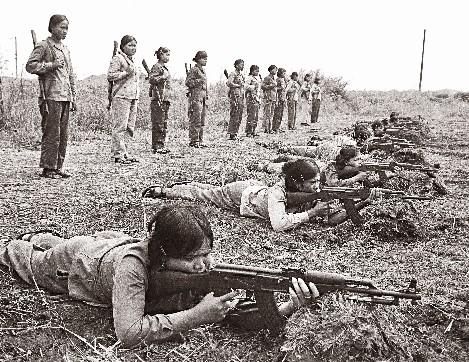
Source: Fresh News, 2017.
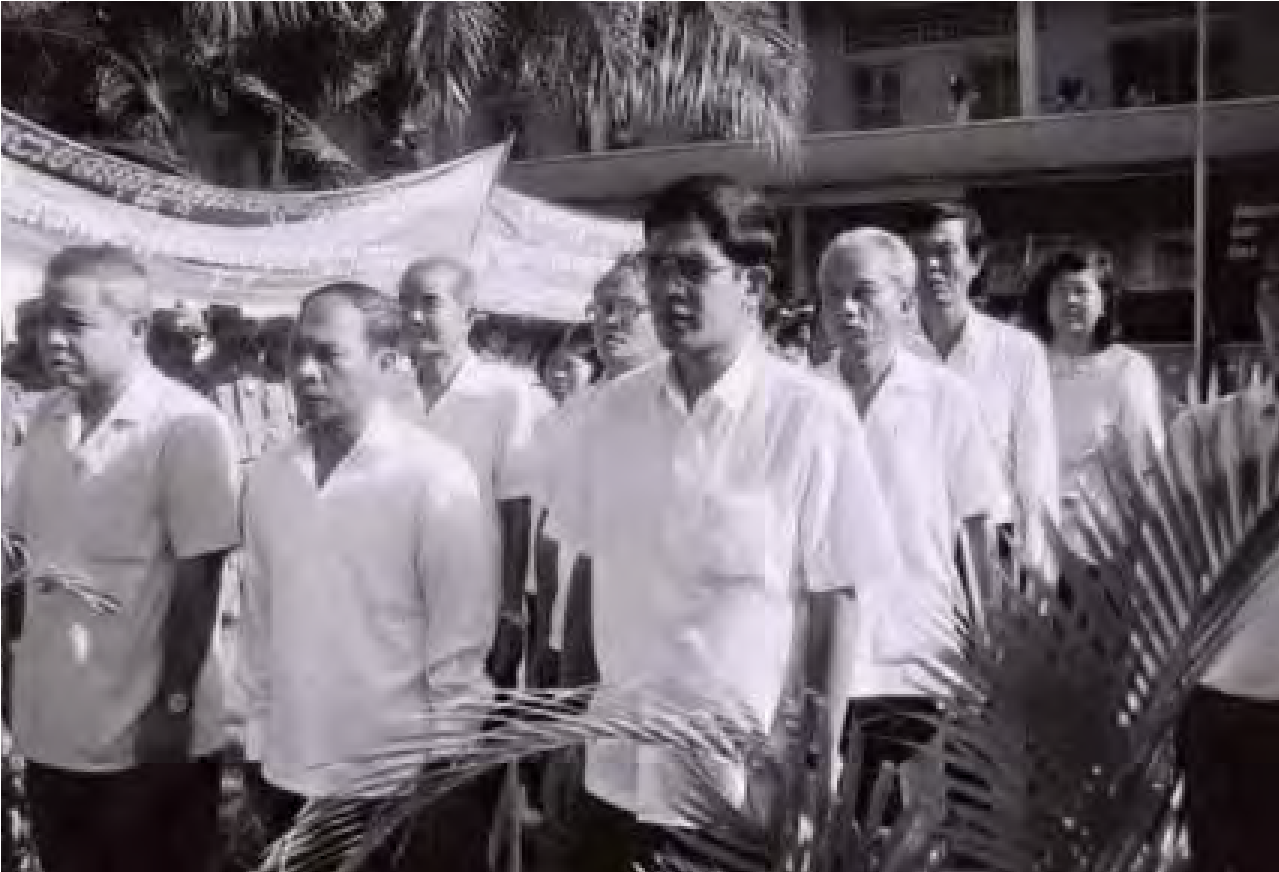
(Documentation Center of Cambodia Archives)
Purges. In mid-1976 many key members of the CPK were purged. From then on, Pol Pot and his colleagues believed that a rebellion against the leadership of the party was always being hatched. They believed that their enemies were everywhere. Many chiefs of zones, regions and military commands were arrested and executed. The situation grew worse in 1977 when Pol Pot ordered the assassination of the cadres in the East Zone and then purged almost all of the people living in the zone. After the Vietnamese invasion in late 1977, the remaining people in the East Zone were thought to have joined the Vietnamese and were labeled “Cambodian bodies with Vietnamese minds.” So, the party center sent troops to attack the East Zone, leaving tens of thousands of its residents dead. Hundreds of men fled to Vietnam, where the Vietnamese helped them form a military unit.
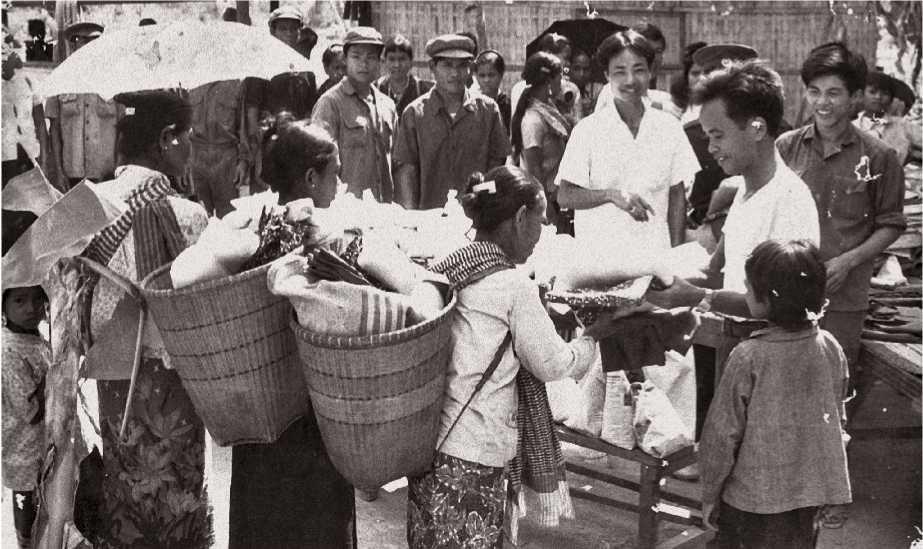
Clashes with Vietnam. This was the most definitive cause of Democratic Kampuchea’s demise. In 1975, Democratic Kampuchea began initiating its sporadic attacks on Vietnam. High-profile attacks broke out in the middle of 1977 when the Khmer Rouge shelled Chaudoc, Hatien and other Vietnamese provinces, causing many casualties among civilians and unprepared militia. Thousands of Vietnamese fled into the interior of Vietnam. Within a few days of the attack, about 1,000 Vietnamese civilians were injured or dead.
In December 1977, Vietnam used warplanes and artillery to launch a major attack on Democratic Kampuchea, capturing the territory known as the Parrot’s Beak area in Svay Rieng province. Vietnamese forces penetrated more than 20 kilometers inside Democratic Kampuchea, reaching the city of Svay Rieng. As a result, Democratic Kampuchea broke diplomatic relations with Vietnam and ordered Vietnamese diplomats in Phnom Penh to leave the country. The Khmer Rouge agreed to negotiate the border dispute only when all Vietnamese troops had withdrawn from Democratic Kampuchea territory. Soon afterwards, Vietnam withdrew its troops, bringing with them thousands of prisoners as well as civilians. No negotiations ever took place.
Instead, Vietnam accused the Khmer rouge of attacking all eight provinces along its border with Cambodia. Vietnam decided to encourage the opponents of the Khmer Rouge to revolt against them. They also began training Cambodians in Vietnam to take part in military operations and to form the nucleus of a new regime. The two countries were at war throughout 1978.
On April 3, 1978, Radio Hanoi broadcast in the Khmer language an appeal to the people of Cambodia to stand up and resist Democratic Kampuchea. Vietnam selected some Cambodians who had fled to Vietnam to serve in military units under Vietnamese guidance. Most of them were East Zone cadres, soldiers, and residents. By this time, part of the zone was under Vietnamese control and the rest was controlled by a rebel group opposed to the Khmer Rouge.
On December 3, 1978, Radio Hanoi announced the establishment of the United Front forthe National Salvation of Kampuchea,[26] and on December 25th, the Vietnamese General Van Tien Dung launched a major assault on Democratic Kampuchea. His troops occupied Kratie province within five days and Kampong Cham in a week. Then, on January 7, 1979, Vietnamese soldiers and soldiers of the United Front for the National Salvation of Kampuchea captured the capital city of Phnom Penh. Soon afterward they occupied nearly the entire country. They quickly organized a conference to create the Kampuchean People’s Revolutionary Council as Cambodia’s provisional government.
TA MOK (original name, Chhit Choeun)
Ta Mok was born in 1926 in Takeo province. He spent several years as a Buddhist monk. He married his cousin, Uk Khoem, and they had four children. In 1949, Ta Mok was the chief of Issarak district in Takeo province. He became a communist in 1963.
From 1968 to 1978, Ta Mok was secretary of the Southwest Zone.
In November 1978, Ta Mok was appointed second deputy secretary of the CPK. After Democratic Kampuchea fell, he never applied for amnesty and never attempted to defect. He was captured near the Thai border by the Cambodian army in March 1999 and he was imprisoned. He died of disease on July 21, 2006.
2. The Aftermath
In early 1979, the Vietnamese helped to create a new regime in Phnom Penh, called the People’s Republic of Kampuchea (PRK). The PRK governed Cambodia until the Vietnamese troops withdrew a decade later, in 1990. Democratic Kampuchea leaders and soldiers fled from Phnom Penh to the northwest on foot, in trucks and by train. They forced hundreds of thousands of people to go with them. During this second forced evacuation, many people died of hunger, disease or injuries.
Many people found their way back to their native villages. Prince Sihanouk and his family were evacuated by plane to China.
The Khmer Rouge established theirfunctioning organization along the Thai border, supported militarily by countries such as China and Thailand. Until 1990, the United Nations continued to allow Democratic Kampuchea’s representative to occupy Cambodia’s seat in the General Assembly, in spite of objections from the PRK and its socialist allies.
In 1979, the Khmer Rouge announced the formation of a “United Front for Great National Solidarity, Patriotic and Democratic,”that failed to attract many participants. At the same time, the first noncommunist resistance group, the Khmer People’s National Liberation Front(KPNLF)was founded by Samdech Son Sann, who was Prime Minister in the Sangkum period (1955-1970).[27]
Soon afterwards, a royalist faction known as the National United Front for an Independent, Neutral, Peaceful, and Cooperative Cambodia (FUNCINPEC) was formed under the Presidency of Prince Sihanouk. In 1982, FUNCIN- PEC, KPNLF and the Khmer Rouge formed the Coalition Government of Democratic Kampuchea (CGDK) with
Prince Sihanouk as president, Khieu Samphan as vice president, and Son Sann as prime minister. The purpose of the CGDK was “to mobilize all efforts in the common struggle to liberate Kampuchea from the Vietnamese aggressors.” The CGDK, in which the Khmer Rouge was the biggest portion, held Cambodia’s seat at the U.N..
After years of negotiations, all Cambodian parties to the conflict signed a peace agreement in Paris on October 23, 1991, agreed to organize a national election under the supervision of the United Nations Transitional in Cambodia (UNTAC). The Khmer Rouge boycotted the U.N.-organized election and refused to demobilize their forces. For several years, Khmer Rouge soldiers continued to fight against troops of the 1993-elected Royal Government of Cambodia.
In August 1996, Ieng Sary defected to the Royal Government of Cambodia, bringing some Khmer Rouge units with him. Other senior Khmer Rouge leaders, such as Ke Pauk, Nuon Chea and Khieu Samphan, defected in 1998. After Pol Pot died in 1998, Ta Mok was the only surviving leader who refused to join the Royal Government of Cambodia; he was captured in March 1999. By then, all the surviving Khmer rouge leaders had surrendered or had been arrested, and the movement totally collapsed. People living in the Khmer Rouge controlled areas repatriated and reunited with the Royal Government of Cambodia. @@@
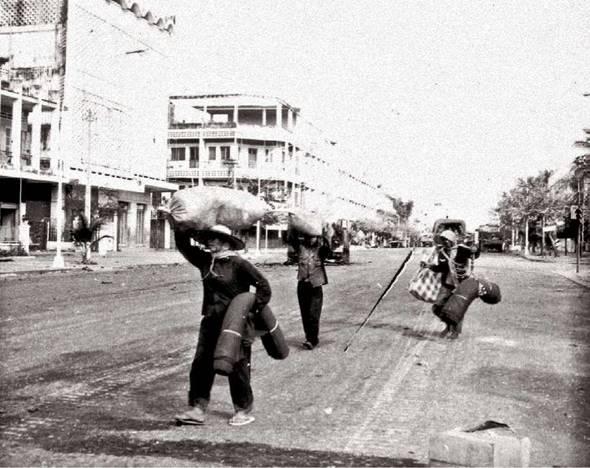
(Documentation Center of Cambodia Archives)
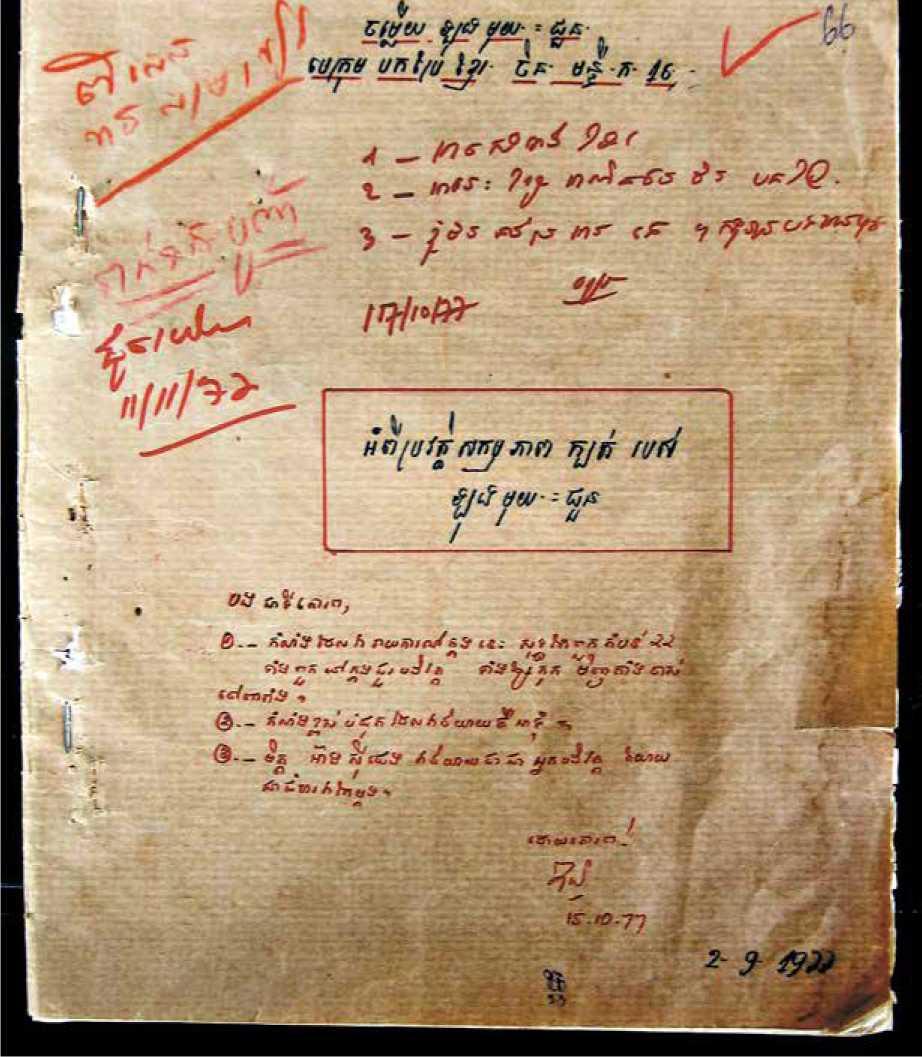
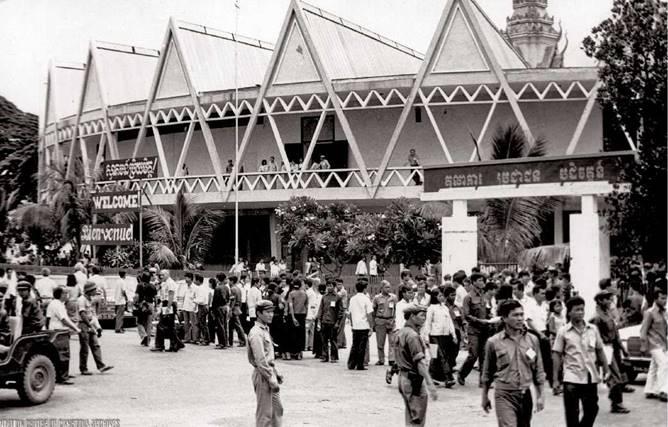
Chapter 13: Establishment, Organization, and Jurisdiction of the Extraordinary Chambers in the Courts of Cambodia
On January 7, 1979, Vietnamese forces invaded and captured the capital, marking the formal end of the Khmer Rouge state known as Democratic Kampuchea. While the Khmer Rouge no longer controlled the country, they nevertheless persisted as a formidable guerilla force for over a decade.
In 1997, the government of Cambodia requested assistance from the United Nations (U.N.) for the purpose of establishing a trial to prosecute senior leaders of the Khmer Rouge, and in November 1998, the U.N. sent a team of experts to Cambodia and Thailand in order to determine the nature of the crimes that occurred during the Khmer Rouge regime. The experts found sufficient physical evidence and witness testimonies to recommend criminal proceedings against the Khmer Rouge leadership. The experts recommended that the U.N. mandate an ad hoc international tribunal to investigate and prosecute allegations of genocide and crimes against humanity. The government of Cambodia believed a domestic court was the optimal way to handle these crimes, while the international community wanted an international court.
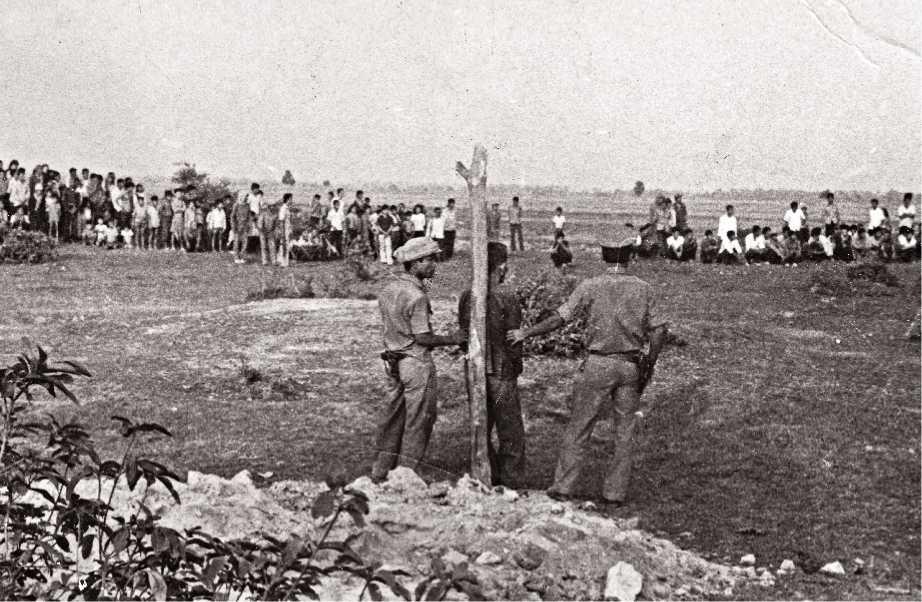
In 2001, the Cambodian National Assembly passed a law to establish a domestic court, called the Extraordinary Chambers in the Courts of Cambodia (ECCC), which would be responsible for trying individuals for serious crimes committed during the Khmer Rouge period (1975-1979). In 2003, the U.N. and the government of Cambodia came to an agreement on how the international community would assist and participate in the ECCC. The ECCC would be a Cambodian court created under Cambodian law, with international participation and assistance from the U.N. The court would be independent of the Cambodian government and the U.N., but it would apply international standards ofjustice and it would be comprised of both Cambodian and international judges, legal officers, and administrative staff.
The ECCC comprises four primary components, all of which have a Cambodian and an international side. Three judicial chambers (Pre-Trial, Trial, and Supreme Court Chambers), the Office of Co-Investigating Judges, the Office of the Co-Prosecutors, and the Office of Administration. Outside of these components, Defense counsel are made available to the Accused and attorneys are assigned to the Civil Parties who represent victims or surviving family members of victims relevant to a particular case.
The Office of Co-Investigating Judges is responsible for performing investigations to decide which persons can be tried and for what crimes.
The Office of Co-Prosecutors is responsible for bringing indictments and conducting the prosecution against the Accused.
The Civil Party Lead Co-Lawyers Section represent the interests of the consolidated group of Civil Parties. Once a person is recognized as a Civil Party he or she becomes a “party” to the proceedings. To become a Civil Party, a person must show that he or she has suffered some type of harm as a direct result of crimes alleged in a particular case before the ECCC. Whereas many Civil Parties are survivors of the Khmer Rouge period, many family members of people who died during the Khmer Rouge period are also recognized by the ECCC as Civil Parties. The Civil Party Lead Co-Lawyers Section bears ultimate responsibility to the court for the overall advocacy, strategy, and in-court presentation of the interests of the consolidated group of Civil Parties.
The Office of Administration supports the operations of the court through various administrative functions, which include: Hiring and training court personnel; handling the court’s fiscal matters; supporting the court’s internal and external communications; records management and preserving and storing evidence; safety and security of the staff and the ECCC premises; development and implementation of witness and expert support and safety procedures; detention; and other general services such as equipment, facilities, supplies and transportation.
Victims Support Section is responsible for assisting victims in lodging complaints, submitting Civil Party applications, and, among other functions, providing general information and assistance to victims, especially Civil Parties.
Defense Support Section is responsible for coordinating the support of foreign and domestic lawyers in their defense of persons before the ECCC. Defense attorneys are independent from the court and the section as it relates to the substantive defense matters of their clients.
The Pre-Trial Chamber is composed of five judges, three of whom are Cambodian judges with one president, and two foreign judges. The role of the Pre-Trial Chamber is to settle pre-trial issues or disagreements as brought to them by either of the Co-Prosecu- tors or Co-Investigating Judges.
The Trial Chamber is composed of five judges, three of whom are Cambodian judges, with one as president, and two foreignjudges.
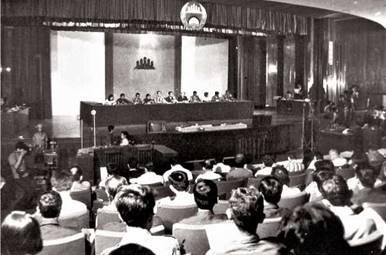
(Documentation Center of Cambodia Archives)
The Supreme Court Chamber serves as the final appeals chamber. The Supreme Court Chamber is composed of seven judges, four of whom are Cambodian judges, with one as president, and three foreign judges.
Jurisdiction: The ECCC has jurisdiction over two categories of perpetrators: (1) Senior leaders of Democratic Kampuchea; and (2) Those believed to be most responsible for grave violations of national and international law. The ECCC’sjurisdiction is also limited to specific categories of crimes alleged to have been committed between April 17, 1975, and January 6, 1979. Under the ECCC Law, the ECCC has the power to bring suspects to trial for acts of genocide, crimes against humanity, grave breaches of the Geneva Conventions of 1949, and any crimes as set forth in the 1956 Penal Code. In addition, underthe ECCC Law, the ECCC hasjurisdiction to bring suspects to trial for the destruction of cultural property in accordance with the 1954 Hague Convention for Protection of Cultural Property in the Event of Armed Conflict, and crimes against internationally protected persons pursuant to the Vienna Convention of 1961 on Diplomatic Relations.
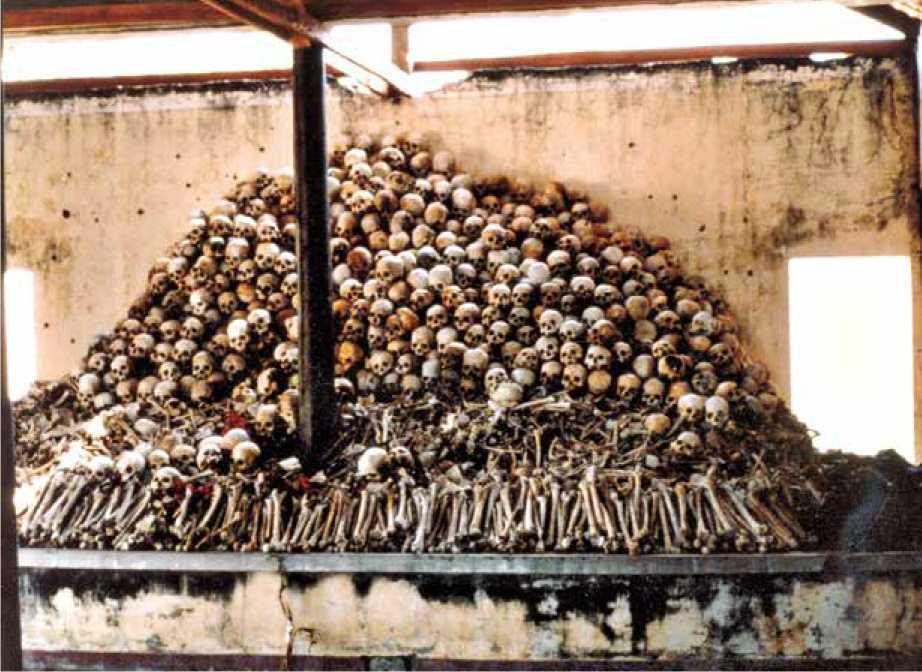
(David Hawk/Documentation Center of Cambodia Archives)
1. Eccc Legal Principles, Concepts, and Laws as Derived From the Eccc Law and References
Disclaimer
The ECCC draws from many legal principles, concepts, and laws as derived from Cambodian law, international treaties and court decisions, and customary international law. The following list reflects a summary of several basic concepts as reflected in the ECCC law and relevant treaties, such as the 1966 International Covenant on Civil and Political Rights, in which Cambodia is a party. This list is provided solely for educational purposes, and it does not reflect an exhaustive summary of important principles, concepts and laws governing the ECCC, nor does it reflect an official interpretation or position by the Cambodian government, the UN, or the ECCC. The reader is encouraged to refer to the relevant laws and Cambodian Government, U.N. and ECCC interpretations for the current, official position.
Presumption of innocence: An accused person has the right to be presumed innocent until he has been definitively found guilty by the court. Art 35 new of ECCC law.
Trial that is fair and expeditious - The accused is guaranteed a right to a trial that is fair and expeditious. Art 33 new of ECCC law.
Security of suspects, and Protection of victims and witnesses: The Royal Government of Cambodia shall guarantee the security of suspects who appear before the court, and the court shall provide for the protection of victims and witnesses, which shall include the protection of the victim’s identity. Art 33 new of ECCC law.
Due process of law: All persons shall be equal before the courts and the ECCC In the determination of any criminal charge against him, or of his rights and obligations in a suit at law, everyone shall be entitled to a fair and public hearing by a competent, independent and impartial tribunal established by law. Art. 14 of the 1966 CCPR, which is incorporated by reference in t he ECCC law.
Individual responsibility: Suspects are individually responsible for their crimes, and the position or rank of any suspect shall not relieve such person of criminal responsibility or mitigate punishment. In addition, a leader can be found criminally responsible for the acts committed by subordinates if he or she had command and control over these subordinates and he or she knew (or should have knew) of their acts. A leader can also be held responsible if he fails to take reasonable measures to prevent criminal acts or punish the perpetrators. The fact that a suspect acted pursuant to an order of the Government of Democratic Kampuchea or of a superior shall not relieve the suspect of individual criminal responsibility. Article 29 of ECCC law.
No crime without law: No one shall be held guilty of any criminal offence on account of any act or omission which did not constitute a criminal offence, under national or international law, at the time when it was committed. Art. 15 of 1966 CCPR, which is incorporated by reference in the ECCC law.
Transparency: Trials must be open to the public unless in exceptional circumstances the ECCC decides to close the proceedings for good cause in accordance with existing procedures in force where publicity would prejudice the interests of justice. Examples of when the interests of justice would support a closed hearing would be circumstances in which witnesses’ identity may need to be protected. Art 34 new of ECCC law.
Justice without delay: The accused shall be tried without delay. Art 35 new of ECCC law.
The Accused’s Rights of Defence:
Accused preparation of defence: The accused shall have adequate time and facilities for the preparation of their defense and to communicate with counsel of their choosing. Art 35 new of ECCC law.
Accused right to defend him or herself: The accused shall be tried in their own presence and to defend themselves in person or with the assistance of counsel of their own choosing, to be informed of this right and to have legal assistance assigned to them free of charge if they do not have sufficient means to pay for it. Art 35 new of ECCC law.
Accused examination of evidence: The accused shall be entitled to examine evidence against them and obtain the presentation and examination of evidence on their behalf under the same conditions as evidence against them. Art 35 new of ECCC law.
Assistance of interpreter: The accused shall have the free assistance of an interpreter if the accused cannot understand or does not speak the language used in the court. Art 35 new of ECCC law.
The accused shall not be compelled to testify against themselves or to confess guilt. Art 35 new of ECCC law.
Assistance of counsel: Suspects are unconditionally entitled to assistance of defense counsel of their choosing, and to have legal assistance free of charge if they cannot afford it. Article 24 new of ECCC Law.
Notice: The accused shall be informed promptly in detail of the nature and cause of the charges against them. Art 35 new of ECCC law.
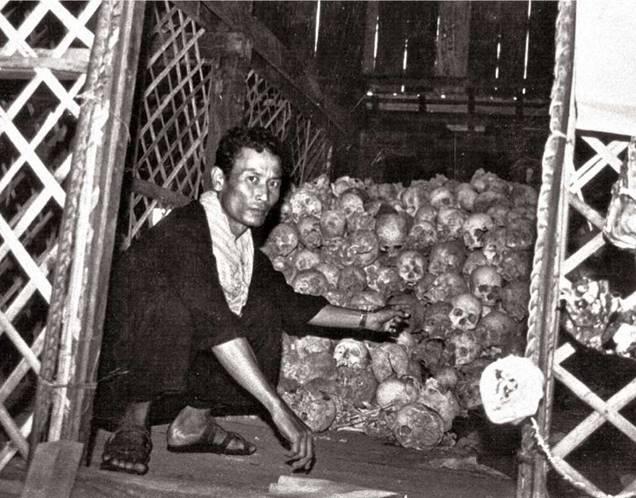
Chapter 14: Cases of the Eccc
Disclaimer
This chapter is based upon rulings and judgments at the ECCC. The determination of the guilt or innocence of any Accused named herein, as reflected in a Trial Chamber Judgement and, if appropriate, confirmed or amended by the Supreme Court Chamber, are the sole legally binding accounts of the events relayed in this chapter. Readers are encouraged to refer to the relevant decisions and judgements of the Pre-Trial Chamber, Trial Chamber, and Supreme Court Chamber for the official, legally binding accounts of Cases 001, 002, 003, and 004.
converte nto a pr son center. ousan s o peop e were su jectto t e most n umane con t ons, starvat on, and sadistic torture. Thousands of prisoners died or were executed. In 1999, Duch was arrested by Cambodian authorities and he was held in military detention until 2007 when he was placed in provisional detention by an order of the Co-Investigating Judges. In August 2008, Duch was indicted and the substantive part of his trial began in March 2009. During the course of his trial, the court heard the testimony of nine expert witnesses, seventeen fact witnesses, seven character witnesses, and twenty-two Civil Parties. In addition, approximately 1,000 documents were admitted by the court. Unlike other Accused persons, Duch became a very cooperative witness who provided considerable evidence both against himself as well as senior leaders of the Khmer Rouge.
In July 2010, Duch was found guilty by the Trial Chamber for crimes against humanity and grave breaches of the 1949 Geneva Conventions. The Trial Chamber sentenced him to 35 years imprisonment, but his sentence was reduced by five years for his illegal detention by the Cambodian Military Court and he received credit for the time he had already spent in detention by the Cambodian Military Court and the ECCC.
In 2012, on appeal by the Co-Prosecutors, the Supreme Court Chamber overturned several parts of the decision by the Trial Chamber particularly as it relates to his sentence. The Supreme Court Chamber sentenced Duch to life imprisonment, stating that the Trial Chamber had committed legal error by not giving adequate weight to the gravity of Duch’s crimes and the aggravating circumstances in the case, and attaching too much weight to the mitigating circumstances.
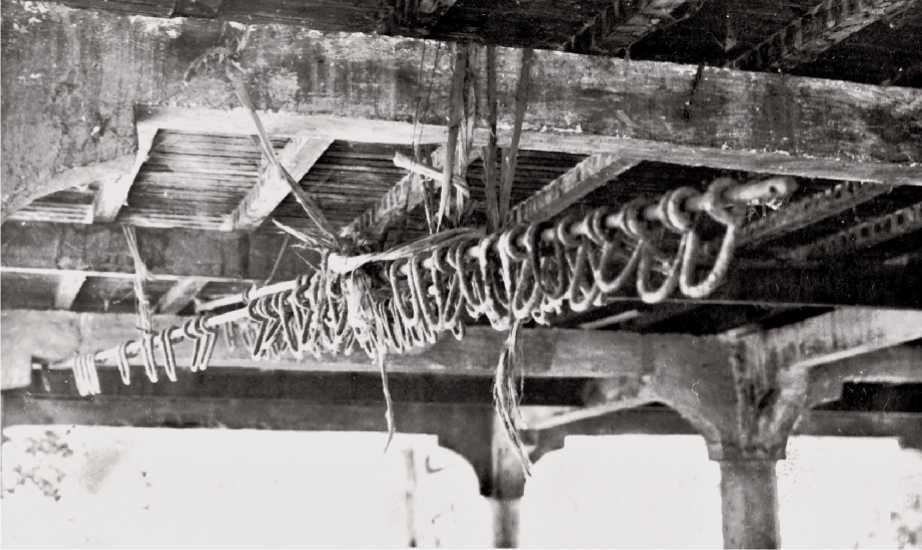
As the Supreme Court Chamber stated:
The crimes committed by Kaing Guek Eav were undoubtedly among the worst in recorded human history. They deserve the highest penalty available to provide a fair and adequate response to the outrage these crimes invoked in victims, their families and relatives, the Cambodian people, and all human beings. The Co-Prosecutors did not exaggerate when they referred to S-21 as the “factory of death.” Kaing Guek Eav commanded and operated this factory of death for more than three years. He is responsible for the merciless termination of at least 12,272 individuals, including women and children.
In the end, Duch was found guilty and sentenced to life imprisonment for the following crimes:
Crimes against humanity
Persecution on political grounds Extermination (encompassing murder) Enslavement Imprisonment
Torture And other inhumane acts
Grave breaches of the Geneva Conventions of 1949 Willful killing
Torture and inhumane treatment
Wilfully causing great suffering or serious injury to body or health Wilfully depriving a prisoner of war or civilian of the rights of a fair and regular trial Unlawful confinement of a civilian.
A total of 64 Civil Parties were admitted by the Trial Chamber in Case 001, and on appeal the Supreme Court granted the application of 10 additional Civil Party applicants that were rejected by the Trial Chamber. The Trial Chamber awarded the following reparations: (1) Inclusion of the names of admitted Civil Parties and their deceased family members in the judgment and (2) the compilation and publication of all statements of apology and acknowledgement of responsibility by Duch. The award was affirmed by the Supreme Court Chamber.
2. Case 002
On September 15, 2010, the Co-Investigating Judges indicted Ieng Sary, Nuon Chea, Khieu Samphan, and Ieng Thirith for crimes against humanity, genocide, grave breaches of the Geneva Conventions. In June 2011, the Trial Chamber commenced its first hearings of Case 002. In part due to the complexity of the case and the age of the accused, the ECCC decided to sever Case 002 into at least two different trials, Case 002/01 and 02. Case 002/01 began on November 2011. Case 002/01 primarily focused on the crimes against humanity related to the forced transfer of people from Phnom Penh and other regions, as well as the massacre of Khmer Republic soldiers at Tuol Po Chrey.
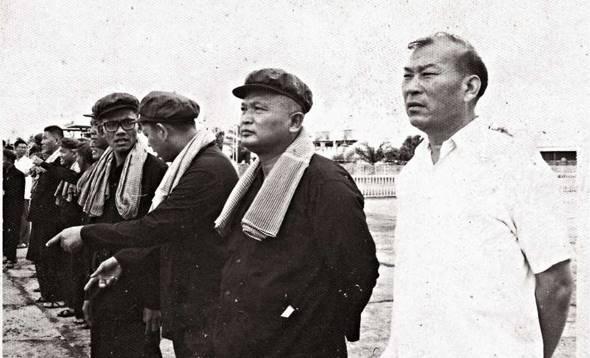
Second from right: Nuon Chea, President of People’s Representative Assembly and Deputy Secretary of Communist Party of Kampuchea Third from right: Ieng Sary, Deputy Prime Minister and Minister of Foreign Affairs Fourth from right: Son Sen, Deputy Prime Minister and Minister of National Defense Furthest person in the line: Vorn Veth, Deputy Prime Minister and Minister of Economy (circa. 1975-1978). (Documentation Center of Cambodia Archives)
Case 002/01
In November 2011, the Trial Chamber determined that Ieng Thirith was unfit to stand trial due to a progressive, degenerative illness. As a result, the court decided to separate and stay the case against her. The international and Cambodian Trial Chamberjudges could not come to an agreement on her continued detention and conditions for release, so to avoid confusion, the Trial Chamber unanimously agreed to release her in September 2012. The court emphasized, however, “that a finding of unfitness to stand trial is not a finding of guilt or innocence of the Accused.” [28] The Supreme Court subsequently required judicial supervision of her during her release. On August 22, 2015, Ieng Thirith died from natural causes.
On March 14, 2013, Ieng Sary died from natural causes during the trial. In accordance with the Cambodian Code of Criminal Procedure, the prosecution of Ieng Sary was terminated. In addition, in accordance with the ECCC’s Internal Rules, his death also extinguished any civil action.[29]
On August 7, 2014, the Trial Chamber found Nuon Chea and Khieu Samphan guilty of crimes against humanity in Case 002/01, and they sentenced them to life imprisonment. The Supreme Court Chamber quashed part of his convictions, but they affirmed their life imprisonment. In Case 002/01, Nuon Chea and Khieu Samphan were found guilty of: Crimes against humanity of extermination (encompassing murder), persecution on political grounds and other inhumane acts (comprising forced transfer, enforced disappearances, and attacks against human dignity).
A total of 3,869 Civil Parties were admitted in Case 002/01. Having heard expert evidence, the Trial Chamber was satisfied that the suffering inflicted on the Civil Parties as a result of the crimes committed by the Accused contributed to symptoms of long-term psychological damage as reported by many of them. Because of the crimes committed by the Accused, the Chamber awarded collective and moral reparations to the Civil Parties. Collective and moral reparations are measures that(a)acknowledge the harm suffered by Civil Parties as a result of the commission of the crimes for which an Accused is convicted and (b) provide benefits to the Civil Parties which address this harm. Overall, thirteen reparations projects were submitted by the Lead Co-Lawyers for the Civil Parties to the Trial Chamber for review. In the Trial Chamber’s judgement, the court conferred judicial recognition to 11 of these projects. Two projects were not recognized by the court because they had not met the condition of securing sufficient external funding prior to the Trial Chamber’s Judgement.
The Supreme Court Chamber reversed the defendants’ convictions by the Trial Chamber for the crime against humanity of extermination in relation to the evacuation of Phnom Penh and the second phase of population transfers. In addition, they reversed the conviction for crime against humanity of persecution on political grounds, finding that there was not sufficient evidence to prove beyond a reasonable doubt that the defendants committed large scale killing with direct intent. The Supreme Court Chamber considered whether the life sentences should be reduced based on the Trial Chamber’s errors. In reviewing these circumstances, the Supreme Court Chamber considered the gravity and massive scale of the crimes, as well as the complete lack of consideration for the ultimate fate of the Cambodian population, especially the most vulnerable groups. The Chamber also considered the significant roles of the Accused and the fact that the crimes were not isolated events but occurred over an extended period of time. For these reasons, the Supreme Court Chamber concluded that the imposition of life sentence for each of the Accused was appropriate.[30]
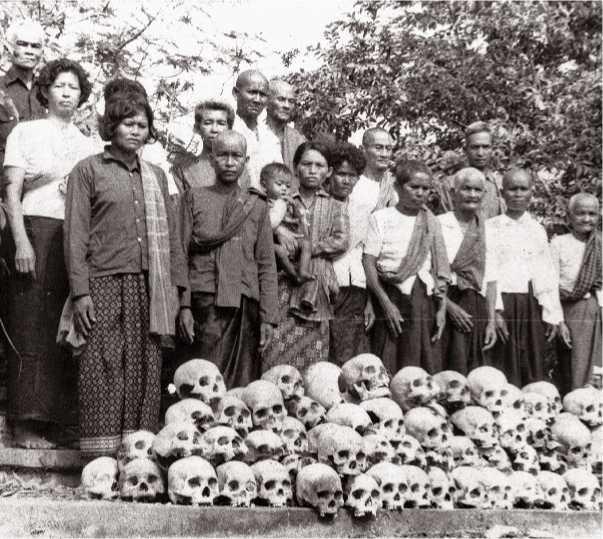
Case 002/02
In October 2014, the Trial Chamber commenced its first substantive hearings of Case 002/02. Case 002/02 focused on the crimes against humanity, grave breaches of the Geneva Conventions of 1949 and genocide that was alleged to have been committed at a number of cooperatives, worksites, security centres and execution sites as it relates to the targeting of specific groups of people, namelythe Cham, Vietnamese, Buddhists, and former Khmer Republic officials. The Trial Chamber also considered the Khmer Rouge policies of regulating marriage. The court heard the testimony of 185 individuals, including witnesses, 63 Civil Parties, and 8 experts, and close to 5,000 evidentiary documents were admitted for the Trial Chamber’s consideration.
[[d-c-documentation-center-of-cambodia-a-history-of-84.jpg][A screenshot of the first page of a petition, which was filed, supporting the People’s Tribunal to try hmer Rouge leaders, during the People’s Republic of Kampuchea on “the crimes jointly committed tween invasive Beijing Government and the government of Pol Pot, Ieng Sary and Khieu Samphan on the residents of Ampil Tik village during 1975 to 1978.” The document basically described how the aforementioned parties, i.e. the KR and “the Beijing Government,” mistreated villagers of Ampil Tik village, 1983. (Documentation Center of Cambodia Archives)
Nuon Chea was alleged to have served as Deputy Secretary of the Communist Party of Kampuchea (CPK), and he was a full member of the CPK Central and Standing Committees and Chairman of the People’s Representative Assembly. He was also alleged to have, on occasion, served as Acting Prime Minister of the Democratic Kampuchea government. Khieu Samphan was alleged to have served various positions in the CPK and Democratic Kampuchea government, including President of the State Presidium and Chairman of the Political Office 870. He was also alleged to have served as a member of the CPK Standing Committee.
Nuon Chea and Khieu Samphan were found to have committed several crimes against humanity, grave breaches, and genocide by participating in a joint criminal enterprise with other senior leaders. The common purpose of this joint criminal enterprise was to implement rapid socialist revolution in Cambodia through a “great leap forward” and to defend the Party against enemies by whatever means necessary. As part of this joint criminal enterprise, the Accused supported and promoted the development of policies related to the genocide of ethnic Vietnamese; various grave breaches of the
Geneva Conventions; and the crimes against humanity of murder; extermination; enslavement; deportation; imprisonment; torture; persecution on political, religious, and racial grounds; and other inhumane attacks against human dignity. The Accused also participated in developing policies that led to enforced disappearances, forced transfer of people, forced marriage and rape within the context of forced marriage.
As Pol Pot’s “loyal right-hand man,” Nuon Chea was found to have specifically helped design, implement, and disseminate the common purpose of the criminal enterprise. He was found to have participated in purges and in the running of the S-21 Security Centre. Though Khieu Samphan had less power, he was found to have at least contributed to, and publicly supported, the criminal enterprise as a senior leader. Through his many public speeches and statements, Khieu Samphan encouraged and incited the execution of CPK’s policies, and, though he was never formally a member of the CPK Standing Committee, he regularly participated in the Standing Committee meetings at which matters related to the joint criminal enterprise were discussed.
Cooperatives, Worksites, and Execution Sites: The Trial Chamber considered the crimes that were committed at specific crime sites throughout the country, namely, Tram Kak Cooperatives, Trapeang Thma Dam Worksite, 1st January Dam Worksite, Kampong Chhnang Airfield Construction Site, S-21, Kraing Ta Chan, Au Kanseng, and Phnom Kraol Security Centres. Both of the Accused were convicted of aiding and abetting the crime against humanity of murder at these worksites, cooperatives, and security centres for deaths resulting from living conditions at these crime sites, including lack of food, water, and medical care as well as the imposition of hard labour.
Targeting of Specific Groups of People: The Trial Chamber found that during the Democratic Kampuchea period, there was a policy to target specific groups of people for the purpose of establishing an atheistic and homogenous society without class division. The court found that the Khmer Rouge targeted the Cham, Vietnamese, Buddhist, and former Khmer Republic officials and their families. Both Nuon Chea and Khieu Samphan were convicted of the crime of genocide against the Vietnamese. Though the Trial Chamber could not identify or infer whether Nuon Chea had the intent to commit genocide on the Cham people, the Chamber nevertheless found that because of Nuon Chea’s superior responsibility, “at the very least [he] had reason to know that genocide had been, or was about to be, committed against the Cham.” Thus, Nuon Chea was also convicted of the crime of genocide against the Cham ethnic and religious group.
Regulation of Marriage: The Chamber found that there was a nationwide policy to regulate marriage and families. The CPK designed this policyto replace the role of parents and increase the country’s population through forced marriage and forced reproduction. Individuals were forced to marry in a climate of fear, and arrangements were made by local authorities to compel sexual intercourse between couples against their will. Couples who did not have sexual intercourse were “re-educated” or they were threatened with punishment or killed.
Trial Chamber Sentence: The Chamber found that 3,865 Civil Parties as well as a large number of additional victims suffered immeasurable harm as a consequence of the crimes committed by Nuon Chea and Khieu Samphan. For their crimes, the Trial Chamber sentenced both Accused to life imprisonment. The Accused were convicted of crimes against humanity in relation to the forced movements of the population and they were sentenced to life imprisonment for these crimes. The Trial Chamber merged the sentences in Case 002/01 with the sentences in Case 002/02 to form a single life sentence for both Nuon Chea and Khieu Samphan.
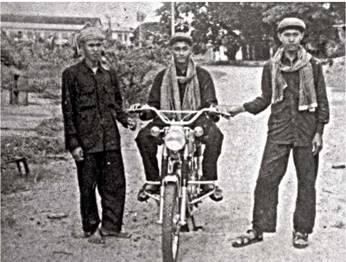
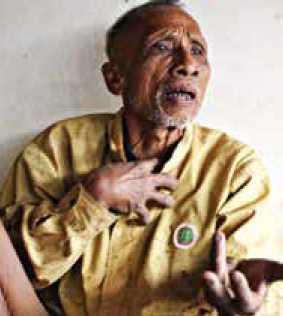
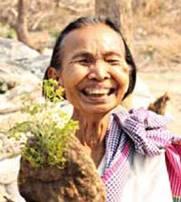
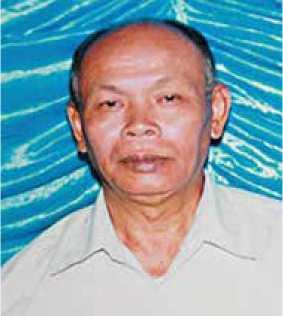
(Vanthann Peou Dara/ Documentation Center of Cambodia Archives)
On August 4, 2019, Nuon Chea died of natural causes amidst his appeal of the Trial Chamber’s Judgement in Case 002/02. The ECCC Supreme Court Chamber has yet to definitely rule on any appeals of either the late Nuon Chea or Khieu Samphan for Case 002/02.
3. Cases 003 and 004
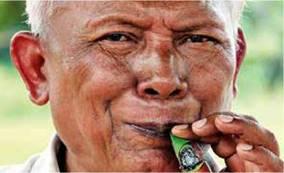
(Documentation Center of Cambodia Archives)
Cases 003 and 004 were created in September 2009 whenthe International Co-Prosecutorfiled submissions requesting the Co-Investigating Judges to conduct judicial investigations into allegations of crimes relating to five suspects. Meas Muth and Sou Met were the named suspects in Case 003, and Ao An, Im Chaem, and Yim Tith were the named suspects in Case 004.
Case 003
Case 003 involved the Accused, Sou Met and Meas uth. In June 2015, the judicial investigation against Sou Met was terminated because of his death; however, the judicial investigation against Meas Muth continued. In December 2015, the International Co-Investigating Judge charged Meas Muth with the following alleged crimes: Genocide; crimes against humanity, namely murder; extermination; enslavement; imprisonment; torture; persecution; other inhumane acts (inhumane treatment, enforced disappearances, forced labour, forced marriage, rape and attacks on human dignity due to conditions of detention); grave breaches of the Geneva Conventions of 1949, namely willful killing; willfully causing great suffering or serious injury to body or health, torture, and unlawful confinement of civilians; and Violations of the 1956 Cambodian Penal Code, namely premeditated homicide. These crimes were alleged to have been committed at various security centres, among them S-21 Security Centre, Wat Enta Nhien Security Centre; Stung Hav worksite; Ream area co-operative including worksites at Kang Keng and Bet Trang, the Durian Plantation execution site, the Toek Sap Security Centre, Kampong Som. Additionally, these crimes were alleged to have been committed against the following Divisions 164, 502, 117 and 310. Meas Muth is also charged with crimes committed by the Navy of Democratic Kampuchea in and around the islands claimed by Democratic Kampuchea.
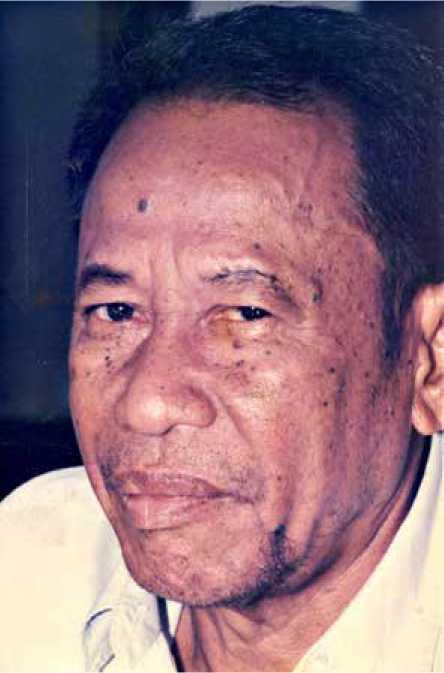
(Heng Sinith/Documentation Center of Cambodia Archives)
The International Co-Prosecutor’s Final Submission argued that the evidence demonstrates that the Meas Muth should be within the personal jurisdiction of the ECCC because he was both a “senior leader” of the Democratic Kampuchea and one of the persons “most responsible” for the crimes committed between 17 April 1975 and 6 January 1979. The National Co-Prosecutor disagreed with the position of the International Co-Prosecutor. Specifically, the National Co-Prosecutor argued that Meas Muth is not subject to the personal jurisdiction of the ECCC. In addition, the National Co-Prosecutor argued that bringing Meas Muth to trial would not serve the interests of justice. Should he be indicted, the National Co-Prosecutor believed that there would be domestic political disruption and serious potential social unrest. With different closing orders, the matter would be subject to appeal to the Pre-Trial Chamber.
Case 004
Case 004 involves the Accused, Yim Tith, Im Chaem, and Ao An. In December 2015, the International CoInvestigating Judge charged Yim Tith with the following alleged crimes: Genocide of the Khmer Krom; crimes against humanity, namely murder; extermination; enslavement; deportation; imprisonment; torture; persecution against the so-called “17 April people,” “East Zone Evacuees,” Northwest Zone cadres, their families and subordinates, as well as the Khmer Krom and Vietnamese; and other inhumane acts including forced marriage; grave breaches of the Geneva Conventions of 1949 committed as part of an international armed conflict between Democratic Kampuchea and the Socialist Republic of Vietnam, namely willful killing and the unlawful deportation or transfer of civilians; and violations of the 1956 Cambodian Penal Code, namely premeditated homicide. The alleged crimes were committed in a variety of locations in the Southwest and Northwest Zones.
Im Chaem was charged with the following alleged crimes: Crimes against humanity, namely murder, extermination, enslavement, imprisonment, torture, persecution, and other inhumane acts (enforced disappearance, rape,
Northwest Zones.
Ao An (alias, Ta An) was charged with the following alleged crimes: Genocide of the Cham; crimes against Humanity, namely murder; extermination; enslavement; imprisonment; torture; persecution against the so-called “17 April people,” former Lon Nol soldiers, Central (Old North) Zone cadres, their families and subordinates, people from the East Zone, and other “bad elements” and “internal enemies”; persecution against Cham and Vietnamese people; and other inhumane acts including forced marriage, rape, enforced disappearances, physical abuse, forced labour, and inhumane conditions of detention. In addition, Ao An was charged with violations of the 1956 Cambodian Penal Code, namely premeditated homicide.
Case 004 was severed into three case files pertaining to each of the Accused.
Case 004/01
In February 2016, Case file 004/01 was created for Im Chaem, and in February 2017, the Co-Investigating Judges dismissed the case against Im Chaem, to which the International Co-Prosecutor appealed. In considering the International Co-Prosecutor’s appeal, the Pre-Trial Chamber could not reach a super-majority on the merits of the appeal, with the Cambodian National Judges, Prak, Ney, and Huot agreeing with the dismissal and the International Judges Baik and Beauvallet disagreeing and holding that Im Chaem should be deemed subject to thejurisdiction of the ECCC. The Pre-Trial Chamber ultimately dismissed Case 004/01 against Im Chaem on the basis that they lacked jurisdiction.
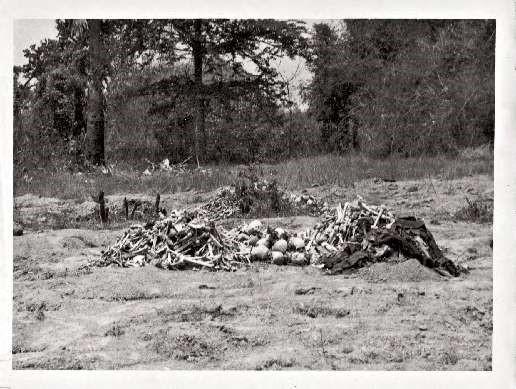
(Mai Lam/ Documentation Center of Cambodia Archives)
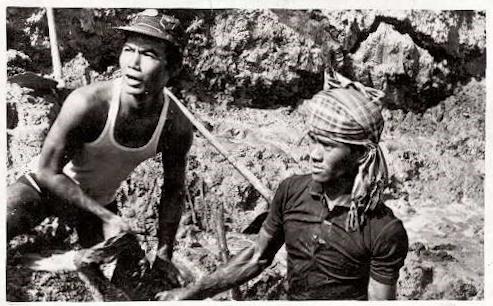
(Mai Lam/ Documentation Center of Cambodia Archives)
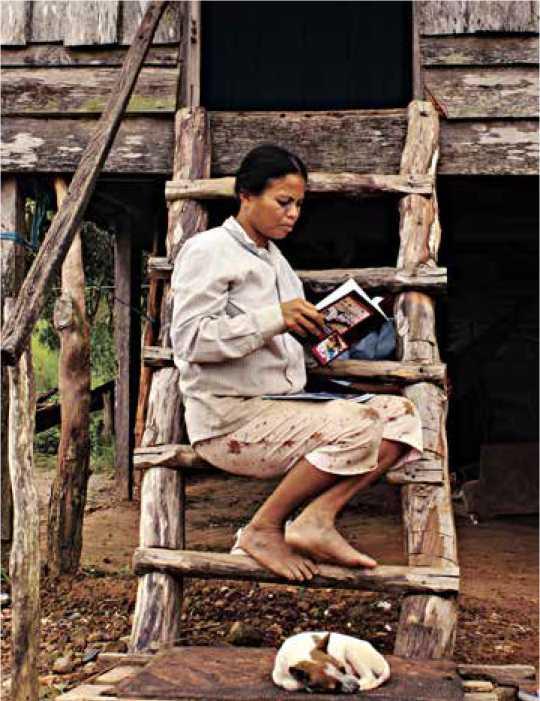
Case 004/02
In December 2016, Case file 004/02 was created for proceedings against Ao An. In August 2018, the Co-Investigating Judges issued two separate closing orders in the case against Ao An. The National CoInvestigating Judge determined that Ao An does not fall under the ECCC’s personal jurisdiction and dismisses the case for that reason. The International Co-Investigating Judge determined that Ao An does fall under the ECCC’s personal jurisdiction because he found him to be one of the persons most responsible for crimes committed during the Democratic Kampuchea period based on his position in the Democratic Kampuchea hierarchy and the gravity of his crimes. Accordingly, the International Co-Investigating Judge issued an indictment. As of November 2018, the separate rulings of the Co-Inves- tigating Judges have been appealed to the Pre-Trial Chamber of the ECCC, which was still conducting hearings on the matters.
Case 004/03
In June 2017, the Co-Investigating Judges concluded their eight-year judicial investigation against Yim Tith, and in late May and early June 2018, the National and International Co-Prosecutors filed their respective Final Submissions in Case 004 as it relates to the investigation of Yim Tith. The National Co-Prosecutor argued that Yim Tith was neither a senior leader or a person most responsible for crimes committed during the Democratic Kampuchea period, and therefore he is outside the jurisdiction of the ECCC. The International Co-Prosecutor argued the opposite. In June 2019, the National and International Co-Investigating Judges issued two separate opinions. The Cambodian Co-Investigating Judge determined that Yim Tith was not subject to the jurisdiction of the ECCC, and the International Co-Investigating Judge disagreed, finding that Yim Tith was subject to ECCC jurisdiction. With different closing orders, the matter would be subject to appeal to the Pre-Trial Chamber. Despite the fact that both Co-Investigating Judges disagreed on the future steps for Case 004, they nevertheless both signed an order terminating the remainder of the investigation in the case.
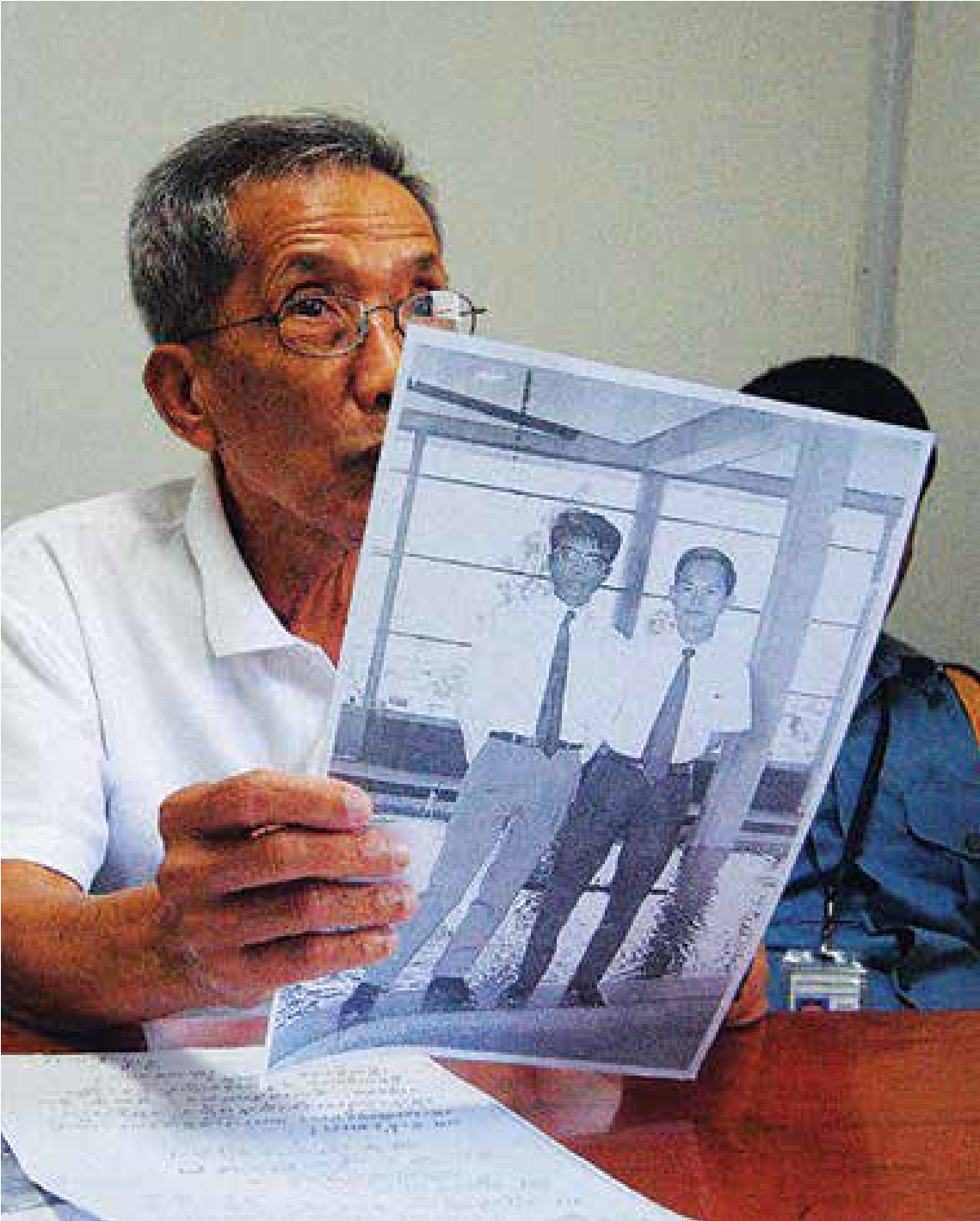
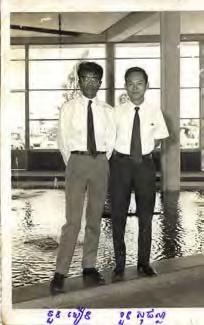
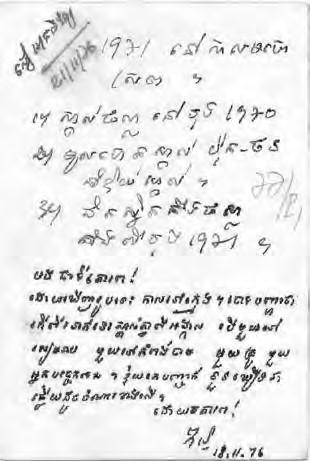
(Eng Kok-Thay/Documentation Center of Cambodia Archives)
Note: On the back of the photo contained Duch’s handwriting reporting to his superior about the confession of Nuon Khoeun.
Chapter 15: Apologies by Kaing Guek Eav, Alias “Duch”
Introduction
Unlike other persons accused of crimes before the ECCC, Duch publicly recognized his responsibility for many of the crimes he committed during the Khmer Rouge regime. On a number of occasions, Duch also asked for an opportunity to personally apologize to victims or their families. Many people have debated the rationale for Duch’s confessions and apologies. Some people believe that Duch’s apologies are tied to his conversion to Christianity. Other people believe that he is taking advantage of the Buddhist obligation to forgive people who ask for forgiveness. There is also the belief that Duch’s apologies and confessions were merely an attempt to obtain leniency in his sentence or relief in his confinement.
1. Apology 1
First of all, I would like to clarify some of the historical events in Cambodia which the Co-Prosecutor has described. I would like to emphasize that the Cambodian people have endured killings for years, going back to 1966, when General Lon Nol was killing peasants in Samlout. Later on, after the 18 March coup d’etat, all political parties competed in the race to kill Cambodian people. After 17 April 1975, such crimes fell exclusively under the Communist Party of Kampuchea. These are the historical aspects that I would like to submit to the Court in connection with what was raised by the Co-Prosecutor this morning.
Next, I would like to present my own position. From 17 April 1975 to 6 January 1979, the Communist Party of Kampuchea was exclusively responsible for the crimes in Cambodia. The 1976 Party Statute is the main evidence. The first page of the Statute states amongst other things that “After having led the people’s national democratic revolution to the total and decisive victory of 17 April 1975, the Party continues now to have an absolute monopoly of leadership in all domains of the socialist revolution and in the building of socialism.” This is the evidence that I would like to present to the nation and people through the Trial Chamber of the ECCC.
Firstly, I would like to offer some views on the nationwide crimes from 17 April 1975 to 6 January 1979. After 17 April 1975, Pol Pot became more ambitious and he established the line that later had such an impact on people’s lives. Pol Pot had everything, most importantly he had tens of thousands of party members in his hands. The crimes committed in that period were staggering. More than one million people lost their lives, and as a member of the Communist Party of Kampuchea I accept that I bear moral responsibility for the crimes committed bythe regime ofthe Communist Party of Kampuchea. I would like to express my regret and my deepest sorrow for all the crimes committed by the Communist Party of Kampuchea from 17 April 1975 to 6 January 1979.
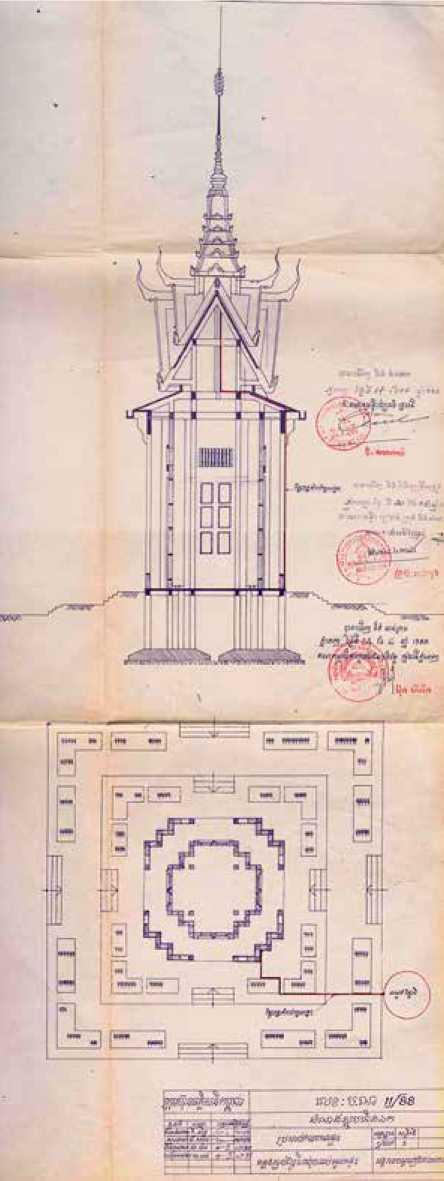
(Documentation Center of Cambodia Archives)
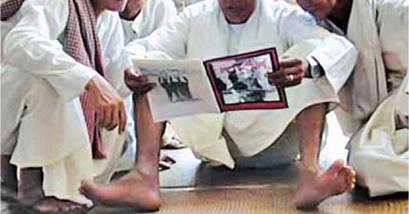
(Eng Kok-Thay/Documentation Center of Cambodia Archives)
Secondly, and more specifically, I would like to clarify the crimes at S-21. I acknowledge my legal responsibility. I would like to make it clear that I am legally responsible for the crimes committed at S-21, especially the acts of torture and executions. As I have already said, when the Co-Investigating Judges took me forthe re-enactments at Choeung Ek and the Tuol Sleng Genocide Museum, I sought permission to express my apology to the victims who survived and to the families of those whose loved ones died miserably in great pains and sufferings at S-21. Now, I would like these people to know that I wish to apologize, and I would like you to consider my intentions. I do not ask that you forgive me here and now. I know that the crimes I committed against the lives of those people, including women and children, are intolerably and unforgivably serious crimes. My plea is that you leave the door open for me to seek forgiveness.
Thirdly, whenever I recall the past, I am deeply pained and I am racked with remorse. I am appalled whenever I recall the activities which I was ordered to carry out, and the orders I gave to others that affected the lives of many innocent people, including women and children. Through I acted out of respect for Angkar’s orders, I am still responsible for the crimes. I have already told the Co-Investigating Judges that I was a hostage, a mere puppet in the criminal regime. I am sure that the general public now regards me as a cowardly and inhumane person. I sincerely and respectfully accept all these arguments. During the S-21 era, I valued my life and the lives of my family as more important than the lives of those who were detained at S-21. During that period I never dared even to think about disputing or opposing the orders from the top, despite knowing that they were criminal. It was a matter of life and death for me and my family. As the director of S-21, I did not dare to seek any alternatives to obeying the orders from the upper echelon, despite knowing that carrying them out would lead to the loss of thousands of lives. At present, I have the deepest sorrow and regret, and I feel ashamed and uneasy. As a perpetrator, I know that I am personally guilty before the entire Cambodian people and nation, before the families of all the victims who lost their lives at S-21 and before my own family, some of who also lost their lives.[31]
2. Apology 2
The corpses of people who were smashed at M-13 were buried not far away from the security centre, maybe just a hundred meters at most. There were three sites: at Thma Kup, near Anlong Veng; the second at Ta Leav, where very few people were executed; and the third at Trapeang Traob, between the river and Trapeang Chrap. The remaining evidence can prove the time of death and exact number of victims. This underscores the truth of my confession to the nation and the people. The other corpses in other locations were those of Khmer people who died at the hands of the CPK [Communist Party of Kampuchea]. And once again, without shirking the truth, I want to say that I am sorry and apologize for those crimes. I feel pangs of remorse, and I would like to offer my condolences to the families and friends of those who died.[32]
3. Apology 3
With respect to the implementation of the policy throughout the country as well as at the S-21 security centre, at S-21 crimes against humanity were perpetrated against at least 12,380 people. And throughout the country, although I do not have a precise figure for the people who suffered as a consequence of the bad policy line, I believe the number was more than one million. So I was partly to blame because I had my role to play; it was not just my superiors. Also as a member of the Party I had a role. I acknowledge the mistakes that I made because of the implementation of the Party’s policy at S-21, which was a profoundly criminal policy. As I said earlier this morning, the policy was worse than that of the Gang of Four in China, and it led to the deaths of more than ten thousand people at S-21. I can never forget this. I confess to the Court, the nation and the people of Cambodia for them to understand the nature of this episode. And I will always suffer this remorse for having enforced the bad Party line.[33]
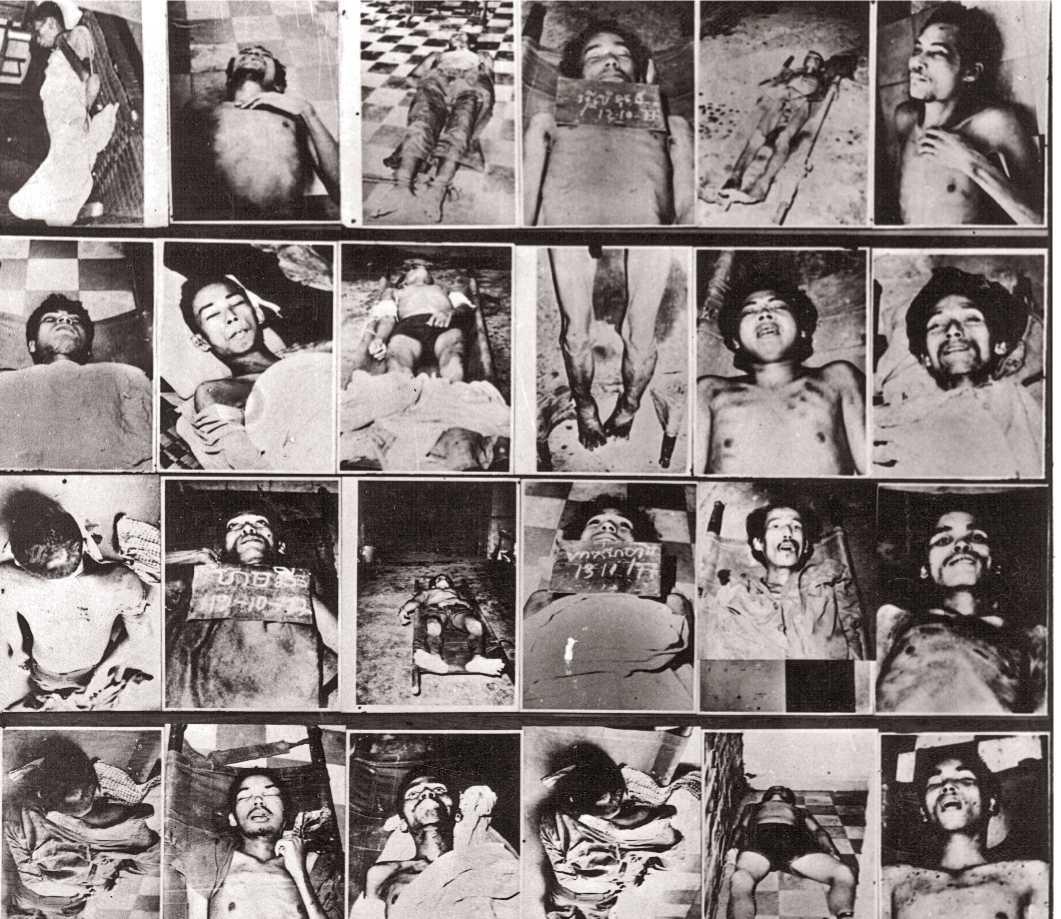
(Documentation Center of Cambodia Archives)
Chapter 16: Impact of Mass Atrocities, Genocide, and Human Rights Violations on Individual People
Introduction
The Khmer Rouge regime perpetrated indescribable horror that continues to impact survivors as well as the generations born after. Whereas historians’ descriptions of imprisonment, torture, starvation, and mass atrocities are important to understanding how society suffered under the Khmer Rouge, students must also learn from the stories of individuals. Individual stories give students an opportunity to understand history as it is experienced, whether it is through the eyes of a survivor or the family member of a victim. The stories presented below are summarized excerpts of testimony given by persons who appeared before the ECCC. Some stories reflect the observations and perspectives of Khmer Rouge cadre, whereas other stories come from actual victims or the family members of victims who died. Each story should be read independently of the other stories. The reader is encouraged to reflect on each person’s story and identify how it fits within the broader history of this time period. The reader is also reminded that the determination of the guilt or innocence of any Accused named herein, as reflected in a Trial Chamber Judgement and, if appropriate, confirmed or amended by the Supreme Court Chamber, are the sole legally binding accounts of the events relayed in this chapter. Readers are encouraged to refer to the relevant decisions and judgements of the Pre-Trial Chamber, Trial Chamber, and Supreme Court Chamber for the official, legally binding account of the events relayed in this chapter. Because these excerpts reflect summaries of testimony, readers are also encouraged to refer to the relevant court transcripts for a complete and verbatim account of each testimony.
1. Case 001
Antonya Tioulong: Civil Party
I speak on behalf of my family and on behalf of the two daughters of my sister, Raingsy, who was killed. Their names are Visaka and Nevinka. I hope that I can carry my sister’s voice, who is no longer here to express herself in order to defend her and to be her advocate. I want to tell you who she really was and how much her family misses her. We were seven sisters. My father, Samdech Chakrey Nheuk Tioulong, dedicated his entire life to the state. He was a high-ranking official in the Prince Sihanouk administration, and then he became ambassador, minister, prime minister, and head of the royal army, with faultless loyalty to the king father. Raingsy was the second child and she was married to her husband, Lim Kimari, at a very young age. They had three children together: Visaka, Nevinka and a boy, Metta. My sister was a representative for a German company called Merck. She was also an anchorwoman on French radio. My brother-in-law, Lim Kamari, worked for the Commercial Bank. In March 1970, Lon Nol’s republic decreed that the Tioulong family would no longer be allowed to come into Cambodia because of my father’s ties with King Sihanouk. Raingsy and my brother-in-law stayed in Cambodia, and in 1973 as the civil war became more intense, she sent her children to live with our grandparents in Paris for security reasons. In 1974, we asked Raingsy to join us in France because of the worsening civil war, but she said that she had her profession in Phnom Penh, and in France she would have no status. The last time we saw each other was in the summer of 1974. In April 1975, we learned in Paris that the Khmer Rouge have taken Phnom Penh. Between 1975 and 1979, it was a long period of waiting. We did not know where my sister and brother-in-law were. We were hoping. We told their children, “Don’t worry. When you will be 16 we will be reunited again and we will recreate the family.” My niece, Nevinka, who was trustful, was waiting for her 16th birthday, saying to herself that she would see her mummy again. One of our cousins went to Tuol Sleng and she found my sister’s original confession and a photo of her. She said that my sister had undergone particularly harsh torture, which they did not want to say
my sister and her husband are still present. We speak about them in the present tense. We speak about her frequently because we want her to still be a part of our family life. Her granddaughter is the room today, but she never knew her. According to the Tuol Sleng records, she died on the 31st of April 1976.[34]
Prak Khan
The S-21 Office I first came in was located at Tuol Sleng location and I was put to guard outside the compound. I was on guard somewhere near the sewage canal and the current radio station on Street 360.[35] Him Huy was my boss.[36] At S-21 I saw Dek Bou arrest children and there were Vietnamese prisoners. There were husbands, wives, and children, and one young baby who was about seven to eight months old. Dek Bou took the baby from the wife, from the mother, and he dropped the baby from the upper floor to the ground, and later on I was ordered to bury that dead baby.[37] Regarding the techniques of torture, we were taught how to torture the prisoners and to [prevent] the prisoners from [dying]. Otherwise, the confessions would be broken and we would be punished. We were trained on how to whip the prisoners with the stick, how to electrocute, and how to use the plastic bag to suffocate them.[38]
Hav Sophea: Civil Party
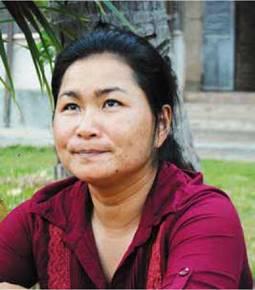
(Kry Suyheang/Documentation Center of Cambodia Archives)
My father was a soldier in the Unit K-92. In 1975, his unit transferred him from Kampong Thom to Phnom Penh. He was stationed at the Boeng Trabek base in Phnom Penh until January 15, 1976, which was the day he was arrested. At the time of his arrest, I was not born yet. According to my mother, he told her that if he was arrested, she should strive to leave and survive. He also told her to marry another man. I was born 21 days after his arrest. My mother never knew the reason for his arrest. From the day he was arrested, my mother waited for him. When I was nine months old, Angkar told my mother that my fatherwas smashed, but my motherwas still waiting forthe news of my father for many years thereafter. Although she knew that my father could have been killed, she still carried a hope that one day we would be reunited. We later came to learn that he was executed at S-21. When my mother learned that he died at S-21, she burst into tears and was deeply depressed. We had not confirmed that he died at S-21 until 2006 when the Documentation Center of Cambodia (DC-Cam) provided us with his confession at S-21. My mother never married and she never wanted to marry again since my father. Since my father was arrested, our family has suffered financially, physical, and emotionally. Because my father never returned, we did not have enough money to support my education so I stopped school at grade 7. It was my dream to become a Khmer literature teacher, but it was just a dream and I never returned to school because of financial difficulties. I have dreamed of my father even though I never saw him. My mother and I have only one picture of him. We only have one picture of him because the Khmer Rouge told my mother she had to burn all documents and photos of my father or else she would be killed.[39]
Chuun Phal
I was assigned as a guard of prisoners at S-21, which was also called Tuol Sleng. I stood guard inside building number 2, which was the east-west building. It had three floors. I was sometimes assigned to guard the upper floor, or sometimes the ground floor. During my shifts, I had never seen any detainee die. I did see prisonerwho were very thin because they were not given sufficient food. The food ration was in the form of gruel. I was not in charge of providing food to them of course; there were people who were assigned to distribute these meals to them. I was only in charge of checking and patrolling the location. The prisoner in the rooms, whether in a common room or individual cells, so far as I remember for the male prisoners, they were shackled together in one line. For example, a long metal barwould be attached to seven prisoner in a group. Prisonerwere not allowed to stand unless they asked permission to do so from the guards. Prisoner did not wear proper clothes like we did. They were given ragged clothes and some had some long pants; some only had shorts; and some only had torn clothes. I did observe prisoners who had been taken for interrogation. Some were beaten and some were not beaten. I saw the beating marks and wounds. Some prisoners did not have these marks or wounds upon their return. I think it was up to Angkar or the upper echelon to either torture or not torture those prisoners.[40]
2. Case 002
Witness TCCP-223[41]
Today I will tell you in detail about what happened in 1977. To my knowledge, when they purged people, they purged people in the North Zone first. And after they had purged people there, they came to purge people in the Northwest Zone.
They started to purge cadres at the lower level, and they put in place cadres from the Southwest Zone. They put people from the Southwest Zone to get themselves familiar with the works of the cadres in Battambang province.
And during the purging period, they used the terms “send those people to study,” but those people who were sent to study disappeared and they [never] returned. This happened to the upper echelons responsible for the zone, and the purge continued subsequently.[42]
Witness TCCP-1063
In 17 April 1975, I was evacuated from Svay Rieng. At the time, the Khmer Rouge troops entered Svay Rieng, they [chased and] forced people to go out of Svay Rieng. They shouted at us, [brothers, sisters, mothers, fathers, to] go out of the town; otherwise, you are all shot to death. After I had left my birthplace and reached a main road, I saw an old man who could not walk. That old man could hardly walk and they shouted at him, “Why you do like that? Why [do] you walk like that? You will be shot to death.” [Shortly after this threat, that old man was shot to death and fell to the ground in front of me.] I was so scared at the time. I was so frightened [so I continued my journey forwards.]
All people, including me, were in the same situation. They were being evacuated. [We did not bring much] belongings with us, but only some clothes and some rice, since we were forced to leave. We were told that we would leave only for two or three days, then we would be allowed to return home. [We] were told that we did not need to bring with us our belongings. We were so scared and we had to leave. Then we arrived at Ta Chey village where [we were] allowed to take a rest for one month. [Shortly], they learned that my elder brother used to be a former Lon Nol soldier. My elder brother was then taken for [re-education] at Wat Krous or Krou pagoda. In fact, he was not sent for [re-education]; he was instead sent for execution. He disappeared ever since. Half a month later, my father was taken away. He was taken for also [re-education] at Wat Ta Chey.[43]
Sar Sarin: Civil Party
About 130 young people were gathered to join the movement, the military training, so that we could fight the Lon Nol soldiers. During that time, [I was part of an art performance.] We, the art performers, were asked to educate people through songs, and we would then ask the villagers to come to watch the play, but during the performance, we would then disseminate information concerning the Movement, because I would then read out from my small diary, because every time when before we started the performance, then I would be asked to read this propaganda from the party First, I would say that the Front, the United Front, would be the front
to unite all the Royal Family, and every member of society, without any discrimination against race or religion. So the Royal Front would be a free front for everyone. And then I proceeded to also disseminate information concerning the historical background of the former resistance, including Achar, Po Kambal, and other Khmer former heroes, and then we would proceed to sing some songs on the stage for the people who came to watch the play. And the core content of our message at that time before each play was to tell the people about the Front chaired by Samdech Sihanouk, and also members of which comprised of Khieu Samphan, Samdech Penn Nouth, Hu Nim, and Hou Youn, etc., and that happened during late 1971 and early 1972.[44]
Toeng Sokha: Civil Party
During the evacuation from Phnom Penh on 17 April 1975, it could be compared to a bomb was exploded to shatter all the families in Phnom Penh. We separated from one another in a sudden movement. We separated from family members, from friends, and we suddenly lost all what we earned and all the properties we lost.[45] In 1976, I lost my daughter, my father-in-law, my two in-laws and my husband committed suicide. And one of my other daughters lost her voice. She became mute.[46] The second phase of the movement was the most difficult for us My second daughter died during the second phase of the evacuation...when we reached Battambang.
She died because of lack of food. Her body became swollen, she had experienced severe diarrhea. And, without proper medical service, she died by early 1976.[47]
Sam Sithy[48]
I am one of the victims of the regime, which lasted for three years, eight months and 20 days. I was forced to vacate my house to a mountainous area and upon reaching Wat Chrak Sdech pagoda, I heard an announcement that former public servants, soldiers or students could go and get rice distribution and that they could return to their previous work place. After I received the rice, we were led to our own cooperatives. After we arrived at Prey Roung Khla, we put our belongings at one end of the river and traveled to the other end of the river. There were armed forces and we were asked to sit in one group and those soldiers shot their rifles at all of us. My mother was sitting in front of me and when they shot at us, one bullet hit her chest so she fell onto the ground, and I pretended to fall on to the ground as well behind her so everybody then fell on the ground. The soldiers then proceeded to smash the heads of young infants to make sure they were dead.
They threw all of our bodies into pits and covered them with leaves. After the soldiers left the place, I did not die. I pretended to be dead. After they left the pits, I crawled up and out of the pit. Four other people survived and they also crawled out of the pit.
Case 002/02
IY Vun[49]
Between 1976 and 1979 I was assigned to work in the rice fields. I resided about 300 metres from the Khsach pagoda, which was used to store rice. In 1978, there were executions of ethnic Vietnamese at the Khsach pagoda.
There was a list drawn up by the commune committee of every person in the commune, and it was moved to the village level. I do not know whether they asked questions about the ethnicity of the people in the area. The village chief went and selected certain people who were then told to go and attend study sessions. In terms of families, there were only two families selected to attend study sessions—that is, the Chum family and the other, the Chantha family. Both were ethnic Vietnamese families. In addition, there were other people from Kuol Krom (phonetic) and other areas. Two people survived the massacre. One person was Yeay Lang. She lived in Mongkol Borei, but she passed away, and the other was her son, Kun. Both people were Chinese. From a distance, I could see there were about 10 or 20 people assembled at the pagoda. On the day of the executions, I heard their voices. I was very scared. I could hear their screams. I stayed outside and listened to their cries until there was no more voices, which was almost two hours later. I did not see the executioners, but I saw a bamboo trunk club about one metre long and there were blood stains on it. I also saw the pit. It was covered in soil. It was not fully covered, so some limbs were sticking out. They were elbow bones.
Say Naroeun: Civil Party[50]
On April 17, 1975, I was evacuated from Svay Teab village to Au Teuk Tracheak (phonetic) village of Au Nuong (phonetic commune), Sar Hok Pi (phonetic) district of Kampong Cham province. After the evacuation, I was separated from my family and I was in a mobile unit. In each unit, there were around 20 to 30 women. I faced a lot of suffering. I was assigned to clear the forest in order to turn the clear forest land into new villages. We were not given good equipment to cut the trees—only knives and axes were provided and the trees were so big. The working and living conditions were terrible. As a woman, I found it very difficult to live there. For example, when I had periods, I did not have anything to assist myself as a woman. And talking about eating, in one day, they gave 10 tins of rice for every unit of 20 to 30 members.
I was married in 1975. It occurred at the Au Thma (phonetic)village. We were building the dam. One day, the unit chief came to me and told me not to wear pants to the assembly. Rather, he told me to wear the “sampot” or skirt. So I wore the black skirt and had a black shirt and a “karma”around my neck. I followed the unit chief all the way to the village and when we arrived, I saw many people were already there. I asked the unit chief, “Comrade, why are there many people here?” She answered, “You will know soon because people from the upper level have come to preside over the assembly.” I continued to walk and I saw men sitting in one row and women sitting in another row. I was suspicious, but I did not dare to ask any question. Later on, people from the upper level opened the meeting. They asked us to stand up and make the commitments, so each couple were required to make a commitment. I started to know now that it was a marriage ceremony, so I started to feel fearful. My body was trembling and cold. I felt suffering because my parents worked hard to raise me, but when the time came for me to get married, they did not know. How could they know because I was at a worksite. Sixty couples were married that day. I felt so much pain in being paired up without knowing the other person. I knew nothing about my husband—whether he was a kind or a brutal person. On that day, we were paired up the same way they pair up cattle.
That night, all of the newlywed couples were put in thatch shelters and I just sat there holding my knees. I was afraid and I kept seeing six or seven militiamen walking back and forth. I saw them take a couple out of one of the shelters, and about a half hour later the militiamen returned without the couple. I concluded that the couple probably did not get along with each other and that is why they took the couple out of the shelter. A few minutes later, the militiamen took away another couple. I thought to myself that although my body was trembling I must live longer so I agreed to give up my body to my husband. When I gave up my body, I felt it difficult to breath. As a Khmer woman, nothing is more important than our body. Although I was fearful and trembling, I thought that I had to give up my body to my husband in order to fulfill the requirement of Angkar.
Yun Bin: Civil Party[51]
After 17 April 1975, I lived in Tuol Mean Chey village in Preah Theat commune. I was put into a mobile unit and sent to live in Koh Tonsay or Tonsay Island. As a mobile unit, we were assigned to work in the rice fields to dig and build canals and dykes. I was assigned to clear forest and transplant rice seedlings. When I was clearing grass at a peanut plantation, I was called for a study session. I was sent with several other people to the commune office, where they brought a horse cart to transport us to the next place. Upon our arrival, I saw many southwest people who wore black uniforms and white and blue scarves. There were four or five people. They noted our names, positions, and from which commune and village we came from. They put the information into a book. They said we should not be scared. We would be brought in for a study session for four or five days and then we would return. We waited until the evening when a vehicle came and they said that Angkar requested to tie us up because they were afraid we might conceal a weapon. After they tied us up, they threw us into the vehicle. I was so scared because I knew I was about to be killed so I tried to remove my rope. The Khmer Rouge wanted to hit me with a rifle butt, but one of them said that I would be killed anyway, so they just doubled the amount of rope on me. There seemed to be about 40 people in the vehicle, four of whom were women. It took about 15 minutes to reach the execution site by vehicle. When we arrived, they took people off the vehicle, one-by-one and led them away. When it was my turn, they took me off the vehicle and walked me to the execution site. They told me to sit down, which I did, and then they beat me on the head with an axe. I fell on the ground and there was blood everywhere. I lost consciousness. When I woke up, there were 3 or 4 people on top of my body. I saw many dead people around me. Some of the bodies were swollen and had worms. I managed to untie myself, and I could hear the Khmer Rouge soldiers ordering people to be executed by sitting them down and beating their heads. Some of the people who were in the pit did not die yet. They shouted for their parents. After the soldiers were done beating everyone they brought to the execution site, they shouted at the people who were still alive, “Why do you keep shouting?” They then threw a grenade into the pit to finish off those who were alive. After the first grenade blast, there were still a few people who were alive, so they threw another grenade into the pit. Then there was silence. I was the only one who was still alive in the pit.
Him Man: Civil Party[52]
The village chief, Tham, made an announcement that the Cham were considered by the Khmer Rouge to be the number one enemy. I doubted why the Cham people were considered the number one enemy. I do not know why they referred to Cham people as the number one enemy. Later on, though, I noticed that Cham people were taken away and killed. During the Khmer Rouge period, Cham people were also forced to eat pork [which is considered an unclean meat in Islam]. Religion was abolished, and we were prohibited from praying and worship. The Cham people did not dare to wear headscarves or pray, though some people did secretly pray at night. They had to be careful and not allow the Khmer Rouge to see them. Pork was given to all of us to eat and we were told to cut our hair short and become part of “one nation—that is, the Khmer nation.” Later on, the situation became worse. There was no need to have guards at the kitchen. People were working very hard to gain favour from the Khmer Rouge, so there was no need to guard the kitchen. People, even Cham themselves, would report on other Cham. From time to time, Cham families were taken away one after another. I do not know the reason why they disappeared.
Conclusion
Democratic Kampuchea was one of the worst human tragedies of the 20th century. The regime claimed nearly two million lives and left tens of thousands of widows and orphans. Several hundred thousand Cambodians fled their country and became refugees. Millions of mines were laid by the Khmer Rouge and government forces, which have led to thousands of deaths and disabilities since the 1980s. A large proportion of the Cambodian people have mental problems because their family members were lost and their spirits damaged. These factors are one of the major causes of the poverty that plagues Cambodia today.
The Khmer Rouge, whose leaders held extreme views formed from the communist ideologies of China, the former Soviet Union and Vietnam, set up policies that disregarded human life and produced repression and massacres on a massive scale. CPK leaders thought their revolution was the only way to bring Cambodia to independence and equality. They claimed that their revolution did not adopt any outside ideology, even though they copied ideas from the Soviet Union and China such as the collectivization of people, the evacuation of cities, the four- year plan, and Super Great Leap Forward.
The Khmer Rouge placed no value on education. Only a few of its leaders were well-educated and none of the them had any experience in governing a state. Most of its low-ranking cadres were illiterate or semi-literate. Despite these obstacles, they wanted to make huge gains in a short period of time, without considering the country’s resources or the consequences of their policies. In this sense, they turned the entire country into a rice field and the entire population into peasants and prisoners of Angkar.
Basic rights and needs were ignored and private property was confiscated. Religion, money and traditions became useless. Relations with the outside world were almost cut off. The regime would not tolerate the slightest criticism of its leaders or policies. The Khmer Rouge saw educated people, former government officials, and those who opposed their policies as enemies of the state or revolutionary traitors who had to be discarded. Amnesty and national reconciliation did not exist during the period of Democratic Kampuchea. They turned the country into a huge detention center, which later became a graveyard for nearly two million people, including their own cadres and even some senior leaders.
On January 7, 1979, Vietnamese forces arrived and captured the capital, marking the formal end of the Khmer Rouge state known as Democratic Kampuchea. While the Khmer Rouge no longer controlled the country, they nevertheless persisted as a formidable guerilla force for over a decade. By 1999, all the surviving Khmer rouge leaders had surrendered or had been arrested, and the movement totally collapsed. People living in the Khmer Rouge controlled areas repatriated and reunited with the Royal Government of Cambodia.
In 1997, the government of Cambodia requested assistance from the U.N. forthe purpose of establishing a trial to prosecute senior leaders of the Khmer Rouge. In 1998, the U.N. sent a team of experts in order to determine the nature of the crimes that occurred during the Khmer Rouge regime. The experts found sufficient physical evidence and witness testimonies to recommend criminal proceedings against the Khmer Rouge leadership. The experts recommended that the U.N. mandate an ad hoc international tribunal to investigate and prosecute allegations of genocide and crimes against humanity.
In 2001, the Cambodian National Assembly passed a law to establish a domestic court, called the Extraordinary Chambers in the Courts of Cambodia (ECCC), which would be responsible for trying individuals for serious crimes committed during the Khmer Rouge period (1975-1979). In 2003, the U.N. and the government of Cambodia came to an agreement on how the international community would assist and participate in the ECCC. The ECCC would be a Cambodian court created under Cambodian law, with international participation and assistance from the U.N. The court would be independent of the Cambodian government and the U.N., but it would apply international standards ofjustice and it would be comprised of both Cambodian and international judges, legal officers, and administrative staff.
The ECCC’s Office of Co-Investigating Judges investigated individuals for crimes against humanity, genocide, grave breaches of the Geneva Conventions of 1949, and other crimes under the jurisdiction of the ECCC. These investigations were organized into four cases: Cases 001, 002, 003, and 004. Cases 001 and 002/01 culminated in judgments by the Trial Chamber that were affirmed in part by the Supreme Court Chamber and resulted in life sentences for the Accused, namely Duch (Kaing Guek Eav), Nuon Chea, and Khieu Samphan.
In Case 001, Duch was found guilty for his role in the atrocities committed at S-21 security center. Specifically, he was sentenced to life in prison for crimes against humanity and grave breaches of the Geneva Conventions of 1949. In Case 002/01, Nuon Chea and Khieu Samphan were also sentenced to life imprisonment for: crimes against humanity of extermination (encompassing murder), persecution on political grounds and other inhumane acts (comprising forced transfer, enforced disappearances, and attacks against human dignity).
Case 002/02 culminated in a judgment by the Trial Chamber for Nuon Chea and Khieu Samphan, in which both were found guilty of genocide, crimes against humanity, and grave breaches of the Geneva Conventions. However, in 2019, Nuon Chea died of natural causes, and the Supreme Court Chamber has not definitively ruled on the appeal of Khieu Samphan in Case 002/02, or the final disposition of the Trial Chamber’s judgement in this case as it relates to the late Nuon Chea.
Appendix I
Regulations for Guards at S-21
I. Regulations to Control the Enemies
-
On duty, do not sit down or lean against the wall and do not write anything. Walk backward and forward.
-
While guarding, absolutely do not ask the enemy’s names in the rooms or in the houses.
-
While guarding, the concerned comrades must not leave the guard posts. Those who are not on duty absolutely do not get into and open the door or windows or question prisoners.
-
Whether or not one knows, do not ask prisoners in the cells.
-
You are not allowed to threaten or beat the prisoners. If the prisoners are undisciplined, you must immediately report by mouth or by letter to the concerned guards.
-
If the prisoners take action to destroy keys, to cut their hands, to cut their necks or to swallow screws, you must take measures to handcuff them to their back and immediately report to the responsible guard.
-
When prisoners run away, you must immediately take steps to arrest them.
-
While guarding, cadres in 50-soldier units have to be present at their respective guard posts as assigned by the party.
-
While guarding, the cadres must not take naps or sit down; they have to constantly walk and control.
-
While guarding, cadres and soldiers must absolutely check as directed. They have to check four times within twenty-four hours: 6 a.m., 11 a.m., 6 p.m. and 11 p.m.
-
After checking, guards have to wait until all prisoners have dressed properly before leaving the rooms.
-
You have to make sure all prisoners put on their clothing; do not allow them to take off their clothes.
-
While guarding, responsible guards have to keep the keys on their own; do not be carefree or lazy. Absolutely do not lose the keys. If you lose them, do not destroy the lock; you have to find them and report it. If prisoners run away, you have to take responsibility in front of the collective.
-
While guarding, you have to wear soldier uniforms. You are not allowed to wear short trousers or take off your shirt.
II. About Keys and Shackles
-
When unlocking, definitely check the keys, shackles and iron bars before taking off the shackles and blindfolds.
-
When unlocking keys, you have to keep the shackles and iron bars outside; do not keep them inside.
-
When walking the prisoners out to dispose of human waste, handcuff and shackle them; do not walk far away from them.
-
When walking the prisoners from interrogation rooms, thoroughly check their bodies, shackles and iron bars. Do the same thing during shift changes.
-
Chains have to be short; half a meter is the longest. In special cases, you need to get a decision from high-ranking cadres.
III. About Security Measures
-
Do not allow prisoners in cells to contact one another.
-
In our place, do not allow prisoners to converse with one another.
-
Guards who are responsible inside are not allowed to walk outside. Be careful not to allow prisoners to contact each other or have any interaction.
-
In each building, you have to have the list of the prisoners’ names and cell numbers.
-
While guarding, take out all bullets from their magazines. When the magazines are in the guns, they must be filled with bullets.
-
The guards inside the rooms are not allowed to hold guns, but sticks.
-
Make clear who holds the guns and has to be responsible.
-
You have to keep guns with you all the time; do not leave them outside.
-
Do not keep the guns near the prisoners or carry the guns near the prisoners.
-
When changing shifts and transferring duties, guards have to report on the prisoners’ situation and other situations to the new guards.
-
Only when shifts change are guards allowed to take waste containers to throw away and check. It is the duty of the new guards. Former guards are not allowed to leave until the new guards have fulfilled their duty.
Archival Materials
Most of the materials for this text were drawn from the archives and library of the Documentation Center of Cambodia, the world’s largest repository of original documents from Democratic Kampuchea. The documents selected as references include:
-
Biographies of Khmer Rouge cadres
-
Confessions and lists of people killed at S-21
-
Democratic Kampuchea’s Constitution and policies
-
Revolutionary Flag and Revolutionary Youth (DK magazines)
-
Minutes of the meeting of the Standing Committee of CPK
-
Democratic Kampuchea slogans and songs
-
Maps of Democratic Kampuchea
-
Original photographs from Democratic Kampuchea
In addition, information was drawn from DC-Cam’s monthly magazine Searching for the Truth, its chronology of DK and news clips, as well as essays submitted to a contest sponsored by the Center and the Khmer Writers’ Association and interviews.
Books and Articles
Becker, Elizabeth. When the War Was Over: Cambodia and the Khmer Rouge Revolution (Khmer translation). Phnom Penh: Documentation Center of Cambodia, 2005.
Chanda, Nayan. Brother Enemy: The War After the War. New York: Macmillan Publishing Company, 1986.
Chandler, David P. Brother Number One: A Political Biography of Pol Pot. Boulder, CO: Westview Press, 1992.
___. The Tragedy of Cambodian History: Politics, War, and Revolution since 1945. New Haven and London: Yale University Press, 1991.
___. Voices from S-21: Terror and History in Pol Pot’s Secret Prison. Translation Series No. 3. Phnom Penh: Documentation Center of Cambodia, Cambodia, 2003.
Chhang, Youk. “How Do I Survive the Khmer Rouge,” Phnom Penh Post, 8-21 April 2005.
___. “The Poisonous Hill that Was Tuol Sleng,” Phnom Penh Post, May 3-25, 1997.
___. “A Role for ASEAN in the Forthcoming Khmer Rouge Tribunal.” A Presentation at the Institute of Southeast Asian Studies, Singapore, July 1, 2005.
Cougill, Wynne, Pivoine Peang, Chhayran Ra and Sopheak Sim. Stilled Lives: Photographs from the Cambodian Genocide. Documentation Series No. 6. Phnom Penh: Documentation Center of Cambodia, 2004.
Ea, Meng-Try. The Chain of Terror: The Khmer Rouge Southwest Zone Security System, Documentation Series No. 1. Phnom Penh: Documentation Center of Cambodia, 2005.
Heder, Stephen R. and Brian D. Tittemore. Seven Candidates for Prosecution: Accountability for the Crimes of the Khmer Rouge.
Documentation Series No. 4. Phnom Penh: Documentation Center of Cambodia, 2004.
Hun, Sen. 10 Years of Cambodia’s Journey: 1979-1989. Phnom Penh: People’s Republic of Kampuchea Government, 1989.
___. “13 Decades of Cambodia’s Journey.” Phnom Penh: Pracheachun newspaper, 1991.
Huy, Vannak. The Khmer Rouge Division 703: From Victory to Self-Destruction. Documentation Series No. 3. Phnom Penh: Documentation Center of Cambodia, 2003.
Kiernan, Ben. How Pol Pot Came to Power: A History of Communism in Kampuchea, 1930-1975. New Haven and London: Yale University Press, 1996.
___. The Pol Pot Regime: Race, Power and Genocide in Cambodia under the Khmer Rouge, 1975-1979. New Haven and London: Yale University Press, 1996.
Locard, Henri. Pol Pot’s Little Red Book: The Sayings of Angkar. Bangkok: Silkworm Books, 2004.
U.S. Central Intelligence Agency. “Kampuchea: A Demographic Catastrophe,” May 1980.
Vann, Nath. “A Cambodian Prison Portrait: One Year in the Khmer Rouge’s S-21,” Bangkok: White Lotus, 1998.
Vickery, Michel. Cambodia from 1975 to 1982. Bangkok: O.S. Printing House, 1984.
Yathay, Pin. Stay Alive My Son: A Real Tragedy in Khmer Rouge Regime. (Khmer translation), SIPAR edition, Phnom Penh, 2003.
The Documentation Center of Cambodia (DC-Cam) was founded and constituted in 1995 after the U.S. Congress passed the Cambodian Genocide Justice Act in April 1994, which was signed into law by President Clinton. The Royal Government of Cambodia also formally supported DC-Cam. DC-Cam has received numerous accolades and awards for its work in support of memory and justice for victims of the Cambodian genocide. In 2017 alone, DC-Cam was the honored recipients of the Judith Lee Stronach Human Rights Award from the Center for Justice and Accountability, and his Majesty King Norodom Sihamoni made Youk Chhang a Commander of the Royal Order of Cambodia in recognition of Chhang’s distinguished services to the Kingdom of Cambodia. In 2018, DC-Cam also was a winner of the Ramon Magsaysay Awards, which is regarded as 'Asia's Nobel' prize, for preserving historical memory for healing and justice.
Back Cover
COVER PHOTO:
PEOPLE WORKING ON AN IRRIGATION PROJECT.
DAM “JANUARY 1ST”, CHINITH RIVER, KAMPONG THOM PROVINCE, 1976.
[1] News article on Prince Sihanouk’s letter, dated 23 October 1967, when he was the Head of State of Sangkum Reatr Niyum regime, catalogue number D42188 of the Documentation Center of Cambodia.
[2] Estimates of the number of people who died during Democratic Kampuchea vary. The People’s Republic of Kampuchea (19791989), which had conducted a national survey, claimed that 3.3 million people died. In his book, The Pol Pot Regime: Race, Power, and Genocide in Cambodia under the Khmer Rouge, 1975-1979 (New Haven and London: Yale University Press, 1996), historian Ben Kiernan estimated the death toll at around 1.5 million based on his 1980 interviews with 500 survivors, 100 of whom had fled to France in 1979; the rest were inside Cambodia. He later claimed that according to demographers’ calculations, about 1.7 million people died during Democratic Kampuchea. The U.S. Central Intelligence Agency gave an estimate of 1.4 million (“Kampuchea: A Demographic Catastrophe,” May 1980). Historian Michel Vickery stated that only about 740,000 people died during Democratic Kampuchea based on a comparison of the population before 1975 and after 1979, less than the number of people who would otherwise have died from natural causes (Cambodia from 1975 to 1982, Bangkok: O.S Printing House, 1988).
[3] Indochina was the name given to three countries that France colonized: Vietnam, Laos, and Cambodia. The First Indochina War was fought from 1946 to 1954 between France and the Vietnamese resistance movement (the Viet Minh) led by Ho Chi Minh. The conflict engulfed the entire country and extended into Cambodia and Laos.
[4] The party was founded by Ho Chi Minh while he was living in Hong Kong. The party was first called the Vietnam Communist Party, but its name changed to the Indochinese Communist Party in February 1930.
[5] To strengthen the struggle against the French colonialism and to gain more support from people, in 1951, Vietnam divided the Indochinese Communist Party into three parties that represented the three countries in Indochina. They were the Workers’ Party of Vietnam, the KPRP, and the Laos People’s Revolutionary Party. However, the movements in the three countries were still in the hands of Vietnam.
[6] Officially called the United Front for the Independence of Vietnam, the Viet Minh was founded by Ho-Chi Minh in 1941 to seek independence from France.
[7] The Agreements were written at the 1954 Geneva Conference, which ended the conflict and restored peace in Indochina.
[8] No documents have yet clarified the reason for Tou Samouth’s disappearance.
[9] Documentation Center of Cambodia, “Composition of the Royal Government of National Union of Cambodia,” catalogue number D24008. Its composition was as as follows: Penn Nouth (prime minister), Khieu Samphan (deputy prime minister and minister of national defense), Sarin Chhak (minister of foreign affairs), Hou Youn (minister of interior, communal reforms and cooperatives), Hu Nim (minister of information and propaganda), Chau Seng (minister in charge of special missions), Chan Youran (minister of people’s education and youth), Ngo Hou (minister of public health, and religious and social affairs), Thiounn Mumm (minister of economy and finance), General Duong Sam Ol (minister in charge of military equipment and armaments), Huot Sambath (minister of public works, telecommunications and reconstruction), Chea San (minister of justice and judicial reforms), Keat Chhon (minister delegated to the presidency of the Council of Ministers), Thiounn Prasith (minister in charge of coordination of struggle efforts for national liberation), H.R.H. Norodom Phurissara (minister without portfolio), Kong Sophal (vice-minister of national defense), Poc Deuskomar (vice-minister of foreign affairs), Vany Piny (vice-minister of foreign affairs), Sok Thuok (vice-minister of interior, communal reforms and cooperatives), Tiv Ol (vice-minister of information and propaganda), Ieng Thirith (vice-minister of people’s education and youth, Chou Chet (vice-minister of public health and religious and social affairs), and Koy Thuon (vice-minister of economy and finance). Almost all of these members had positions in name only. Only the CPK’s Standing Committee, with Pol Pot as secretary and Nuon Chea as deputy secretary, had decision-making authority.
[10] Khmer-Hanois were ethnic Khmers who had lived in Vietnam since the 1950s and returned to Cambodia during the war (1970-1975) to assist the Khmer Rouge in fighting the Khmer Republic government.
[11] Before taking power, the Khmer Rouge declared they would sentence to death only the seven highest officials of the Lon Nol government, who they regarded as “super-traitors”: President Lon Nol, Prince Sisowath Sirik Matak, Prime Minister Long Boret, Cheng Heng, In Tam, Sosthene Fernandez, and Son Ngoc Thanh.
[12] Documentation Center of Cambodia. “Office 870: Instruction on the use of the word Angkar and Party,” released July 11, 1977, catalogue number D01266. “The words Angkar or Party” are only used to refer to the organization, not an individual. For individuals, we use the word comrade, or comrade in charge of this or that position, or comrade representing this or that organization, for example, comrade Teng, comrade Secretary, comrade on behalf of the organization, etc.”
[13] Chanda, Nayan. Brother Enemy: The War after the War. New York: Macmillan Publishing Company, 1986.
[14] Nayan Chanda states that on January 2, 1979, Vietnamese commandos crossed the Mekong River in front of the Royal Palace, intending to kidnap Prince Sihanouk and have him lead a resistance movement against Democratic Kampuchea with Vietnamese assistance. However, the plan failed. As the Vietnamese were nearing Phnom Penh and the situation was growing tenser, Khieu Samphan moved the Prince to Sisophon near the Thai border. Two days later, he brought the Prince back to Phnom Penh, telling him that the Vietnamese forces had withdrawn. On January 5, Pol Pot summoned the Prince to a meeting and asked him to represent Democratic Kampuchea at the United Nations General Assembly in order to gain support from the U.N. Security Council against the Vietnamese aggression. In exchange, Pol Pot agreed to allow members of the family to fly out of Cambodia despite opposition from Ieng Sary, who wanted to take all members of the royal family as hostages. The Prince and his family left for China on a Chinese plane on January 6. Ibid.
[15] Documentation Center of Cambodia. “The First Congress Meeting of the People’s Representative Assembly,” April 11-13, 1976, catalogue number D21227. The Standing Committee of the People’s Representative Assembly included: Nuon Chea (president), Nguon Kan (first vice president), Peou Suo (second vice president), and Ros Nim, Sar Sean, Mei Chham, Kheng Sok, Matt Ly, Thang Sy, and Ros Preap (members). The members of the State Presidium of Democratic Kampuchea were: Khieu Samphan (president), So Phim (first vice president), and Nhim Ros (second vice president). The members of the Council of Ministers were: Pol Pot (prime minister), Ieng Sary (first deputy prime minister and minister of foreign affairs), Vorn Vet (second deputy prime minister and minister of economy), Son Sen (third deputy prime minister and minister of national defense), Ho Nim (minister of propaganda and information), Thioun Thioeun (minister of health), Ieng Thirith (minister of social affairs), Touch Phoeun (minister of public works), and Yun Yat (minister of culture, education and national studies). In addition, Democratic Kampuchea established some committees such as: the Agricultural Committee led by Chey Suon, Industry Committee chaired by Cheng An, Commerce Committee under Koy Thuon, Rubber Plantation Committee with comrade Phuong as head, Transportation Committee headed by Mei Brang, and the Energy Committee. These six committees were under the supervision of the deputy prime minister in charge of economy, and each committee president had a position equal to minister. However, these institutions never functioned fully.
[16] Ysa, Osman. The Cham Rebellion: Survivors Stories from the Villages. Documentation Series No. 9. Phnom Penh: Documentation Center of Cambodia, 2006.
[17] The Party Center was a term the CPK used to refer to high-ranking government officials and its ministries with authority. These could, for example, be the Central Committee, the Standing Committee, or the military.
[18] Researcher Ysa Osman estimated that between 400,000 and 500,000 Chams died during Democratic Kampuchea. He based his figure on interviews with senior Islamic leaders who had collected statistics on the Cham population in Cambodia. They said that the country’s Cham population before 1975 was about 700,000, but after 1979 only 200,000 to 300,000 remained (Oukoubah: Justice for the Cham Muslims under the Democratic Kampuchea Regime, Phnom Penh: Documentation Center of Cambodia, 2002. Historian Ben Kiernan gave a much lower figure. He claimed that the Cham population before 1975 was about 250,000. Using the Cham population growth rate, he estimated that the population might have grown to 260,000 in 1979. He concluded that the number of Chams after 1979 was 173,000. This meant that 87,000 Chams died during the Democratic Kampuchea regime. (The Pol Pot Regime: Race, Power, and Genocide in Cambodia under the Khmer Rouge, 1975-1979, New Haven and London: Yale University Press, 1996).
[19] Yathay, Pin. Stay Alive My Son: A Real Tragedy in Khmer Rouge Regime. (Khmer Translation), SIPAR edition, Phnom Penh, 2003.
[20] Chou Sophea, “Why I Was Imprisoned,” second-place winner in an essay competition sponsored by the Khmer Writers Association and the Documentation Center of Cambodia, April 2004.
[21] Mam Phaiboun, “The Remaining Life and the Shadow of the Past,” fourth place winner in an essay competition sponsored by the Khmer Writers Association and the Documentation Center of Cambodia, April 2004.
[22] Vann, Nath, A Cambodian Prison Portrait: One Year in the Khmer Rouge’s S-21, Bangkok: White Lotus, 1998.
[23] Documentation Center of Cambodia, “Ton, train sector worker,” catalogue number D02831.
[24] Documentation Center of Cambodia, “Tang Lonh, a former worker in Ministry of Post, later a first lieutenant in charge of salary distribution, and now working in Chi Ok village, Baray district,” catalogue number DD02845.
[25] Kampuchea Krom was the southern territory of the Khmer Empire, which is now Ho Chi Minh City (known in Khmer as Prey Nokor). It was called Cochin China under the French. The French colonial government transferred this territory to Vietnam in 1949. Some parts of this region have large Khmer populations, but the majority of its people are ethnic Vietnamese.
[26] On December 2, 1978, a resistance movement against the Democratic Kampuchea held a meeting in Snuol district, Kratie province in order to announce the establishment of the United Front for National Salvation of Kampuchea, which later became the United Front for National Construction and National Defense of Kampuchea. Two hundred people participated in the meeting to recognize the fourteen members of the Front’s Central Committee with comrade Heng Samrin as president, comrade Chea Sim as vice president and comrade Ros Samay as general secretary.
[27] Samdech Bavasetha Son Sann was born in 1911 in Kampuchea Krom. He was the prime minister during the Sangkum Reastr Niyum regime from May 1967 to January 1968. During the 1980s, he led a resistance movement called the Khmer People’s National Liberation Front. After the peace negotiations in Paris, he established and led the Buddhist Liberal Democratic Party to participate in the 1993 national election. He died of heart failure in Paris on December 19, 2000, at the age of 89.
[28] Press Release: Trial Chamber Decision on Ieng Thirith’s Fitness to Stand Trial, Nov. 18, 2011, https://www.eccc.gov.kh/sites/default/files/media/ECCC%20PR-%20Ieng%20Thirith%20release%20-%20EN-%2018%20Nov%202011.pdf.
[29] Termination of the Proceedings Against the Accused IENG Sary, Case No. 002/19-09-2007/ECCC/TC, (Trial Chamber, Mar. 14, 2013), https://www.eccc.gov.kh/sites/default/files/documents/courtdoc/2013-03-28%2014%3A29/E270_1_EN.PDF.
[30] Appeal Judgement, Case 002/19-09-2007-ECCC/SC, fl 1120, (Supreme Court Chamber, Nov. 23, 2016), https://www.eccc.gov.kh/sites/default/files/documents/courtdoc/%5Bdate-in-tz%5D/F36_EN.pdf.
[31] Compilation of statements of apology made by Kaing Guek Eav alias “Duch,” during the proceedings, Transcript (EN) 3 (Mar. 31, 2009), https://www.eccc.gov.kh/sites/default/files/publications/Case001Apology_En_low_res.pdf. [hereinafter, “Apologies”]
[32] Apologies, supra, note 30, at 5.
[33] Id. At 6.
[34] Prosecutor v. Kaing Guek Eav alias “Duch,” Case No. 001/18-07-2007/ECCC/TC, Transcript of Proceedings at 7-36 (Trial Chamber, Aug. 18, 2009), https://www.eccc.gov.kh/sites/default/files/documents/courtdoc/E1_64.1_TR001_20090818_Final_EN_Pub.pdf.
[35] Prosecutor v. Kaing Guek Eav alias “Duch,” Case No. 001/18-07-2007/ECCC/TC, Transcript of Proceedings at 5 (Trial Chamber, Jul. 21, 2009), https://www.eccc.gov.kh/sites/default/files/documents/courtdoc/.
[36] Prosecutor v. Kaing Guek Eav alias “Duch,” Case No. 001/18-07-2007/ECCC/TC, Transcript of Proceedings at 12 (Trial Chamber, Jul. 21, 2009), https://www.eccc.gov.kh/sites/default/files/documents/courtdoc/E1_52.1_TR001_20090721_Final_EN_Pub.pdf.
[37] Id.
[38] Id. at 17.
[39] Prosecutor v. Kaing Guek Eav alias “Duch,” Case No. 001/18-07-2007/ECCC/TC, Transcript of Proceedings at 41-92, (Trial Chamber, Aug. 18, 2009), https://www.eccc.gov.kh/sites/default/files/documents/courtdoc/E1_64.1_TR001_20090818_ Final_EN_Pub.pdf.
[40] Prosecutor v. Kaing Guek Eav alias “Duch,” Case No. 001/18-07-2007/ECCC/TC, Transcript of Proceedings at 11-67, (Trial Chamber, Oct. 8, 2009), https://www.eccc.gov.kh/sites/default/files/documents/courtdoc/E1_60.1_TR001_20090810_ Final_EN_Pub.pdf.
[41] For various reasons, such as privacy and personal security, some witnesses’ names were not made public and they were instead identified by a number.
[42] Prosecutorv. NUON Chea, KHIEU Samphan, Case No. 002/19-09-2007-ECCC/TC, Transcript of Proceedings at 32, (Trial Chamber, Nov. 21, 2016), https://www.eccc.gov.kh/sites/default/files/documents/courtdoc/%5Bdate-in-tz%5D/E1_500.1_TR002_20161121_Fi- nal_EN_Pub.pdf.
[43] Prosecutor v. NUON Chea, KHIEU Samphan, Case No. 002/19-09-2007-ECCC/TC, Transcript of Proceedings at 42-43, (Trial Chamber, Dec. 1, 2016), https://www.eccc.gov.kh/sites/default/files/documents/courtdoc/%5Bdate-in-tz%5D/E1_505.1_TR002_20161201_Final_EN_Pub.pdf.
[44] Prosecutor v. NUON Chea, KHIEU Samphan, Case No. 002/19-09-2007-ECCC/TC, Transcript of Proceedings at 7-8, (Trial Chamber, Apr. 29, 2013), https://www.eccc.gov.kh/sites/default/files/documents/courtdoc/2013-05-10%2009%3A57/E1_185.1_TR002_20130429_Final_EN_Pub.pdf.
[45] Prosecutorv. NUON Chea, KHIEU Samphan, Case No. 002/19-09-2007-ECCC/TC, Transcript of Proceedingsat 98,(Trial Chamber, Apr. 29, 2013), https://www.eccc.gov.kh/sites/default/files/documents/courtdoc/2013-05-10%2009%3A57/E1_185.1_TR002_20130429_Final_EN_Pub.pdf.
[46] Id. at 99.
[47] Prosecutor v. NUON Chea, KHIEU Samphan, Case No. 002/19-09-2007-ECCC/TC, Transcript of Proceedings at 51, (Trial Chamber, Dec. 4, 2012), https://www.eccc.gov.kh/sites/default/files/documents/courtdoc/2012-12-12%2016%3A36/E1_147.1_TR002_20121204_Fi- nal_EN_Pub%5B1%5D.pdf.
[48] Prosecutor v. NUON Chea, KHIEU Samphan, Case No. 002/19-09-2007-ECCC/SC, Transcript of Proceedings, (Supreme Court Chamber, Jul. 3, 2015), https://www.eccc.gov.kh/sites/default/files/documents/courtdoc/2016-06-06%2019%3A58/F1_2.1_TR002_20150703_Final_EN_Pub%20%281%29.pdf.
[49] Prosecutor v. NUON Chea, KHIEU Samphan, Case No. 002/19-09-2007-ECCC/TC, Transcript of Proceedings, (Supreme Court Chamber, Dec. 15, 2015), https://www.eccc.gov.kh/sites/default/files/documents/courtdoc/2015-12-22%2018%3A00/E1_368.1_TR002_20151215_Final_EN_Pub.pdf.
[50] Prosecutor v. NUON Chea, KHIEU Samphan, Case No. 002/19-09-2007-ECCC/TC, Transcript of Proceedings at 31-65, (Trial Chamber, Oct. 25, 2016, https://www.eccc.gov.kh/sites/default/files/documents/courtdoc/%5Bdate-in-tz%5D/E1_489.1_TR002_20161025_Final_EN_Pub.pdf.
[51] Prosecutor v. NUON Chea, KHIEU Samphan, Case No. 002/19-09-2007-ECCC/TC, Transcript of Proceedings at 3-43, (Trial Chamber, Aug. 15, 2016, https://www.eccc.gov.kh/sites/default/files/documents/courtdoc/%5Bdate-in-tz%5D/15-Aug-2016%20Transcript%20of%20hearing%20on%20the%20substance%20in%20Case%2000202%20-%2015%20August%202016.pdf.
[52] Prosecutor v. NUON Chea, KHIEU Samphan, Case No. 002/19-09-2007-ECCC/TC, Transcript of Proceedings at 8-43, (Trial Chamber, Sep. 28, 2015), https://www.eccc.gov.kh/sites/default/files/documents/courtdoc/2015-10-06%2022%3A41/E1_350.1_TR002_20150928_Final_EN_Pub.pdf.